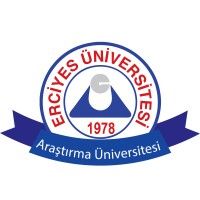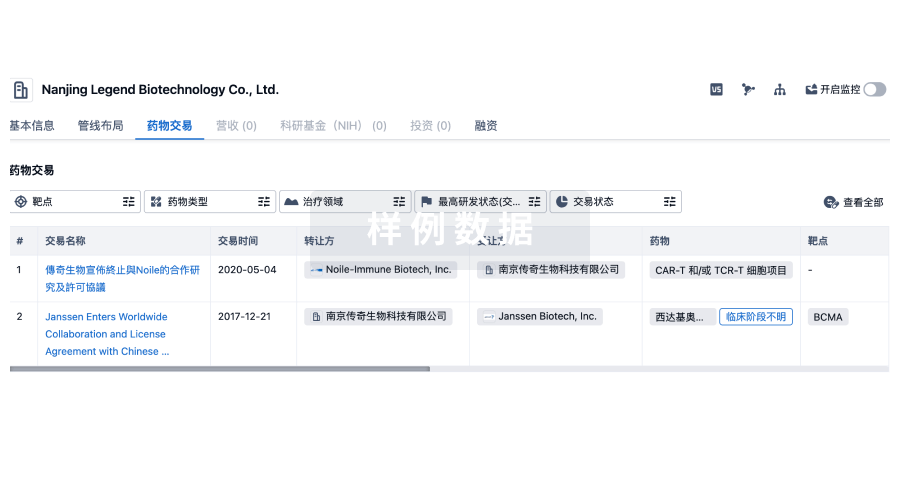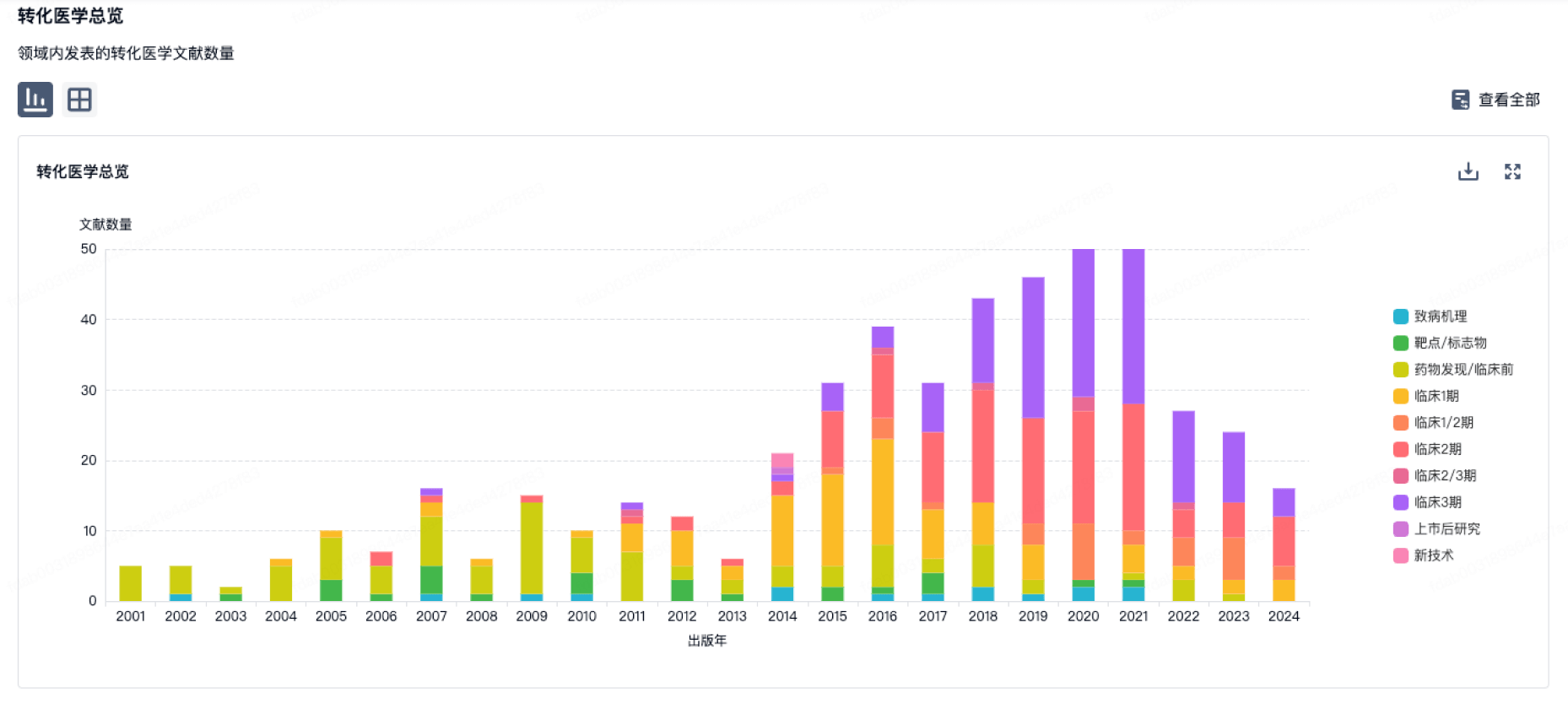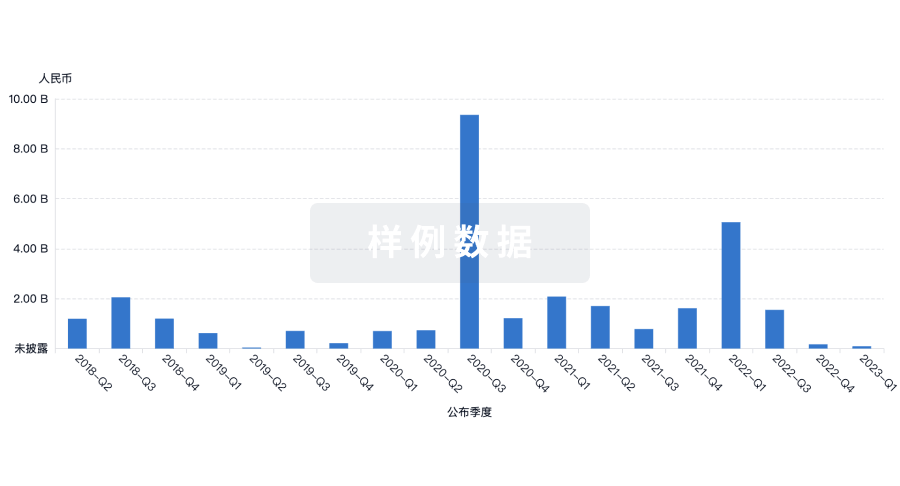预约演示
更新于:2025-12-08

Erciyes Üniversitesi
更新于:2025-12-08
概览
标签
神经系统疾病
口颌疾病
皮肤和肌肉骨骼疾病
间充质干细胞疗法
小分子化药
外泌体药物
关联
4
项与 Erciyes Üniversitesi 相关的药物靶点- |
作用机制- |
非在研适应症- |
最高研发阶段临床1/2期 |
首次获批国家/地区- |
首次获批日期- |
靶点- |
作用机制- |
最高研发阶段临床1/2期 |
首次获批国家/地区- |
首次获批日期- |
作用机制 E2F1抑制剂 [+2] |
非在研适应症 |
最高研发阶段临床前 |
首次获批国家/地区- |
首次获批日期- |
354
项与 Erciyes Üniversitesi 相关的临床试验NCT07007858
Effects of High-Velocity Passive Stretching Protocol on Spasticity, Functional Status, and Muscle Architecture in Children With Spastic Cerebral Palsy
One of the traditional exercises applied to cerebral palsy (CP) is passive stretching exercises. Passive stretching exercises can be applied to these patients at various speeds. A recent study has shown that high-speed passive stretching in children with CP can increase muscle bundle length in spastic muscles. Therefore, high-speed stretching exercises may potentiate the positive effects of BoNT-A treatment on spasticity and muscle fascicle in patients with CP.
This study aims to investigate whether fast stretching exercises administered to children with CP following BoNT-A injection are more effective than standard stretching in improving spasticity, functional status, and muscle architecture.
This study aims to investigate whether fast stretching exercises administered to children with CP following BoNT-A injection are more effective than standard stretching in improving spasticity, functional status, and muscle architecture.
开始日期2026-06-01 |
申办/合作机构 |
NCT06843382
Real-World Comparative Effects of Teriflunomide and Dimethyl Fumarate on Physical and Cognitive Fatigability in Multiple Sclerosis: The ROOF-MS Multicenter Prospective Cohort Study
This multicenter, prospective, real-world study evaluates how two commonly used oral disease-modifying therapies-teriflunomide and dimethyl fumarate-affect physical and cognitive fatigability in adults with multiple sclerosis (MS). Fatigability refers to an objective decline in physical or cognitive performance during sustained activity and represents a major barrier to daily functioning for many individuals with MS.
Participants starting either teriflunomide or dimethyl fumarate as part of routine clinical care will be followed for 12 months at regular visits (baseline, 3, 6, 9, and 12 months). At each visit, standardized assessments will measure walking endurance, gait performance, hand function, and information-processing speed. Patient-reported outcomes about fatigue, mood, quality of life, and daily functioning will also be collected. Brain MRI scans performed as part of usual care will be reviewed to document disease activity.
The goal of the ROOF-MS study is to understand whether these two therapies differ in their impact on physical and cognitive fatigability, functional outcomes, symptom burden, and real-world treatment adherence. Because this is an observational study, no experimental treatments are given, and all clinical decisions remain the responsibility of the treating physicians.
By examining fatigability in everyday clinical settings, this study aims to generate evidence that can help patients, families, and health care providers make more informed treatment decisions.
Participants starting either teriflunomide or dimethyl fumarate as part of routine clinical care will be followed for 12 months at regular visits (baseline, 3, 6, 9, and 12 months). At each visit, standardized assessments will measure walking endurance, gait performance, hand function, and information-processing speed. Patient-reported outcomes about fatigue, mood, quality of life, and daily functioning will also be collected. Brain MRI scans performed as part of usual care will be reviewed to document disease activity.
The goal of the ROOF-MS study is to understand whether these two therapies differ in their impact on physical and cognitive fatigability, functional outcomes, symptom burden, and real-world treatment adherence. Because this is an observational study, no experimental treatments are given, and all clinical decisions remain the responsibility of the treating physicians.
By examining fatigability in everyday clinical settings, this study aims to generate evidence that can help patients, families, and health care providers make more informed treatment decisions.
开始日期2025-11-20 |
申办/合作机构  Erciyes Üniversitesi Erciyes Üniversitesi [+2] |
NCT07112742
Evaluation of Short and Mid Term Effects of High Intensity Laser Therapy and Exercise in Thumb Osteoarthritis
One of the standard treatment methods in individuals with thumb osteoarthritis (OA) is exercise. Combination therapy options involving these exercises can be applied to patients. It has been demonstrated that high-intensity laser therapy is effective in terms of pain and function in patients with thumb OA.
The aim of this study is to investigate the effects of an exercise program combined with high-intensity laser therapy on pain, function, and muscle strength in patients with first carpometacarpal (CMC) joint osteoarthritis.
The aim of this study is to investigate the effects of an exercise program combined with high-intensity laser therapy on pain, function, and muscle strength in patients with first carpometacarpal (CMC) joint osteoarthritis.
开始日期2025-11-01 |
申办/合作机构 |
100 项与 Erciyes Üniversitesi 相关的临床结果
登录后查看更多信息
0 项与 Erciyes Üniversitesi 相关的专利(医药)
登录后查看更多信息
31
项与 Erciyes Üniversitesi 相关的文献(医药)2025-04-01·Journal of oncology pharmacy practice : official publication of the International Society of Oncology Pharmacy Practitioners
Real-world treatment outcomes from nationwide Onco-colon Turkey registry in RAS wild-type patients treated with biologics second-line mCRC
Article
作者: Tural, Deniz ; Yalçın, Şuayip ; Artaç, Mehmet ; Ökten, İlker Nihat ; Cicin, İrfan ; Yildirim, Mahmut Emre ; Arslan, Çağatay ; Alacacioglu, Ahmet ; Dane, Faysal ; Gumus, Mahmut ; Öven, Başak ; Bozkurt, Oktay ; Şendur, Mehmet Ali Nahit ; Karabulut, Bülent ; Çubukçu, Erdem ; Harputluoğlu, Hakan ; Geredeli, Çağlayan ; Ozcelik, Melike ; Çelik, Sinemis ; Açıkgöz, Özgür ; Karadurmuş, Nuri ; Türk, Hacı Mehmet ; Tanrikulu, Eda ; Sakin, Abdullah ; Kefeli, Umut ; Urakçı, Zuhat ; Karaca, Mustafa ; Çil, Timucin ; Bilir, Cemil
Backgrounds and Objectives:
Colorectal cancer is one of the leading causes of mortality both globally and in our country. In Turkey, we conducted a multicenter investigation into the effectiveness of second-line treatments and real-life data for patients with RAS wild-type metastatic colorectal cancer (NCT04757311).
Materials and Methods:
In this retrospective analysis, records from 28 centers were collected, and histopathological, molecular, and clinical characteristics were documented. Patients were categorized into groups based on their second-line biological treatments: anti-EGFR (Group A and Group B, panitumumab and cetuximab) and anti-VEGF (Group C, bevacizumab and aflibercept). They were then compared within these groups.
Results:
A total of 588 patients with documented RAS wild-type status were evaluated. The median OS was 15.7, 14.3 and 14.7 months in Group A, Group B and Group C, respectively (
p
= 0.764). The median PFS of the patients in second-line setting that received panitumumab, cetuximab and bevacizumab/aflibercept were 7.8, 6.6 and 7.4 months, respectively (
p
= 0.848).
Conclusion:
According to the results of our real-life data study, there is no significant difference in efficiency between the combination of biological agent and chemotherapy used in the second-line treatments.
2023-11-22·Journal of American college health : J of ACH
Response to “Factors associated with perceived stress in Middle Eastern university students”
Letter
作者: Ergenc, Burak G.
2022-06-01·Journal of Industrial Textiles
Multi-layered nanofiber membranes: Preparation, characterization, and application in wastewater treatment
作者: Maryska, Jiri ; Islam, Md Nazrul ; Yalcinkaya, Fatma ; Yıldırım, Bekir
Over the last few decades, micropollutants have been found in the natural surface water, and their presence poses a series of risks to living organisms in the aquatic biotope. Nanofiber membranes have been shown as a new strategy for separating micron-size pollutants due to their tight pore size and high water permeability. Here, a high-efficient multi-layered nanofiber membrane with improved mechanical strength was prepared using the lamination technique. First, polyamide 6 (PA6), polyacrylonitrile (PAN), and polyvinylidene fluoride (PVDF) nanofibers webs were selected. Then nanofibers were laminated on support under various temperatures. Prepared membranes were characterized using SEM, contact angle, pore size, and air permeability tests. The significance of lamination condition on membrane structure was investigated experimentally and statically. The membranes were examined for the treatment of synthetic micropollutants. According to the results, PAN and PA6 nanofiber membranes exhibited high water permeability (over 3000 L/(m2hbar)) under low pressure, whereas PVDF membranes showed zero permeability. Besides, the prepared nanofiber membranes could separate micropollutants from water with up to 99.91% separation efficiency. Prepared nanofiber membranes hold great promise for practical applications in environmental remediation.
3
项与 Erciyes Üniversitesi 相关的新闻(医药)2024-09-12
TIS2024第四届自免疾病细胞疗法与干细胞疗法论坛重磅来袭,点击图片查看重磅嘉宾,合作详询:王晨 180 1628 8769
(扫码立即报名获取TIS2024免费票)
本报告对外泌体的结构、分类、工程化技术、纳米递送系统的演变、商业应用、工业制备与质量控制分析、产业链上下游分析、产业驱动因素、市场容量、挑战与问题、代表公司等多方面进行了系统分析,为创业投资和产业发展提供了有力研究基础。
作 者 | 郭允乐、贾心语、王哲
编 辑 | 郭维、胡旭海、杨贺
邮 箱 | vdcapital@vdcapital.net
刊 号 | Vol.107
2013年,三位“外泌体“领域的科学家荣获“诺贝尔奖”,这也让“外泌体”这个名词进入大众视角,这是一种30-150nm的纳米级的脂质结构,自身对抗衰、修复、抑制炎症、美容等都具有非常显著的功效,并且它的穿透性极强、吸收更佳、无免疫原性,是一种非常优质的“活性物质递送系统”。
图1. 2013年诺贝尔生理或医学奖-外泌体
目 录
[向上滑动阅览]
1. 外泌体概述
1.1 递送系统的演变
1.2 外泌体结构与形成
1.3 天然外泌体
1.4 工程化外泌体
1.5 外泌体的功能应用
2. 外泌体的商业应用
2.1 天然外泌体疗法
2.2 工程化外泌体递送
2.3 外泌体偶联药物
2.4 医疗美容与护肤品
2.5 体外诊断/早期筛查
3. 外泌体的工业制备与质控
4. 外泌体产业链分析
5. 产业驱动因素与挑战
6. 外泌体产业市场分析
7. 国内外代表性公司
Vol.1
外 泌 体 行 业 概 述
1.1 递送系统的演变
随着治疗方式从“小分子”扩展到包括“核酸”、“多肽”、“蛋白质”、“抗体”、“核酸”、“活细胞”,活性物质的递送和吸收能力成为了新的挑战。
图2. 治疗方式的演变
现代药物递送技术始于1952年,诞生了Spansule (缓释胶囊)技术,到20世纪80年代,口服和透皮制剂为小分子药物提供了长达24小时的治疗持续时间,并主导了药物递送领域和市场;1989年,基于Lupron Depot (PLGA聚合物)的批准为长效注射剂和植入剂打开了大门,并出现递送各种小分子、多肽、蛋白质的系统的百花争艳;1990年第一个Adagen (PEG化蛋白)的问世标志着聚乙二醇化药物的新纪元,在过去的30年里已开发约20种聚乙二醇化蛋白药物,该技术从1995年的Doxil (PEG化脂质体)批准开始在纳米制剂中应用,在2018年批准了siRNA药物如Onpattro (PEG化LNP)、2021年批准了mRNA药物如Comiranty (PEG化LNP);2000年,美国政府推出了“国家纳米技术倡议”(NNI) ,被称为“纳米医学”,Mylotarg (ADC)、Doxil (PEG化脂质体)、Abraxane (白蛋白-紫杉醇复合物)成为纳米医学的典型代表;药物-聚合物复合物和偶联物中的ADC至今备受关注,2009年第一个抗体-药物偶联物Mylotarg (ADC)获批;2018年Onpattro (LNP)的获批打开了LNP递送系统的广泛应用,众多创业公司进入该领域,但还需要进一步的发展,如“内体逃逸”以实现胞质溶胶等;2017年首个眼科AAV基因递送药物Luxturna (AAV)上市,AAV等病毒递送系统进入了爆发期;2021年,exoIL-12(Exosome, 外泌体)率先进入人体临床试验,标志着外泌体递送系统进入了产业化的征途,虽然该产品由于某些原因暂停,但后起之秀ExoFlo™(Exosome, 外泌体)外泌体药物已处于临床III期,外泌体作为活性物质的递送系统将开启纳米医学和细胞与基因治疗的新篇章。
图3. 递送系统的演变
外泌体递送系统不同于传统递送系统,包含天然外泌体和工程化外泌体:
天然外泌体内部包裹了多种调节蛋白、microRNA和mRNA等天然活性物质,具有优异的治疗和美容效果,作为细胞治疗的“无细胞疗法”的重要手段。1)在医美护肤领域:ExoCoBio的干细胞外泌体已经于2018年上市销售,是世界首创将源于干细胞培养液的外泌体(ASC-EXOSOME™)成分冷冻干燥制成的产品,以具卓越的肌肤再生及抗炎效果为主要产品特征;国内“天津外泌体科技”的Y3系列美容产品已经获得欧洲的CE认证,可在欧盟进行大规模销售。2)在治疗药物领域:干细胞天然外泌体药物ExoFlo™中发现了多种蛋白和核酸物质,可替代干细胞治疗,处于美国III期临床试验;CAR-T细胞来源的EVs表达高水平的穿孔素和颗粒酶B以及CAR,有效地杀伤实体肿瘤。
表1 外泌体药物ExoFlo™中发现的调节蛋白
工程化外泌体是通过“基因工程”或“化学工程”对外泌体进行工程化改造以实现活性物质的靶向递送,可广泛递送小分子、多肽、蛋白、抗体、核酸等活性物质,具有增强的载药效率、靶向性、抵抗机体清除率等特点。工程化外泌体领域目前没有产品获批,作为药物治疗处于临床II期阶段,2023年3月,工程化外泌体代表企业Codiak由于产品开发失利而宣告破产保护,该领域开发具有一定挑战性。
1.2 外泌体结构及形成
外泌体(Exosome)是几乎所有细胞均可释放的、直径约30-150 nm的细胞外囊泡(Extracellular vesicle, EV),由细胞内多泡体(multivesicular body,MVB) 与细胞膜融合后,释放到细胞外基质中。
EV可分为Exosome (外泌体, 30-150 nm)、Ectosome (核外颗粒体, 100-1000 nm)、Apoptotic bodies(凋亡小体, 50-5000 nm)三大类。Exosome由胞吐作用(exocytosis)释放,Ectosome由质膜向外出芽(Outward budding)而分泌,Apoptotic bodies在凋亡后期由程序性死亡细胞释放(图4)。
图4. 细胞外囊泡亚型示意图
(Int. J. Mol. Sci. 2016, 17, 170)
在经典分泌途径中,带有蛋白质货物如胞外蛋白的囊泡在高尔基体(GOLGI)中分拣和包装,将其货物运输到质膜(PM),通过与质膜融合,膜蛋白和分泌蛋白都被有效地运输到它们预定的目的地(图5)。
各种类型的货物,如蛋白质、RNA等,也可以通过质膜向外出芽形成脱落的囊泡(核外颗粒体, Ectosome)方式运输到细胞外空间。货物通过细胞内吞作用(受体介导和自由摄取)摄取,形成初级内体(EE)。在初级内体(EE)中,货物要么被回收到质膜(PM),要么被封闭在多泡体(MVBs)的腔内囊泡(ILV,外泌体前体)中(图5)。
外泌体(Exosome)的形成始于初级内体(EE)的膜向内出芽,随后形成多泡体(MVBs)。在胞吐途径①中,多泡体(MVBs)与质膜(PM)融合,将其内容物(外泌体,Exosomes)释放到细胞外空间,外泌体货物运送到受体细胞可以通过直接与受体细胞膜融合(Membrane fusion),胞饮作用/吞噬作用(Pino- or phagocytosis),或配体-受体结合(Receptor binding)等各种机制发生;在降解途径②中,多泡体(MVBs)被运送到溶酶体(LS)进行酶辅助降解。这一途径对于抑制激活的生长因子受体的信号传导尤为重要(图5)。
图5. 不同类型EV形成通路
Extracellular protein-胞外蛋白;Receptor-受体;Cargo-货物: 蛋白、RNA等;Regular protein export/secretion-调控蛋白运输/分泌;Intraluminal vesicle (ILVs)-腔内小囊泡;Exosome-外泌体;Shed vesicle/Ectosome-核外颗粒体;PM-质膜;ER-内质网;EE-初级内体;LE-次级内体;LS-溶酶体;MVB-多泡体;GOLGI-高尔基体;NUCLEUS-细胞核;Exocytic pathway-胞吐途径;Degradative pathway-降解途径;(Int. J. Mol. Sci. 2016, 17, 170)
在外泌体的生成过程中,有几种蛋白密切参与,包括Rab GTPases、ESCRT蛋白,以及被用作外泌体标记的CD9、CD81、CD63、flotilin、TSG101、神经酰胺和Alix等。不同来源的细胞生成外泌体的速率、大小、组分(货物)均有异质性。外泌体腔内组分主要由mRNA、miRNA、gDNA片段、以及无数不同的蛋白质组成,这些组分类型取决于细胞的起源(图6)。
图6. 外泌体的组分和鉴定
外泌体作为细胞间物质交流和信号传递的途径,不同细胞间通过分泌携带有不同组分的外泌体实现通讯,这些分泌的外泌体被受体细胞吸收,通过释放内含物实现物质和信号的交流(图5)。
1.3 天然外泌体
使用不同细胞来源产生的“天然外泌体”已经在医美领域实现商业化,同步也正在进行多项药物临床试验,最快已处于临床III期试验,显示出不错的安全性和有效性。布局天然外泌体的代表企业包括ExoCoBio、天津外泌体科技、佰傲医学、Direct Biologics等,这些企业将是外泌体行业最先商业化的企业。
1983年,Pan和Johnstone在研究网织红细胞成熟到红细胞过程的研究里,在体外培养的绵羊红细胞培养液上清液中发现了一种从网织红细胞释放的囊泡,含有网织红细胞来源的脂质、蛋白质和酶,后来命名为“外泌体”。1996年,Raposo等发现B淋巴细胞分泌的外泌体携带MHC-Ⅱ类分子、共刺激因子和黏附因子。2007年,Lotvall和Valadi发现细胞之间可以通过外泌体中的RNA来交换遗传物质。2013年,诺贝尔生理或医学奖授予从事细胞内囊泡(外泌体)运输调控机制研究的3位科学家——James E. Rothman、Randy W. Schekman和Thomas C. Südhof,由此将外泌体研究推向了前所未有的新高潮。
图7. 细胞分泌外泌体图示
几乎所有类型的细胞,都可以产生并释放外泌体。根据不同生物来源分类,外泌体分为动物细胞外泌体、植物外泌体、微生物外泌体。
1.3.1 动物细胞外泌体
天然外泌体
哺乳动物细胞外泌体由几乎所有类型的“健康细胞”和“病理细胞”分泌,存在于不同的体液中,例如血浆、尿液、乳汁、唾液、羊膜、细支气管肺泡、滑膜以及腹水等。在循环外泌体中,80-90%来自血小板、淋巴细胞、树突状细胞、其他免疫细胞,通过循环系统到达其他细胞与组织产生远程调控作用。正是基于此,外泌体天然具有活性物质的递送功能(天然递送系统)和作为疾病的特异性生物标记物(诊断标志物)。
图8. 哺乳动物细胞外泌体
目前可通过GMP大规模生产获得动物细胞外泌体的主要包括:牛奶外泌体、人心脏祖细胞外泌体、骨髓间充质干细胞外泌体、脂肪干细胞外泌体、树突状细胞外泌体、HEK293细胞外泌体。
图9. 处于临床的外泌体种类和GMP生产
(Tzu Chi Medical Journal 2020, 32, 113-120)
1.3.2 植物外泌体
天然外泌体
植物外泌体(plant exosome)的形成区域通常始于反式高尔基体或者早期内体,随后形成多囊泡内体(MVEs)或者多泡体(MVBS),并选择性地将mRNA、miRNA、其他非编码RNA等多种RNA、脂质、DNA等结合进囊泡中,最终植物外泌体与质膜结合将内含物释放。植物外泌体体积小、组织穿透性强,在不同的酸碱度和温度下都能维持较好的理化稳定性,成为经皮递送、靶向给药、基因传递等递送理想载体。
目前,公开报道的植物外泌体研究包括葡萄外泌体、生姜外泌体、芦荟外泌体、人参外泌体、金银花外泌体、甘草外泌体、红景天外泌体、西兰花外泌体、葡萄柚外泌体、小麦外泌体、大蒜外泌体、蒲公英外泌体、洋葱外泌体等。研究发现,植物外泌体蕴含了植物中90%的活性成分,是植物有效成分浓缩的精华中的精华。1kg植物仅能提取1μg植物外泌体,而其活性却远高于1kg植物提取物。
图10. 植物外泌体或衍生的PELNV的生物功能
(Molecular Therapy. 2021, 29, 13-31)
植物外泌体含有较为丰富的miRNA,为一类长度约为22个核苷酸的内源单链非编码RNA,来自药用植物外泌体的miRNA可能作为新的生物活性成分与哺乳动物系统相互作用,外泌体作为中药活性成分的应用将越来越广泛。
1.3.3 微生物外泌体
天然外泌体
微生物外泌体的研究主要集中在细菌胞外囊泡(BEVs) ,其发现可追溯到20世纪60年代。BEVs类型多种多样,根据产生方式不同包括:革兰氏阴性细菌来源的外膜囊泡(outer membrane vesicles,OMVs)、古菌和革兰氏阳性细菌来源的细胞质膜囊泡(cytoplasmic membrane vesicles,CMVs)、外-内膜囊泡(outer-inner membrane vesicles,OIMVs)、破裂性外膜囊泡(explosive outer membrane vesicles,EOMVs)。
图11. 不同的途径导致形成不同的膜囊泡类型
(Nat Rev Microbiol . 2019, 17(1):13-24.)
BEVs直径范围为20-400 nm,影响多种生物过程,包括毒力因子的运输、DNA转移、噬菌体的拦截、抗生素和真核宿主防御因子、细胞解毒、细胞代谢物输出、细胞间通讯等。
BEVs与哺乳动物宿主细胞的相互作用多集中在肠道微生物菌群。肠道菌群积极促进肠道和远端器官的基本功能(相关阅读: 肠道微生态药物的发展和投资趋势)。在肠道生态系统中,微生物群与宿主之间的双向通讯不涉及直接的细胞接触。越来越多的证据表明,细菌分泌的BEVs通过向宿主细胞运输和传递调节宿主信号通路和细胞过程的效应分子来介导菌群功能,肠道微生物群释放的BEVs可能对健康和疾病有很大的影响。BEVs可能作为预防肠道感染或炎症和免疫相关疾病的治疗、营养策略,使用分离的BEVs将可能克服在免疫缺陷个体中使用活益生菌的潜在风险。肠道微生物群组成和多样性的失衡与包括癌症、神经、代谢和免疫紊乱在内的多种疾病有关,在患者和健康人群的血液和尿液样本中发现了肠道微生物群来源的BEVs,其特征与肠道微生物组高度相关,这为诊断提供了新的策略。
1.4 工程化外泌体
为了拓展其作为纳米递送系统的可能性,科学家通过生物工程、化学工程策略来设计并装载“工程化外泌体”,开发出了基于工程化外泌体的“纳米递送系统”。生物工程 (Biological Engineering)通过膜结合蛋白的遗传融合引入靶向基序,如多肽、蛋白、ASO等,代表企业有Codiak、Evox、唯思尔康、恩泽康泰等。化学工程 (Chemical Engineering)指通过“脂类化学反应”或“膜结合蛋白化学反应”或“脂质-脂质相互作用”安装不同的片段,如抗体、蛋白、适配体、小分子、聚合物等,代表企业有天津外泌体科技等。
图12. 工程化外泌体的表面修饰方式
根据外泌体纯化前还是纯化后进行装载分为三种装载方式:
内源装载 (Endogenous loading):对来源细胞进行生物工程改造,使其分泌工程化外泌体,也称Pre production;
外源装载 (Exogenous loading):先分离纯化好高纯度外泌体,进行负载改造,也称Post production;
Per production:在外泌体形成过程中,利用物理方法破坏-再造质膜而封装活性物质,挤压出细胞膜过程中装载上目标分子的“类EVs样囊泡”;
图13. 工程化外泌体的装载方式
(Advanced Drug Delivery Reviews. 2021, 178: 113972.)
1.4.1 内源装载
工程化外泌体
内源装载 (Endogenous loading) 是在分泌外泌体的细胞上做基因工程改造,让其产生携带目标分子的外泌体。例如,构建融合表达特定蛋白和外泌体膜蛋白的质粒,通过转染等方式,让该融合蛋白在外泌体来源细胞中大量表达,这些细胞分泌的外泌体就会携目标融合蛋白。RNA、蛋白质、核酸、各种小分子,都可以采用内源装载。不过,与外源装载相比,内源装载的实验难度更大、周期更长。
图14. 内源装载方式
(Crit Rev Biotechnol. 2020, 40(6): 804-820.)
1.4.2 外源装载
工程化外泌体
外源装载 (Exogenous loading) 的常用方法有孵育、超声透化、电穿孔、脂质体融合、化学偶联(点击化学)。
孵育是让待装载的分子与外泌体在一定条件下充分接触,依靠外泌体膜本身的疏水性被动完成装载。孵育法操作简单,不会破坏外泌体膜的完整性,主要适用于疏水小分子,装载效率受药物浓度影响,所需时间较长。
电穿孔是通过外加电场,在外泌体膜上形成临时的亲水性孔道,增加外泌体膜的通透性,使小分子物质能够穿过孔道进入外泌体内部。主要适用于装载亲水分子,过量投入外泌体有助于提高回收率。但会引起外泌体聚集,破坏外泌体膜的稳定性,也可能导致核酸药物本身聚集导致假阳性结果。
超声是利用探针超声仪对外泌体进行超声处理,使外泌体膜变形,产生瞬态小孔,增加膜的通透性,从而小分子物质扩散到外泌体中。主要用于装载亲水分子,装载后有些小分子物质也会附着于外泌体膜外侧。装载效率高于电穿孔和孵育,但对外泌体膜的损伤较大,可能导致外泌体破裂且实验重复性较差。
脂质体融合外泌体是实现活性物质直接装载的一种有希望的替代方法。为了控制和改变外泌体纳米载体的生物功能,京都大学Katsura通过用冻融技术融合脂质体和外泌体的质膜从而得到杂交的外泌体。特定遗传修饰细胞分泌的外泌体与各种脂质体融合,是非常有效的膜工程方法。如Lipofectamine含有脂质亚基,可在水环境中形成脂质体并捕获核酸,带正电的脂质体表面与带负电的外泌体质膜融合,随后释放核酸完成杂交外泌体的装载。也有研究单位利用穿膜肽(CPP)转染核酸药物到外泌体中,快速简便且高效。维渡纵横认为,脂质体融合外泌体技术与LNP的四组分原理有着异曲同工之妙,为mRNA和siRNA药物的发展提供了更广阔的空间。
图15. 脂质体融合外泌体
(Sci Rep. 2016, 25: 21933.)
化学偶联外泌体是最具商业化潜力的新兴技术,通过“脂类化学反应”或“膜蛋白化学反应”安装多种功能性分子,如多肽、抗体、蛋白、脂质、适配体、小分子、聚合物,在外泌体上进行可控、可调节的多功能化改造。化学偶联技术可控制功能化分子在外泌体上的“装载数量”与“装载位点”,实现多种功能化分子的“多元装载”,用于靶向递送、药物示踪等。值得注意的是,外泌体偶联药物(EDC)的高效Payload装载,突破了抗体偶联药物(ADC)载药率低、安全性有限的瓶颈。根据维渡纵横统计,天津外泌体科技有限公司(简称“天津外泌体科技”)可能是国内唯一掌握该技术商业化的公司,根据已发表文章显示其药物装载率达92.3%、溶解性提高71.4倍、半衰期提高36.2倍、药峰浓度提高3倍、 口服相对生物利用度提升2.6倍;装载Herceptin抗体的外泌体呈现靶向效果相比对照组提升174.5倍。
图16. 外泌体化学偶联技术
1.5 外泌体的功能
不同的细胞通过分泌携带不同组分的外泌体实现细胞间通讯,这些外泌体被受体细胞吸收,通过物质交换或释放内含物实现物质和信号的交流。
外泌体与受体细胞的信息交流可能通过以下四种途径实现:1)外泌体表面膜蛋白被目的细胞表面受体识别,激活靶细胞;2)外泌体在蛋白酶作用下产生的表面膜蛋白碎片作为目的细胞表面受体的配体;3)外泌体脂膜与目的细胞膜融合,将蛋白质和 RNA等内容物释放进去;4)目的细胞通过胞吞的形式摄入外泌体。
经由以上几种途径,外泌体将其携带的生物信息运输到靶细胞或经体液运输而被远端组织细胞摄取,进而影响目的细胞的基本功能和基因表达,这些外泌体参与了一系列生理和病理过程,如繁殖和发育、抗原呈递、免疫调节、组织愈合、感染、代谢和心血管疾病、神经退行性疾病、癌症发生发展等。
Vol.2
外泌体的商业应用
外泌体在美容抗衰、药物治疗、递送载体、体外诊断和科研试剂方面有着广阔的应用前景,其中美容护肤抗衰产品已率先实现了商业化。本章将详细阐述:天然外泌体疗法、工程化外泌体递送、外泌体偶联药物(工程化外泌体)、医疗美容与护肤、体外诊断早筛的商业化应用。
2.1 天然外泌体疗法
干细胞由于其旁分泌机制发挥治疗作用成为再生应用中最流行的外泌体细胞源。间充质干细胞、胚胎诱导的多能干细胞、组织特异性干细胞、初级前体和成熟细胞等分泌的外泌体都有案例成功应用于再生治疗中。同时,科学家也发现免疫细胞来源和肿瘤细胞来源的外泌体可用于肿瘤免疫治疗和开发肿瘤疫苗。
表2. 天然外泌体疗法全球临床进展
2.1.1 肺部感染和ARDS治疗
天然外泌体疗法
2021年3月,美国FDA批准Direct Biologics公司的干细胞外泌体药物ExoFlo™的IND申请,顺利进入临床I/II期试验。它是从人骨髓间充质干细胞中分离出来的细胞外囊泡型生物产品——外泌体,首发适应症为治疗中度至重度新型冠状病毒感染和急性呼吸窘迫综合征(ARDS)。根据Direct Biologics公司披露,ExoFlo™的II期临床没有出现不良事件(AE)和重大不良事件(SAE);ExoFlo-15ml组的死亡率具有统计学意义上的降低,与安慰剂组相比,在18-65岁的呼吸衰竭患者中,绝对和相对风险分别降低了30.8%和61.6%;在18-65岁的ARDS患者中,死亡的绝对风险和相对风险分别降低了41.9%和57.7%。2022年7月,ExoFlo™进入临床III期试验,2023年1月,ExoFlo™完成了400例患者的临床III期临床入组,是美国FDA首次批准应用干细胞外泌体用于疾病治疗的重大里程碑。ExoFlo™除了新冠感染治疗和ARDS适应症外,其他适应症包括克罗恩病、肠易激综合征、溃疡性结肠炎、器官移植排斥、下腰痛,处于临床I期试验阶段。
Direct Biologics公司认为ExoFlo™的成功源自公司的cGMP放大工艺和无菌工艺获得了超纯无菌外泌体;每毫升可提供超过100亿个外泌体带来了优异的功效;完美的质量控制使每一瓶外泌体都具有质量一致性。
图17. ExoFlo产品
西比曼的haMPC-Exos用于肺部感染处于IIT研究,入组了60例志愿者,正在瑞金医院开展(NCT04544215)。
肺损伤相关实验研究表明,干细胞外泌体具有积极的治疗作用。Vitti Labs的外泌体药物EV-Pure用于治疗肺纤维化和女性生殖障碍/原发性卵巢功能不全适应症已经于2022年10月进入临床I期(NCT05387239)。
2.1.2 心血管疾病治疗
天然外泌体疗法
干细胞外泌体的心脏保护机制已成为研究热点,越来越多的研究证实,干细胞外泌体具有与干细胞相似的心脏保护功能,能显著提高心肌细胞的存活率、抗心肌细胞损伤、促进新生血管形成、改善心脏功能、抗炎、抗心肌细胞凋亡、促进心肌细胞再生。外泌体具有较好的稳定性,较少引起受体细胞的突变以及免疫排斥反应,有望成为治疗心血管疾病的有效方法。
间充质干细胞外泌体在治疗心血管疾病如心肌梗死和心力衰竭方面具有巨大的潜力。《Stem Cells journals》发表了相关综述,讨论了间充质干细胞外泌体促血管生成、增强其生物活性改善心脏组织修复的方法。2022年4月,由Tehran University of Medical Sciences发起的Mitochondria and MSC-derived exosomes用于治疗心肌梗塞的临床试验正式开展,入组了20例志愿者来评估疗效(NCT05669144)。
间充质干细胞外泌体在缺血性心脏病中具有很好的疗效。发表在《BioMed Res》杂志的研究发现,间充质干细胞外泌体的注入抑制了缺血性心脏病疾病模型大鼠的心脏的纤维化和炎症反应,并且明显改善了心脏的功能。2021年9月,伊斯法罕医科大学的最新临床研究(NCT03384433)通过5例患者探索了携带miR-124的间充质干细胞外泌体对缺血性心脏病的临床治疗作用。
2.1.3 肝肾损伤治疗
天然外泌体疗法
肝脏疾病相关实验研究表明,干细胞外泌体具有保护和治疗作用,Du等研究证明干细胞外泌体通过激活SPhks和s1p信号通路保护肝脏免受肝缺血/再灌注损伤,促进细胞增殖;Li等研究发现干细胞外泌体可以通过抑制肝细胞上皮间充质细胞的转移和胶原蛋白的生成来改善肝纤维化。
肾损伤相关实验研究表明,外泌体中携带的miRNA和蛋白能够减轻肾缺血/再灌注损伤,减少细胞凋亡,促进细胞增殖,从而修复肾损伤。2022年4月,ILIAS Biologics公司的外泌体药物ILB-202进入了临床I期,靶向NF-κB用于治疗急性肾损伤。
图18. ILB-202机制
2.1.4 眼科治疗
天然外泌体疗法
外泌体可在泪液、房水、玻璃体液、血液等眼部体液中稳定存在,在调节眼部细胞迁移、增生、凋亡、免疫反应、血管生成等方面发挥重要作用,与角膜损伤、糖尿病视网膜病变、年龄相关性白内障、青光眼、年龄相关性黄斑变性、葡萄膜黑色素瘤等眼病关系密切。
Erciyes University的治疗产品Wharton jelly derived mesenchymal stem cell exosomes处于II/III期临床(NCT05413148),用于治疗视网膜色素变性。该研究于2022年8月开始,入组135例志愿者。
原生生物的间充质干细胞外泌体PSC-MSC-Exo处于IIT研究,用于治疗干眼症。中山大学脐带来源间充质干细胞来源的外泌体也处于IIT研究用于治疗干眼症。
2.1.5 肿瘤治疗
天然外泌体疗法
肿瘤细胞来源的外泌体通常包含一些肿瘤抗原,可以使抗原递呈细胞激活,故而外泌体可用于肿瘤疫苗的开发,且一些研究发现此类肿瘤疫苗具有很好的可行性和安全性。医药魔方数据显示,复旦张江的Chimeric exosomal tumor vaccine(嵌合外泌体肿瘤疫苗)目前处于临床I期研究,用于治疗膀胱癌。
图19. 外泌体在肿瘤免疫中的功能
免疫细胞来源的外泌体能够介导和调节机体对肿瘤的免疫反应,外泌体在肿瘤免疫治疗方面的潜力受到广泛关注。树枝状细胞(DC)产生的外泌体包含大量的MHC-多肽复合物和免疫刺激相关的分子,能够激活相关的T细胞,介导体内抗肿瘤应答,在多个临床试验中表现出良好的抗肿瘤疗效。CAR-T细胞来源的EVs表达高水平的穿孔素和颗粒酶B以及CAR,诱导表达其同源抗原的肿瘤细胞死亡,EV由于体积小,能够跨越生物屏障,可以有效地穿透实体肿瘤,该文章CAR-T-Derived Extracellular Vesicles: A Promising Development of CAR-T Anti-Tumor Therapy发表于《Cancer》(Cancers 2023, 15(4), 1052)。
图20. T淋巴细胞衍生的细胞外囊泡参与免疫反应
2.1.6 软骨损伤治疗
天然外泌体疗法
骨关节炎是临床常见病,以关节软骨损伤、软骨下骨硬化、滑膜炎症等为特征。近年来大量研究表明,干细胞外泌体具有抗炎、免疫调节、促进组织修复和再生等作用,是治疗骨关节炎和软骨损伤的新疗法,不同干细胞来源的外泌体对骨关节炎均能起到保护和治疗的作用。SF-MSC-EX用于治疗软骨损伤处于临床II期试验阶段( NCT05261360),该试验于2022年3月开展,入组受试者30例。Cells for Cells的CelliStem OA-sEV处于临床I期,用于治疗膝骨关节炎。四川大学华西医院的Autologous AdMSC-Exo治疗骨关节炎已开展IIT研究。
2.1.7 其他治疗
天然外泌体疗法
干细胞外泌体可以用于治疗脑卒中、糖尿病、卵巢早衰、克罗恩病、肠易激、皮肤相关疾病、移植物抗宿主病、伤口愈合等疾病。
2.2 工程化外泌体递送
外泌体的作用不断被发掘,广泛作为药物、医美护肤、疫苗的递送载体。外泌体载体作为“新型纳米递送系统”,综合了细胞药物递送和纳米技术的优势,一经发现就备受学术界和工业界关注。
外泌体作为递送载体具有诸多优势:a. 具有天然的靶向能力,通过工程化修饰,可靶向到特定的组织和器官,解决传统递送系统难以解决的靶向问题;b. 无免疫原性,包裹的核酸药物不易降解,降低药物全身暴露毒性;c. 外泌体是纳米级的,并携带细胞表面分子,具有克服生物屏障的能力;d. 可跨越血脑屏障,实现颅内药物递送;e. 奶源外泌体可将易降解药物制成口服制剂;f. 外泌体更容易储存;g. 作为天然纳米颗粒可降低安全风险(相关阅读:纳米递送系统行业研究报告)。
科学家通过内源装载或外源装载的技术手段(1.4 工程化外泌体),构建工程化外泌体,装载递送蛋白类、核酸类、多肽类分子实现创新药和疫苗(1类新药)、装载小分子化学药或中药有效成分实现老药新用(2类新药/505b2),提高患者用药效率、降低用药频率、联合用药提升治疗效果、减少全身暴露的副作用,是全球给予厚望的下一代革命性纳米递送载体。截至目前有5个工程化外泌体药物进入临床试验,1个处于IIT研究(表3)。
表3. 工程化外泌体全球临床进展
2.2.1 装载蛋白
工程化外泌体递送
CovenD24(也称EXO-CD24)由OBCTCD24 Ltd和Elpen Pharmaceutical Co. Inc.联合研制,用于抗新冠肺炎,共计开展了一个临床I期试验和4个临床II期试验(NCT04969172、EudraCT2021-002184-22、EudraCT2021-004259-17、NCT04902183、NCT04747574),先后共入组了526例志愿者,取得积极成果,超过90%的参与试验的新冠重症患者在5天内治愈出院。CovenD24是一种以外泌体为载体、内含CD24蛋白的药物,CD24主要通过与特定细胞受体结合,能够抑制免疫反应及细胞因子释放,抵抗COVID-19。但目前CD24这一靶点尚无新药获批,默沙东以4.25亿美元预付款收购的CD24-Fc融合蛋白药物(MK-7110)终止了新冠肺炎的临床III期试验,实体瘤适应症正在开展临床I/II期试验。所以CovenD24选择CD24或具有较大研发风险。
图21. CD24/Siglec-10信号通路
CD24与巨噬细胞上的Siglec-10互相作用,可抑制巨噬细胞对肿瘤细胞的吞噬,敲除CD24或Siglec-10,将促进巨噬细胞对肿瘤细胞的杀伤作用。CD24被认为是一种新型肿瘤免疫靶点,与明星分子CD47一样,也是一种肿瘤细胞“别吃我”信号蛋白。
exoIL-12™和exoSTING™由Codiak BioSciences研发,是基于该公司工程化外泌体技术平台engEx™ PLATFORM开发的两款产品,也是全球最先进入临床的工程化外泌体递送药物。该平台使用PTGFRN和BASP1作为支架蛋白,将靶向配体或治疗分子安装到外泌体的表面PTGFRN蛋白上或腔内BASP1蛋白上,达到运输至靶组织靶细胞和治疗疾病的作用。
图22. engEx™ PLATFORM外泌体递送平台
exoIL-12™是一种外泌体治疗候选药物,通过外泌体支架蛋白PTGRFN在表面展示完全活性形式的IL-12。回溯历史,白介素类产品通过激活T细胞和NK细胞具有强大的抗肿瘤免疫反应,但由于无法在局部持续保留、全身暴露引起严重不良事件,导致多个临床试验失败,特别是在刚刚过去的2022年,所以Codiak在外泌体全新领域再叠加风险极高的IL-12或将带来较大的研发风险。
小贴士
白介素临床失败案例
2009年11月,罗氏的重组IL-12(Ro24-7472)宣告II期临床试验失败;
2022年3月,BMS与Nektar合作开发的IL-2受体激动剂NKTR-214联合Opdivo治疗黑色素瘤的III期临床试验宣告失败;
2022年8月,Moderna停止开发靶向IL-2的治疗自身免疫性疾病的mRNA药物mRNA6231;
2022年8月,Codiak宣布暂停推进exoIL-12™的II期临床试验,具体原因未披露;
2022年9月,红细胞治疗先驱Rubius首发的两个产品RTX-224(IL12/4-1BBL)、RTX-240(IL15/4-1BBL)也是触碰了白介素的魔咒宣告I期临床试验失败并破产清算;
2022年10月,赛诺菲宣布终止偏向性IL2疗法SAR444245的II期临床试验;
2022年11月,IL-2/IL-15激动剂NL-201宣布临床I期失败,Neoleukin公司裁员70%;
2023年1月,默克转让IL-12类似物M9241给PDS Biotechnology。该分子于2011年进入临床I期,至今已开发12年,仍处于临床II期试验,可见白介素类产品开发的难度之大;
2023年2月,阿斯利康放弃IL-12产品MEDI9253的推进。
exoIL-12™适应症为皮肤T细胞淋巴瘤(CTCL),给药途径为瘤内注射。2020年12月,Codiak公布临床Ⅰ期试验达到了主要终点,55例健康志愿者中显示出良好的安全性和耐受性,没有局部或系统治疗相关的不良事件,也没有检测到IL-12的全身性暴露。2022年6月,Codiak公布CTCL试验部分,2例患者均得到治疗,每位患者在多个肿瘤病变处接受了20余次exoIL-12注射(6.0 μg),治疗时间大于6个月,未观察到3级及以上治疗相关不良事件。患者001表现出部分缓解,疾病负担减少61%,注射和未注射的所有皮肤病变CAILS评分的改善范围为20-80%,治疗医生认为不需要再注射。患者002注射了20次,疾病负担降低了43%,注射和未注射的所有病变的CAILS评分均有30-50%的改善。披露数据结果的同时宣布将于2023年第一季度启动II期试验,但2022年8月公司突然公告暂停exoIL-12™的临床II期,具体原因未披露。
图23. exoIL-12™的结构
exoSTING™是将STING激动剂纳入外泌体腔内,同时在外泌体表面表达高水平的PTGFRN蛋白,以促进肿瘤抗原提呈细胞的特异性摄取。该产品依然通过瘤内注射方式治疗头颈部鳞状细胞癌、三阴性乳腺癌、甲状腺间变性癌、皮肤鳞状细胞癌,2022年9月完成27例志愿者参与的临床I/II期试验。在所有剂量队列中,exoSTING耐受性良好,未观察到三级或更高级别的剂量限制毒性或治疗紧急不良事件,但在3例患者中观察到与治疗相关的不良事件(TRSAE)——2例二级细胞因子释放综合征、1例一级发热。在注射肿瘤和远端非注射肿瘤中观察到抗肿瘤活性的迹象。数据支持将exoSTING推进到II期临床,特别是在早期疾病中,与免疫治疗结合可能疗效增强。公司计划2023年第一季度启动临床II期试验,但2022年8月公司突然公告暂停exoSTING™项目。
图24. exoSTING™的结构
2.2.2 装载核酸
工程化外泌体递送
exoASO™-STAT6是在外泌体表面装载了针对STAT6转录因子的反义寡核苷酸(ASO),同时在外泌体表面表达高水平的PTGFRN蛋白以促进选择性靶向M2极化肿瘤相关巨噬细胞的摄取。该产品适应症为晚期肝细胞癌(HCC)、胃癌转移至肝脏、结直肠癌转移至肝脏,给药方式为静脉注射,处于临床I期阶段,入组30例志愿者,暂无临床数据披露。
图25. exoASO™-STAT6的结构
2.2.3 装载小分子
工程化外泌体递送
将小分子药物装载于外泌体有利于提高药物的稳定性、溶解度、生物利用度、靶向性等, 增强药物的有效性和安全性。小分子既可以装载在外泌体内部,也可以装载在外泌体表面,但需要筛选一些适合装载的小分子,方法有共孵育、挤压、超声、反复冻融、微流控、供体细胞共培养和再分泌以及下文提到的外泌体偶联药物。
目前已经有研究团队研究了外泌体装载紫杉醇、阿霉素、紫草素、青蒿琥酯等分子,表现出优异的效果,为后续新药的开发奠定了坚实基础。
图26. 牛奶外泌体-阿霉素的内部装载
(Journal of Extracellular Vesicle, 2021, 10 (13): e12163)
2.2.4 口服给药
工程化外泌体递送
牛奶是外泌体的可扩展来源,含有来自多种细胞来源的丰富外泌体,已经证明牛奶外泌体(MEs)是进化上保守的细胞外囊泡(EV),具有良好的稳定性和低免疫原性,显示出优异的跨物种耐受性。牛奶外泌体可以在胃中的强酸性条件和肠道中的降解条件下存活,保持结构的完整性,从而在局部或运输到循环系统后发挥作用。牛奶外泌体穿越胃肠道屏障的能力使其成为一种有前途的口服给药工具,已被广泛接受为运输多种生物分子和化疗药物的有前途的口服药物载体。
2023年3月11日,天津外泌体科技(Tingo Exosomes Technology Co., Ltd)开发出mRNA-牛奶外泌体新型口服递送系统,相关研究成果于发表于《Vaccines》。牛奶外泌体能够保护mRNA免受消化道酶和pH值变化等因素影响,基于这些特性,天津外泌体科技研发团队开发出高效mRNA-牛奶外泌体新型口服疫苗,初步实现SARS-CoV-2 RBD mRNA的口服递送。
图27. mRNA-牛奶外泌体新型口服疫苗
(Vaccines 2023, 11(3), 673)
2.3 外泌体偶联药物
2021年7月26日,Nature子刊Nature Biomedical Engineering在线刊发了中科院魏炜教授团队联合首都医科大学陶勇教授团队和昆士兰大学余迪教授团队共同署名文章,开发出外泌体偶联VEGF单抗,利用Treg来源的外泌体(rEXS)为载体,通过基质金属蛋白酶(MMP)敏感肽段(cL)连接VEGF抗体(aV),创建了rEXS-cL-aV体系。当玻璃体腔注射后,利用rEXS向炎症部位的趋化性,携带aV富集于眼底新生血管病灶,随后利用病灶部位高表达的MMP酶解敏感肽段cL并释放aV,在小鼠模型中证明其潜在成药性,疗效显著优于VEGF单抗,具备强大的市场潜力。
图28. 外泌体偶联VEGF单抗
(Nat Biomed Eng. 2021, 5(9): 968-982)
天津外泌体科技自主研发的“EXC外泌体生物靶向药物递送平台” (Exosome-Xenobiotic Conjugation) 已经实现Her2抗体负载的外泌体靶向递送,外泌体对Her2抗体的负载阳性率高达76%,抗体负载后的外泌体在37℃与4℃下被Her2阳性细胞摄取率分别高于对照组阴性细胞6.3倍与174.5 倍(相关阅读:天津外泌体实现外泌体外源装载靶向递送)。除了偶联抗体,天津外泌体科技使用小分子青蒿琥酯作为模型药物,实现了超过90%的装载率和包封率,每个外泌体可装载超过7×10E5个青蒿琥酯分子,实现了毫克级药物装载。该公司利用EXC平台设计并制备了首个EDC (Exosome-Drug Conjugation) 模板药物,外泌体表面化学偶联抗体和小分子,突破ADC药物载药率低、安全性有限的瓶颈。
图29. EDC相对ADC的潜在优势
2.4 医疗美容与护肤
“外泌体/细胞外囊泡”携带原细胞分泌的蛋白质、活性因子等高生物活性物质,激活细胞再生功能,渗入皮肤后释放囊泡包裹的营养物质,持续滋养,调整细胞微环境,增强细胞活力,进而促进细胞迁移,促进胶原蛋白及弹性修复损伤、细胞再生,恢复皮肤年轻态,在医疗美容与护肤品领域的应用非常有潜力。
韩国ExoCoBio(ASCE+™、EXOMAGE™ 和 CELLTWEET™)、佰傲医学(芙媄逸、绽媄娅、秘零)、远想生物(凝光E.R.T)、三禾医疗(奥永丽)、捍马医疗(奥本源)、天津外泌体科技(牛奶外泌体原料+Y3)、娇韵诗(光芒小瓷瓶)等公司的产品已陆续实现商业化落地。
图30 ExoCoBio外泌体美容护肤品的机制
2.4.1 皮肤修复
医疗美容与护肤品
2019年,ExoCoBio在Stem Cell Research and Therapy上发表了一篇科学论文,证明干细胞来源的外泌体可以显著改善“特应性皮炎”,抑制多种炎症靶点,促进伤口愈合,在世界上属首次系统化的报道。研究表明,干细胞具有旁分泌的特性,能够修复损伤组织、促进细胞生长及调节免疫反应,其分泌的外泌体作为细胞分泌的关键一环,可以通过大部分毛细血管到达远处损伤部位,并且可以与现有已知活性药物进行组合,增强疗效,促进炎症消除和伤口愈合。
“ASCE plus-SRLV”是世界首创将源于干细胞培养液的外泌体(ASC-EXOSOME™)成分冷冻干燥制成的产品,以具卓越的“肌肤再生”及“抗炎”效果为主要产品特征。产品组成为含有冷冻干燥的外泌体及多种有效成分的粉末安瓶及液态安瓶,使用时将两种安瓶混合后使用。ASCE plus外泌体可以减少55%的炎性细胞因子,促进7倍的胶原蛋白合成,以及增加3倍的弹性蛋白合成,达到皮肤修复再生、延缓衰老、改善痘肌、炎症等作用,从而全方面改善皮肤问题。2021年6月,ExoCoBio公司与biobijou公司合作进入中国市场。
图31. 美容产品ASCE+
2021年3月,梅奥诊所开展了一项《A Phase I Open-Label Trial to Determine the Safety of PEP on a Skin Graft Donor Site Wound》研究,入组了37例受试者,确定一种被称为PEP(一种源自美国人的聚集血小板的血液制剂)的生物制剂在有皮肤移植供体伤口的人中的安全性(NCT04664738)。
2.4.2 延缓衰老
医疗美容与护肤品
2019年,美国约翰霍普金斯大学科研团队研究发现,高度纯化的诱导多能干细胞来源的外泌体(iPSCS-EXO)用于培养活性氧(ROS)水平升高的衰老间充质干细胞时, 衰老间充质干细胞的ROS水平降低,衰老表型减轻。因此,来自人类干细胞的外泌体可以缓解干细胞在培养中的老化(Stem Cells. 2019, 37(6):779-790.)。
2020年7月7日,英国伦敦玛丽皇后大学Ana O’Loghlen 团队在《Cell Metabolism》(IF=21.567)发表了“Small Extracellular Vesicles Have GST Activity and Ameliorate Senescence-Related Tissue Damage”。研究指出,年轻细胞分泌的细胞外囊泡(sEV)可以通过减少氧化损伤来改善老年个体细胞的衰老,揭示了外泌体通过自身GST活性调节GSH/GSSG而影响细胞和器官的ROS积累,从而调控衰老表型。近期,该研究在《Nature Reviews Molecular Cell Biology》杂志(IF=55.47)上进行了Highlight推荐(Cell Metab . 2020, 32(1): 71-86.)。
2022年,Science Advances杂志上发表一篇文章,用来自年轻动物的脂肪间充质干细胞(ADSC)的小细胞外囊泡(sEV)治疗老年动物,发现通常随着衰老而改变的几个参数有所改善,例如运动协调性、握力、抗疲劳性、毛皮再生、肾功能、虚弱(Sci Adv. 2022, 8(42): eabq2226)。
图32. 外泌体的抗皮肤衰老作用
2.4.3 敏感肌修复
医疗美容与护肤品
据中山大学附属第三医院皮肤科副主任郑跃介绍,该院皮肤科从 2020年10月开始到2021年7月完成了一项临床试验,招募了44例不同类型皮肤敏感的患者,用涂抹式的外泌体舒缓修复敏感性皮肤。临床研究初步显示,外泌体对皮肤屏障有较好的修复作用,它对敏感性皮肤,特别是有红斑或者是有红区炎症的敏感性皮肤有较好的治疗效果,也就是反映了外泌体的抗炎作用。郑跃表示,临床试验结果认为,外泌体作为皮肤修复的手段之一,可以单独使用或根据皮肤状态和需求联合功效性护肤品、玻尿酸、光电等其他医美手段一同使用。
中山大学附属第三医院皮肤科主任赖维认为:外泌体免疫原性低,还含有抗炎成分等,除了修复敏感肌,还有抗衰老和皮肤美容的功能,可以满足敏感肌和衰老肌肤的修复、抗炎、舒缓及皮肤活力再生。
在科罗拉多州丹佛市举行的2022年美国皮肤外科学会(ASDS)上,梅奥诊所的Saranya Wyles 医学博士团队公布一项外泌体美容研究,招募了56名患者,平均年龄为 54岁,将外泌体产品应用于患者面部,6周后,面部发红的状况得到改善、血红蛋白过程改善 92%、不同年龄组的脉管系统也有所改善。特别是40多岁、50多岁和60多岁的患者,在发红和皮肤老化方面得到了持续改善。
2.4.4 美白淡斑
医疗美容与护肤品
娇韵诗参与的一项发表在Nature子刊上的研究发现:角质细胞释放的外泌体可以调节黑色素细胞的色素沉着,这种外泌体会携带有能力调节色素沉着的微小RNA与黑色素细胞进行交流。基于这项研究,娇韵诗发现了能够通过抑制外泌体中包含的信息来发挥美白淡斑效果的光滑金虎尾果提取物。目前,光滑金虎尾果提取物已在娇韵诗护肤品中使用,即娇韵诗旗下的美白产品光芒小瓷瓶的主打美白成分之一(Nature Communications. 2015, 24(6), 7506)。
2.4.5 生发
医疗美容与护肤品
法国化妆品原料商Silab与法国国家健康与医学研究院INSERM合作的研究发现,成纤维细胞外泌体在毛发生长中具有关键作用:真皮与毛囊之间的外泌体通讯是毛发生长的一条值得关注的生物学通路,来自成纤维细胞的外泌体能促进Norrin(一种能激活参与毛发生长的β-连环蛋白通路的配体)的分泌。Silab据此推出了一款能够作用于“真皮和毛囊之间的外泌体通讯系统”的天然生发成分HAIRGENYL®酵母提取物。
2022年4月,韩国外泌体生物技术公司ExoCobio推出ASCE plus-HRLV,这是世界上首个基于外泌体的防脱生发产品。
图33. ASCE plus防脱和抗皮肤衰老/抗炎作用
(Cells. 2020, 9(5): 1157.)
2.5 体外诊断/早期筛查
外泌体可在多种体液(例如血液、尿液、唾液、脑脊髓液)中检测到,其结构较为稳定、内容物丰富,携带大量特异性细胞因子、功能性mRNA、生长因子、脂类物质等参与细胞间物质运输和信息传递,与多种疾病的发生和发展过程密切相关。特定的蛋白质、核酸、信号分子、脂质等可反映细胞水平的异常,可被用作疾病诊断的无创或微创生物标志物。作为新兴体外诊断技术,在肿瘤肿瘤及其他多种慢性疾病的筛查和诊断等领域应用前景巨大。
2.5.1 肿瘤
体外诊断与早期筛查
外泌体已成为继循环肿瘤细胞(CTC)、循环肿瘤DNA(ctDNA)后液体活检领域研究的热点。相较于CTC、ctDNA两种检测方式,外泌体检测具有样本形式丰富、内含物更稳定两大优势,更易得到理想的检测浓度。
图34. 外泌体应用于肿瘤早筛的检测流程
2.5.2 中枢神经系统
体外诊断与早期筛查
外泌体作为一种由细胞分泌的、能够通过全身循环和局部扩散作用介导细胞间信息交流的载体,对CNS疾病的发生发展和传播以及治疗都有着重要的作用。外泌体源性miRNA能通过血脑屏障,稳定且不易被降解,敏感性高,有望成为CNS疾病早期诊断指标;但是,需要提高脑脊液或血液样本外泌体的获取效率和分离纯化,减少外泌体在提取过程中的分解。此外,外泌体在CNS疾病的发生、发展以及参与疾病的机制等尚需进一步研究。
2.5.3 感染疾病
体外诊断与早期筛查
外泌体参与细胞间信号传递、凝血、炎症和细胞内稳态等多种生物学过程影响感染性疾病的发生发展。越来越多的研究表明外泌体与感染性疾病的关联性,外泌体可能被用作感染性疾病的生物标志物,具有预防感染的可能性,多项研究表明外泌体可作为细菌感染、病毒感染(HIV、肝炎病毒、呼吸道病毒)及其它感染性疾病诊断标记物,揭示外泌体能够为感染性疾病的诊断、治疗及预防提供新思路。
2.5.4 心血管疾病
体外诊断与早期筛查
心血管疾病诊断的生物标志物主要是对已知心肌蛋白的靶向分析,肌酸激酶同工酶、肌红蛋白及肌钙蛋白等生物标志物目前已广泛应用于临床。肌钙蛋白是急性心肌梗死诊断的金标准,但对其他心血管疾病的诊断缺乏特异性。外泌体的成分和生物学内容物对细胞激活和损伤具有特异性,它们具有作为心血管疾病诊断和预后生物标志物的潜力。由于有些外泌体是在特定的应激条件或损伤条件下形成,因此循环系统中的外泌体逐渐被认定是心血管疾病的生物标志物的候选者。近年来研究发现外泌体miRNAs参与心血管疾病的生理和病理机制及外泌体miRNAs的临床应用已成为心血管疾病诊断研究的前沿和热点外泌体miRNAs作为急性心肌梗死、慢性心力衰竭和冠状动脉疾病等心血管疾病新的诊断性生物标志物有很好的研究前景。
2.5.5 呼吸系统疾病
体外诊断与早期筛查
外泌体miRNA在呼吸系统疾病的疾病标志物研究中有着广泛的应用,外泌体miRNA在特发性肺纤维化、慢阻肺、肺结核及哮喘等呼吸系统疾病的发病机制中具有重要意义,且它们具有非免疫原性和快速提取的特点,因此,外泌体miRNA有希望作为肺部疾病的一种新的诊断和治疗的生物标志物。
Vol.3
外泌体的生产与质控
外泌体行业已经到了大规模产业化的前夕,规模化生产和质量控制成为非常重要的一环。
3.1 生产工艺
产量低、回收率或纯度低、靶向特异性差,使得外泌体的大规模生产仍是阻碍其发展的主要瓶颈之一。实验室阶段的外泌体生产具有一定的局限性,一些开放性操作拓展至放大生产时会导致一系列挑战,因此需要一些创新性的技术来衔接,以支持更大规模的生产需求。
图35. 外泌体实工业化生产
外泌体的生产流程包括:外泌体的获取(生产)、分离、纯化、制剂。如果是外源装载外泌体还需要经过工程化后再纯化,再制备成相应制剂。
3.1.1 外泌体的生产
外泌体的生产工艺
来源于干细胞和293细胞等动物细胞外泌体的收获需要先进行大规模细胞培养,以生产获得含有外泌体的原料。牛奶外泌体的收获不需要细胞培养,直接从新鲜牛奶中即可获取,是一个高效、大量获取外泌体的来源,最容易产业化。植物外泌体需对植物进行提取获得外泌体原料。
干细胞外泌体的获取
干细胞是一种“贴壁依赖细胞”,具有贴壁依赖性,在二维表面上如T型方瓶、烧瓶、多层细胞工厂等培养系统已经相当成熟,但不足以满足未来商业化可行性的需要。贴壁细胞培养平台扩大生产的技术要素主要集中在最大化培养表面积上, Cytiva推荐基于3D微载体贴壁悬浮培养的工艺。微载体(Microcarrier)培养系统是贴壁培养和悬浮培养相结合的一种操作单元,具有比表面积大、允许环境参数监控、方便取样、易于放大、可在无蛋白水解酶的作用下实现细胞迁移等优点,既解决了2D贴附培养技术中的空间问题和在线监控问题,又解决了悬浮的均质问题。
图36. 干细胞3D微载体培养生产外泌体
来自马萨诸塞大学医学院的研究人员开发了一种稳健可放大的符合GMPs的间充质干细胞生产外泌体的方案,即生物反应器中基于3D微载体进行贴壁依赖性细胞培养并结合切向流过滤(Tangential Flow Filtration,TFF),使外泌体的产量提高了140倍,在治疗性siRNA转移至原代神经元的能力上具有7倍的活性。
在搅拌式生物反应器(SR)中使用微载体悬浮培养,可明显增加"贴壁依赖细胞"的培养效率及外泌体产量,适用于中试和大规模生产,但保持细胞和外泌体的表型不发生改变方面也存在挑战。当细胞从静态平面培养转移到动态3D环境时,搅拌和通气引起的剪切应力可能导致细胞及外泌体表型改变。有报道称,在转速为180 rpm生物反应器中培养T淋巴细胞引起IL-2受体下调,细胞扩增减少。剪切应力可诱导间充质干细胞p38丝裂原活化蛋白激酶和细胞外信号相关激酶的机械转导途径,导致成骨分化,进而改变外泌体表型。此外,限制高剪切动态系统中的细胞死亡以最大限度减少凋亡小体杂质至关重要(动物细胞来源外泌体生产中的细胞培养工艺. Cytiva思拓凡, 2022)。
HEK293细胞外泌体的获取
HEK293细胞是一种悬浮适应细胞,在病毒载体(如LV、AAV)的生产中被广泛使用,其无血清悬浮培养工艺已相对比较成熟。搅拌式生物反应器(SR)尤其适合悬浮适应细胞的外泌体生产,与其他悬浮适应的细胞系相比,HEK293细胞具有明显的结团倾向,通过使用抗结团剂纠正细胞的结团现象,可使细胞生长得到明显改善,单位体积外泌体产量提高8倍。
牛奶外泌体的获取
牛奶外泌体需从新鲜牛奶中提取制备,采用超速离心法(UC)或多种化学前处理方法去除乳蛋白,切向流超滤技术(TFF)进一步去除残留的乳蛋白,实现牛奶外泌体样品的初纯与浓缩。
植物外泌体的获取
植物外泌体与其他外泌体的提取方式类似,可适用如超速离心法、免疫亲和捕获法等传统分离方法;但由于植物细胞存在细胞壁和机械组织,必要时也可以考虑纤维素酶解等辅助手段。例如浆果类植物,如番茄、荸荠等富含水分,仅需通过传统的机械粉碎结合已有的外泌体提取技术即可实现对外泌体的有效提取。而对于非浆果类植物,如人参、田七等块茎类药用植物,外泌体直接提取较为困难,需采用酶解等样品前处理手段。
3.1.2 外泌体的分离纯化
外泌体的生产工艺
外泌体分布在极其复杂的体系中,单一方法很难获得高纯度的外泌体,需要利用外泌体的不同物理化学和生化特性进行多方法的联合,这使得高产量的外泌体分离纯化非常具有挑战性。对于外泌体的分离纯化,可以通过确定的程序,超速离心法、超滤法、免疫亲和层析、基于电荷中和的聚合物沉淀法、尺寸排阻色谱、微流体技术、切向流过滤来完成产品的分离纯化(Theranostics 2020; 10(8):3684-3707)。
超速离心法
超速离心法可分为“密度梯度离心法”和“差异超速离心法”两大类,该方法是公认的外泌体分离金标准方法。超速离心法需要昂贵的设备和训练有素的技术人员,特别是对于梯度超速离心。同时,分离的外泌体的结构和生物学功能可能会受到长时间的超离心力的影响,不利于下游应用(例如样品中的高水平蛋白质聚集体和脂蛋白污染不利于外泌体的功能研究和药物开发),超滤和尺寸排阻色谱法可以弥补此类问题。
超滤法
超滤可以使用具有不同分子量截止值(MWCO)的超细纳米过滤膜从样品中分离细胞外囊泡,并通过大小区分外泌体和核外颗粒体。与超速离心方法相比,大大缩短了处理时间并不需要特殊设备。重要的是,通过轻松调整滤光片大小,超滤允许研究人员对具有定义粒径的细胞外囊泡(包括外泌体)的特定亚群进行分类。该方法包括串联配置的微滤器和顺序超滤两种。
图37. A.微滤器;B. 顺序超滤
运行模式包括直流过滤(DFF)或切向流过滤(TFF)。
图38. 切向流过滤示意图
DFF对于采用离心式装置的较小流量(最多30mL)处理过程效果较好,但DFF技术会受到膜堵塞问题的不良影响。为了减少胶质层的形成,可使用浮动式搅拌棒配置(搅拌槽)或通过生成一个受控的层流,在膜片的上游侧生成交叉流。搅拌棒运行可改善超滤效果,但在获得最佳性能方面仍有局限性。因为搅拌速度和时序水平取决于棒体摆动范围,而此范围会随着摆动半径的改变而变化。
切向流过滤(TFF)是一种应用于生物分子分离和纯化的快速有效的方法。该方法可用于各生物领域,例如免疫学、蛋白质化学、分子生物学、生物化学和微生物学。TFF可用于对容量从10mL到数千升的样品溶液进行浓缩和脱盐处理。此方法可用于分馏大小不一的生物分子、获取细胞上清液,以及对发酵培养基和细胞裂解物进行澄清处理。
图39. 切向流过滤设备
由于效率高、设备成本低、操作快速、便携性良好、可达到中等纯度等优点,超滤越来越受欢迎。但在过滤过程中,其剪切应力会引起的潜在劣化;并且可能由于堵塞和膜捕获而造成原料的损失。
尺寸排阻色谱法
尺寸排阻色谱法(SEC)能够以最小的结构损伤分离外泌体,不会影响囊泡结构和完整性,能够保存分离外泌体的天然生物活性。在过去的50年中,各种细小的多孔材料,如葡聚糖聚合物(Sephadex)、琼脂糖(Sepharose)、聚丙烯酰胺(Sephacryl或BioGel)等被运用到SEC的优化中。
图40. SEC尺寸排阻色谱法示意图
该方法易于扩展和自动化,用于高通量外泌体制备。但设备成本相对较高,需要额外的外泌体富集方法。
高度亲水的聚合物与外泌体周围的水分子相互作用,产生疏水性微环境,导致外泌体沉淀。现有的基于聚合物的外泌体沉淀方法通常采用分子量为6000至20000 Da的PEG。该法易于使用、设备需求低、样品量兼容性高、效率高、可分离蛋白质聚集体、其他细胞外囊泡、聚合物污染物的污染物。但所需的处理时间较长,需要复杂的清理步骤,会影响下游分析和定量的结果。
免疫亲和力捕获法
免疫亲和力捕获法是识别外泌体特异性标志物的抗体(固定在固体表面上)和外泌体的流体一起孵育富集外泌体,通过额外的洗脱步骤收集外泌体。外泌体标志物如Rab5、CD81、CD63、CD9、CD82、膜联蛋白和Alix等跨膜蛋白已被广泛用于商业化选择性外泌体分离。该方法具有较高的捕获效率和灵敏度,而且还可容纳较大的起始样品量;此外,该方法可以通过检测分离的外泌体上的疾病特异性标志物如EpCAM,CD133,EGFR直接转化为诊断平台(外泌体纯化工艺挑战盘点. 医麦客, 2022)。
图41. 免疫亲和力捕获法示意图
该方法相关的非中性pH和非生理洗脱缓冲液可能会不可逆地影响所收集的外泌体的生物学功能,寻找对外泌体损伤更低的洗脱液,另外该法产量较低、抗体基成本较高的问题,化学抗体或许是下一步的改进方向。
微流体技术
微流体技术可分为“基于免疫亲和力的微流体分离技术”、“基于尺寸的微流体分离技术”以及“非接触式微流体”。微流体技术结合了外泌体分离和分析,将含外泌体的流体添加到介质中后,根据细胞外囊泡的物理和生化特性,分离外泌体,可以从少量体液中快速分离外泌体,并进行实时外泌体表征分析以进行原位诊断。该方法高效方便,但只适合小样本分离。
3.2 质量控制
作为新型生物制品,目前没有专门针对外泌体质量控制的法规和指导原则。但外泌体是细胞产物,其质量控制与指导原则可参照细胞产品相关原则。针对细胞治疗和细胞相关产品,FDA于2016年发布了“Content and Review of Chemistry, Manufacturing, and Control (CMC) Information for Human Somatic Cell Therapy Investigational New Drug Applications (INDs)”,该指导原则就细胞库、生产过程中添加的各物料等在生物安全性、产品质量稳定性进行详细指导。此外,ICH发布的Q5A(R1)、Q5A(R2) EWG对细胞产品中外源病毒检测提供了指导意见。国家药品监督管理局于2017年发布了《细胞治疗产品研究与评价技术指导原则》及相关问题解读,该指导原则对细胞治疗及其相应产品在使用血清及其它物料、细胞库等存在风险进行评估指导。外泌体作为细胞代谢过程中的产物,产品的质量与宿主细胞的质量息息相关,诸多文献对外泌体GMP级生产流程进行优化和质量监控,主要包括上游细胞安全生产检测和下游外泌体生产检测。
图42. GMP生产外泌体流程及质量监控图
3.2.1 细胞安全生产
外泌体的质量控制
2022年10月31日,国家药监局核查中心官网正式发布备受关注的《细胞治疗产品生产质量管理指南(试行)》,指导药品上市许可持有人规范开展细胞治疗产品的生产和质量管理,保证产品质量,同时,这也为细胞治疗药物研发企业提供了更清晰的研发、生产和发展路径。细胞制备应满足《中华人民共和国药典》、《药品生产质量管理规范》、《药品注册管理办法》、《药品生产监督管理办法》、《药品生产质量管理规范》及其附录、《药品注册核查管理规定》、《药品不良反应报告和监测管理办法》、《药品召回管理办法》、《药品说明书和标签管理规定》、《药品生产企业现场检查风险评定原则》、《医疗废物管理条例》、《病原微生物实验室生物安全管理条例》。
对细胞安全生产的基本要求:有细胞采集、加工、检定、保存和临床应用全过程的标准操作程序(SOP)和完整的质量管理记录;整个过程必须遵循细胞产品质量控制标准(QC),并拥有与其配套的检测设备和检测方法;细胞库的细胞必须保证可溯源;按照批准的细胞产品质量控制标准对每批次细胞产品进行严格检测,包括细菌、真菌、支原体和内毒素。
3.2.2 外泌体生产检测
外泌体的质量控制
外泌体生产纯化过程中涉及到的关键设备、仪器、耗材及试剂,包括超速离心机、纯化仪、填料、移液管、离心管等,都应由符合GMP要求;同时应定期检查耗材的储存及有效期是否符合要求,保证所用原料、试剂与耗材的安全有效;最终产品质量严格遵循《细胞治疗产品研究与评价技术指导原则》对其进行相应检测。
图43. 外泌体质量控制项目
目前亟需对不同分离方法在外泌体回收效率、纯度、蛋白标志物、装载药物量等方面进行评价,制定统一的流程和标准。科学家使用NanoFCM对不同样品外泌体用不同纯化方法纯化进行了研究,NanoFCM可在单颗粒水平对外泌体的颗粒浓度、大小、纯度、蛋白等进行表征,研究纯化方法对外泌体的影响,优化外泌体的纯化过程,有望为建立标准有效的外泌体分离和质控方法提供表征手段。
Vol.4
外泌体产业链分析
外泌体产业处于起步阶段,尚未形成完善的产业链格局。产业链上游为原材料、设备、服务供应商;中游为外泌体治疗药物、医美产品、诊断试剂供应商;下游为流通和应用终端。
图44. 外泌体行业产业链分布
4.1 产业链上游
产业链上游主要为1)细胞培养、奶源供应、植物原材料、微生物原材料等,通过培养、提取、分离纯化获得外泌体原料的相关企业;2)过程中相关的制造设备、试剂、耗材,以及提供外泌体CRO与CDMO服务的相关企业;3)外泌体检测检测领域的上游供应商还包括提供抗原、抗体等试剂原料及设备部件的相关企业。
目前国内主要制造设备、试剂和耗材仍以进口为主,跨国企业仍处于垄断地位。对于大规模外泌体原料的供应商和CDMO服务商,国内主要以天津外泌体科技(牛奶外泌体、干细胞外泌体、293细胞外泌体)、思珞赛等企业为代表;外泌体CRO服务主要以恩泽康泰、天津外泌体科技、思珞赛、宇玫博生物等为代表。
4.2 产业链中游
产业链中游为利用上游供应商提供的原材料、设备、耗材、试剂进行外泌体相关治疗、美容、诊断等产品的研发、生产、销售。目前外泌体领域处于起步阶段,全球约50余家从事外泌体相关产品开发的公司。
目前,国内外只有医美和护肤品上市销售,国外以韩国ExoCobio为代表,国内以佰傲医学、天津外泌体科技等公司为代表。
新药研发、诊断试剂均处于临床研究和临床前研究阶段,国外以ExoFlo、Codiak、Aegle、Exopharm、OBCTCD24、ILIAS、Evox、Exosome等为代表;国内以唯思尔康、纽兰生物、汇芯生物、安龄生物、亿微生物等为代表。
4.3 产业链下游
产业链下游为流通与终端机构。终端主要包括治疗药物面向的医疗机构、医美产品面向的医美机构、诊断产品面向的三方医检机构和医疗机构,以及护肤品面向的经销商(包括电商平台)和个人消费者。
Vol.5
产业驱动因素与挑战
5.1 产业驱动因素
5.1.1 基础研究突破
外泌体产业驱动因素
随着细胞外囊泡(EVs)运输调控机制研究的清晰,以及“精准外泌体”概念的提出,全球外泌体研发持续升温,有关外泌体载药、外泌体疗法、诊断和早筛等方向的研究成果陆续发表在Science、Nature等各大顶级期刊上,论文发表数量呈近爆炸式增长,近年平均每年外泌体相关论文都在3000篇以上,2019年为3279篇,2020年为4295篇,2021年5074篇,2022年为5204篇;国内2020年度国家自然科学基金申请项目的评审结果中,外泌体相关课题中标达到2000余项。外泌体已成为生命科学和基础医学研究的一大热点,为外泌体的应用与产业化探索奠定了坚实的基础。
图45. 外泌体学术研究成果发表情况
5.1.2 跨国药企布局
外泌体产业驱动因素
外泌体产业的商业运用引起了大型跨国药企的注意,新兴的生物技术公司与大型跨国药企产业化合作的态势逐渐明朗。以礼来、武田、爵士制药为代表的大型跨国药企已经分别与拥有外泌体创新技术平台的公司达成多项高额合作,接连签署数笔10亿美元级大额合作开发协议,共同开发外泌体靶向疗法。
爵士制药:2019年1月,爵士制药与Codiak达成了以外泌体载药为核心的血液系统恶性肿瘤和实体肿瘤的新药研发合作。爵士制药同意向Codiak支付5600万美元的研究经费,并为合作的五个新药项目支付高达2000万美元的临床前开发里程碑付款,若项目实现约定里程碑,则每一个靶标再支付2亿美元款项。在I/II期临床试验结束后,爵士制药将负责后续的临床试验、新药申请以及商业化推广。
礼来制药:2020年6月9日,礼来公司与Evox达成一项12亿美元的合作协议,利用其技术平台开发递送RNA干扰药物和反义寡核苷酸药物(ASO)的工程化外泌体,治疗中枢神经系统疾病。
武田制药:2020年3月,武田也与Evox公司达成一项8.82亿美元的合作,利用外泌体递送蛋白质及mRNA核酸药物,治疗包括C型尼曼-皮克病在内的罕见病。Evox将负责推进临床前研究并进行临床试验的申请。
5.1.3 应用价值驱动
外泌体产业驱动因素
外泌体本身可以做为药物、美容护肤产品的活性成分,又可以做为小分子、蛋白、核酸等活性物质的纳米递送系统,还可以被用于诊断和早筛的无创或微创生物标志物,应用前景非常广阔。开启了纳米医学产业、细胞与基因治疗产业、医美与护肤产业和体外诊断产业的新篇章。
5.1.4 政策驱动
外泌体产业驱动因素
2022年5月10日,国家发改委印发《“十四五”生物经济发展规划》,“外泌体治疗”首次进入国家经济发展规划,在《生物经济创新能力提升工程》专栏关于“关键共性生物技术创新平台建设”中提到:围绕加快创新药上市审批、强化上市后监管,建设药品监管科学研究基地,建设抗体药物、融合蛋白药物、生物仿制药、干细胞和细胞免疫治疗产品、基因治疗产品、外泌体治疗产品、中药等质量及安全性评价技术平台。
5.1.5 商业化驱动
外泌体产业驱动因素
随着细胞与基因治疗产业的不断发展和成熟,外泌体产业的上游商业化技术不断完善,为外泌体产业奠定了商业化基础。
图46. 微载体大规模细胞培养生物反应器
外泌体领域率先在医美和护肤品方面获得突破,产品全球销售,打开了产业化的大门;多种外泌体药物和外泌体诊断试剂也处于人体临床试验阶段,最快已处于III期临床,在安全性和有效性方面获得了一致认可。
5.2 问题与挑战
2023年,张琪、于湄、刘磊、田卫东等在《中国组织工程研究》发表了“工程化外泌体研究现状与临床转化的挑战”, 阐述了外泌体产业面临的一些问题和挑战(中国组织工程研究,2023,27(19):3052-3060)。
5.2.1 亲本细胞选择与培养
外泌体产业问题与挑战
目前,对于外泌体生产的最佳技术暂时还未达成共识。
亲本细胞的选择构成了外泌体生产的首要关键步骤,不同的细胞生产的外泌体生物学特性有差异,研发人员需要根据外泌体的活性和组织归巢特性以及潜在的免疫原性和致癌性来选择亲本细胞。
培养过程中的微小变化可能会改变外泌体的生物学特性。即使来源于相同的亲本细胞,由于培养条件的变化,比如亲本细胞的代数、培养方式、培养基等变化,最后得到的外泌体也有可能不同,这也是外泌体生产过程需要考虑的关键问题。从生产过程安全性的角度来看,最好使用封闭式系统,但这比开放式系统更难监控。牛奶来源的外泌体是获得大量生物相容性外泌体的有效替代来源,从复合牛奶中大规模获取外泌体更加适合工业化生产。
5.2.2 分离纯化工艺
外泌体产业问题与挑战
外泌体的分离纯化也是一个不容忽视的关键程序。不同的分离提纯方法得到的外泌体产量差距悬殊,外泌体亚群也有所不同,这为质量控制带来了挑战。目前亟需对不同分离纯化方法在外泌体回收效率、纯度、蛋白标志物、装载药物量等方面进行评价,制定统一的流程和标准。
5.2.3 成分表征
外泌体产业问题与挑战
外泌体的表征集中在测量颗粒大小和数量,以及检测特定的表面蛋白和货物。透射电子显微镜成像是表征外泌体结构和大小的标准方法。此外,扫描电子显微镜和动态光散射可以对外泌体进行表征。合格的体外表征与量化可以预测载药外泌体系统的预期治疗潜力,但是至今仍然缺乏外泌体量化以及分子和物理特征描述的金标准,寻找开发外泌体最佳表征与量化方式是目前研究中不可忽视的一部分。由于外泌体的大小和复杂性,现有技术可能会限制工程化外泌体产品的物理化学、免疫化学或功能的细节表征,有限的产品表征能力也对工程化外泌体产品的机制理解有一定影响。
5.2.4 质量控制
外泌体产业问题与挑战
外泌体这种复杂程度的物质和构造只能由活细胞产生,面临一定程度的内在生物变异而导致产物的异质性,异质性既受细胞内的生物加工影响,也受制造工艺的影响。如培养条件(细胞传代、细胞密度、外泌体收获频率)会影响产物质量的各个方面,包括产量、外泌体组成、外泌体生物活性。
在外泌体生产过程中检测和评估产品质量的变化比在蛋白和抗体生产过程中更具挑战性。由于微小的变化可能对产品质量和活性产生相当大的影响,外泌体制造过程的稳定性比细胞和抗体生产过程的稳定性要低,但外泌体制造仍可以建立在这些工艺的基础上。外泌体的大小、成分、结构的复杂性是独一无二的,因此需要额外的程序对外泌体生产进行控制。这些过程可能包括测量大小和浓度、排除污染物、识别功能标记物和评估载药量以评估每一数量的外泌体的治疗活性等措施,以确保外泌体终产品满足先前确定的关键质量属性。
5.2.5 存储稳定性
外泌体产业问题与挑战
外泌体建议在-80℃下存储,其大小和数量在-80 ℃下保持不变,潜在问题是有可能造成一些生物活性的改变以及储存和运输的成本相对高昂。另有研究表明,在4℃下储存会对外泌体结构造成聚集和损坏。
科学家们提出了其他的替代方法。WU等提出将外泌体保存在GelMA水凝胶中可减少外泌体聚集,达到保存外泌体的目的。另一种较常见的保存方法是冷冻干燥,冻干的外泌体可以在室温下储存,且能够保持外泌体的囊泡大小和蛋白质含量、结构完整性、生物活性、运送药物分子的药代动力学等关键属性,效果可以与新鲜外泌体媲美。
5.2.6 产品安全性
外泌体产业问题与挑战
纳米药物可能会导致一些不良免疫反应发生,比如过敏反应、细胞因子释放综合征、生物活性的中和、与内源性蛋白对应物的交叉反应和非急性免疫反应等。因此,对工程化外泌体的安全性和有效性加以证明对研究人员来说是一项挑战。
目前,产品制造商被要求注明药物中所有能够引起药理、免疫或新陈代谢作用的物质,并且在最终配方中使用的非活性成分 ( 称为赋形剂 ) 也应予以申报。国际胞外囊泡协会声明,如果整个治疗效果可以归因于外泌体负载的药物,而不是载药外泌体系统中的外泌体,则外泌体可以被视为赋形剂。在这种情况下,仅需要外泌体的安全性描述,而不需要描述其作用方式或机制。如果安全和质量标准均充分达到要求,并且提供了可信的作用方式和机制,则可以允许进行人体临床试验。
同种异体外泌体、异种外泌体要转化为安全有效的临床治疗产品,需要通过持续监测来严格把控亲本细胞的选择、免疫学、致癌效应的评估以及病毒污染的风险等问题。监测方法的选择特别是灵敏度,是确定外泌体药物载体临床转化的关键挑战之一。目前,监管机构尚未发布关于如何测试外泌体的安全性和有效性的指导意见,因此需要对现有的测试方法进行改进或者寻找新方法对工程化外泌体的安全性和有效性进行证明。
5.2.7 工程化外泌体成药性
外泌体产业问题与挑战
天然外泌体已经在美容护肤领域上市销售,药物领域也进入临床III期,其商业价值和成药性确定性很高。
工程化外泌体主要是发挥其递送活性成分的优势,搭载“何种活性成分”直接影响药物的成败,Codiak的临床管线暂停对行业信心影响较大。Codiak作为工程化外泌体载药的标杆企业一直备受关注,先后解决了外泌体骨架蛋白筛选、内源装载技术、规模化生产等难题。2022年Codiak首发进入临床的两个药物管线分别为exoIL-12™和exoSTING™(详见章节2.2.1 装载蛋白),治疗方式为“瘤内注射”。2022年中公布了临床I期实验结果:exoIL-12™安全性良好,临床Ⅰ期试验均达到了主要终点,并且2例患者均得到治疗,表现出部分缓解。exoSTING™未观察到三级或更高级别的剂量限制毒性或治疗紧急不良事件,在3例患者中观察到二级细胞因子释放综合征和一级发热。结果均支持产品推向临床II期,但Codiak于2022年8月宣布暂停推进两个产品的II期临床,股价暴跌,2023年3月27日宣告申请破产保护,引来业界轩然大波,并引来“工程化外泌体作为纳米递送载药系统是否能顺利商业化”的大讨论。
维渡纵横推测,Codiak暂停两个产品的临床II期而导致申请破产保护,可能有以下几方面的原因考量:
破 产 保 护 可 能 原 因
首先,其装载的活性成分具有一定挑战:IL-12的人体临床试验多以失败告终,从2022年至今有8个产品宣告失败被放弃,并且创业公司Rubius因此破产清算,令人望而却步;STING激动剂可能在直接瘤内注射时有散开风险,对后续临床试验失败风险或有顾虑;出于风险考量暂停产品的II期临床开发。
其次,两个产品均为“瘤内注射”产品,或可能存在一定局限性。
再次,Codiak是由风险投资机构Flagship Pioneering推动成立的公司,Flagship同样也是Rubius的大股东。鉴于Rubius刚刚在白介素领域(IL-12和IL-15)的失利导致资金链断裂而破产,或建议Codiak及时止损,申请破产保护并寻求出售其资产,旨在实现股东价值最大化。Codiak首席执行官Douglas Williams博士表示,董事会和管理团队考虑到"财务需求"及"临床研究项目"匹配度后,决定申请破产保护。
虽然Codiak暂停了前两个管线的临床II期,但从目前取得的I期临床结果来看,验证了工程化外泌体递送所起到的作用,在安全性、靶向性、多重搭载上均实现了突破。Codiak本将重点推进exoASO™-STAT6治疗晚期肝细胞癌等临床急需适应证,并改进为“静脉注射”给药,但由于财务问题而寻求出售研发管线。
综上,我们认为,工程化外泌体作为递送系统的安全性是可控的,但是选择装载的活性分子和靶点关乎到整个药物开发的成败。在工程化外泌体产业的发展初期,建议创业公司可以利用工程化外泌体搭载一些成药性高或者已经成药的活性分子,以“创新”结合“守正”的思路降低整个药物研发的风险。
Vol.6
产业市场规模分析
据Grand View Research 2018年的研究报告指出,仅作为药物递送系统,外泌体药物市场规模预计在2030年将达22.8亿美元,目前全球包括罗氏、武田、礼来在内的多家巨头均在积极布局外泌体这一赛道。
商业调查机构Roots Analysis在2023年3月1日发布的《 2022-2040 年外泌体疗法市场报告》称,在新型平台和先进技术发展的推动下,以及相关企业在外泌体疗法研发方面的不懈努力,外泌体治疗市场预计将以41%的年增长率增长。由于未来几年许多外泌体治疗候选药物获得批准,预计数十亿美元的市场。
Vol.7
外泌体代表公司分析
2022年,维渡纵横对外泌体领域公司做了盘点,详见《2022年外泌体行业研究报告》(点击相关阅读:2022年外泌体行业研究报告)。本文将主要对几个具有代表性的重点公司作简要阐述。
7.1 ExoCoBio
ExoCoBio成立于2017年1月,总部位于韩国首尔,开发基于干细胞来源外泌体的药妆。公司的融资总额已经达到了约5630万美元,资金来自于韩国的顶级投资者,包括Seven Tree Equity Partners、CSQUARED Global Asset Management、TS Investment Partners、K2 Investment、Intervest、KDB Capital、Atinum Investment、GU Equity Partners、QUANTUM Ventures Korea、Platinum technology Investment等。
ExoCoBio产品包括了ASCE+™、EXOMAGE™和CELLTWEET™,用于皮肤护理、调节皮肤免疫功能、头皮护理。ASCE+是ExoCoBio专利外泌体再生技术,通过5种生长因子、6种肽、19种氨基酸、4种不同类型的辅酶、维生素和矿物质、谷胱甘肽和多种其他活性成分,可实现营养供给和更强大的皮肤再生效果,更高能深度修复,修复创面,净疤除横,改善痤疮。
图47. ASCE+™产品
2021年6月ExoCoBio与LG化学签订用于抗衰老产品解决方案韩国国内共同销售的业务合作保证协议。
7.2 Direct Biologics
Direct Biologics是一家拥有开创性细胞外囊泡 (EV) 平台技术的再生生物技术公司,总部位于美国德克萨斯州奥斯汀。在研产品包括ExoFlo和XoFlo两个系列。ExoFlo是利用间充质干细胞(MSC)分泌的外泌体起到组织再生和修复作用。Direct Biologics 是迄今为止第一家也是唯一一家获得FDA III期临床批准的的外泌体公司,批准产品为ExoFlo™,是一种从人类骨髓间充质干细胞中分离出来的细胞外信号产物,含有生长因子和外泌体。研究表明,BM-MSC来源的细胞外囊泡可以下调人类炎症并上调组织修复。
ExoFlo™ 正用于治疗与COVID-19相关的急性呼吸窘迫综合征(ARDS),2022年4 月21日FDA批准该公司使用ExoFlo进行其III期临床试验。
2022年10月13日,上市的特殊目的收购公司 Good Works II Acquisition Corp. (Nasdaq: GWII) 和Direct Biologics宣布签署协议,在满足所有成交条件后,Direct Biologics 将成为一家上市公司。预计将于2023年上半年交易完成,合并后的公司命名为Direct Biologics, Inc.,将在纳斯达克资本市场交易。
图48. Direct Biologics研发管线
7.3 天津外泌体科技
天津外泌体科技孵化自九州通集团天九再生医学,2021年重组成立,以外泌体技术为核心,布局严肃医疗和消费医疗业务方向。
公司已构建四大外泌体技术平台:1)外泌体规模化制备平台,实现牛奶/293细胞/间充质干细胞外泌体规模化制备,单次处理500L以上规模,可大规模、高纯度制备外泌体,突破外泌体工业化应用的第一道瓶颈。2)首创外泌体表面修饰装载平台,特有的BioBIND®技术可将广泛的功能性物质外源装载到外泌体表面,并保证外泌体与活性物质的生物学活性。通过模块化装载,突破ADC药物载药量低、安全风险高的瓶颈。3)优化设计的TAD自组装基因药物装载技术平台,优化基因药物装载系统,用于各种基因药物、mRNA疫苗开发,具有免疫原性低、装载基因片段大、靶向效应突出、可口服给药等优势。4)脂质嵌合装载平台,实现核酸、多肽等生物大分子和小分子的口服递送。
严肃医疗方面,天津外泌体科技开发了“牛奶外泌体原料”,产品经多级超深层过滤层析技术制备,纯度达到99%以上;其平台技术可提供纳米递送系统药物装载CRO与CDMO服务,联合开发基于外泌体的创新药或二类新药,可装载抗体、多肽、小分子、核酸等活性物质。
消费医疗方面,牛奶外泌体原料正式准予纳入国际化妆品原料(INCI)目录,商品名称“ Milk Exosomes ”,INCI编号“35079”,并接续开发了“然”系列外泌体-多肽复合原料。公司同时自主开发用于医美护肤的医疗器械级液体敷料和妆字号功能性护肤品,旗下Y³-EXOSOMES LIQUID BANDAGE获欧盟CE认证,可在欧盟27个成员国及其他认可欧盟CE认证的国家进行销售。
图49. Y3系列美容产品(CE认证)
7.4 思珞赛
思珞赛成立于2019年,专注于新型纳米药物,尤其是外泌体相关创新药物的研发和应用,并致力于外泌体本身及其作为药物递送载体的创新技术开发和临床应用转化。此外,基于专业和完善的TAXY™外泌体研究平台,公司同时对外提供相关领域的科研CRO服务和CDMO服务。
2022年7月,思珞赛完成逾千万美元的Pre-A轮融资,由诺辉创投领投。
思珞赛对外泌体载药技术进行了全方位的创新性研发,独立开发了程序化药物递送系统TAXYTM。建立了拥有自主知识产权的外泌体生产细胞系ExoBoost,该细胞系与现有细胞系(如293T,Expi293F)相比,能将外泌体产量提升20倍。此外,公司开发了外泌体药物装载系统ExoPack,能将蛋白或核酸药物高效地、选择性地装载到外泌体的内部或者表面。根据外泌体进入细胞的不同机制,根据受体配体作用的不同,开发出了不同组织靶向性的外泌体ExoTarget,可以靶向脑部、肺部、肌肉等。
思珞赛拥有近1千平米GMP生产和质控区,在质粒构建、菌种库建立和检定、细胞库建立和检定、工艺开发和优化、QC检测及放行、细胞培养及外泌体纯化领域积累了丰富的开发和生产经验。依托自有的外泌体药物研发平台、生产技术优势、完备的多功能GMP车间和GMP生产体系,公司现已具备制备从实验室级别(<2L)放大到工业级别(200L)样本量的能力。
7.5 Exosome Diagnostics
Exosome Diagnostics于2018年6月25日被Bio-Techne以2.5亿美元现金和3.25亿美元的里程碑款项收购。
Exosome Diagnostics专注于研发基于生物流体的诊断技术,可利用血液、尿液、脑脊液等外泌体回收RNA、DNA,对疾病的特定基因特征进行分析。公司已开发出ExoDx Lung(ALK)肺癌诊断试剂盒和ExoDx Prostate(IntelliScore)(前列腺癌)血液/尿液检测试剂盒,患者只要提供一份血液或尿液样本,就能从获取的外泌体中分析内含RNA、蛋白质等成分,从而对癌症进行精准诊断。公司能够开发各种病理学中的新型高灵敏度诊断方法,包括前列腺癌、膀胱癌、肾癌、乳腺癌、胶质母细胞瘤等多种疾病,以及目前尚无诊断解决方案的癌症。
7.6 汇芯生物
汇芯生物成立于2017年,主要致力于探索外泌体在疾病早期诊断和治疗方面的应用,特别是将外泌体与液体活检技术相结合来实现癌症的早期筛查。2021年至今相继完成天使轮、Pre-A轮、Pre-A+轮超亿元融资,投资方包括中南创投、苇渡资本、凯风创投、绿河投资。
汇芯生物推出了全球首台用于外泌体分离纯化的非标记自动提纯系统—EXODUS®。纯化原理为负压振荡系统(NPO)结合双耦合谐波振荡系统(HO)作用于纳米超滤芯片; 样本中的游离核酸与蛋白等杂质通过纳米孔快速去除并截留外泌体,从而纯化富集外泌体。技术特点如下:该系统的应用特点为:适用于多种生物样本,外泌体回收率≥90%;适用的样本体积范围宽,杂蛋白去除率≥99%;完整度高,保留生物活性,能够用于细胞外囊泡亚型的分离。主要用于基因组学和蛋白质组学分析、生物分子的载药研究、体外和体内的功能性分析。基于先进的外泌体纯化技术平台,汇芯生物在泌尿系统肿瘤诊断试剂盒开发、规模化干细胞外泌体制备等领域也取得了积极进展。除此之外,汇芯生物还对外提供外泌体分离与提纯、表征与鉴定及外泌体分析服务。
7.7 Codiak
Codiak成立于2015年,是由风险投资机构ARCH Venture Partner与Flagship Pioneering共同推动成立的生物科技公司,2020 年 10 月 14 日在 NASAQ 股票市场上市,股票代码为“CDAK”。Codiak Biosciences 在其 A、B 和 C 轮融资以及 IPO 后的三轮融资中筹集了 2.574 亿美元,受“资本寒冬”和“暂停两个临床II期试验管线”影响,当前市值仅剩余1805万美元(原因见5.2.7)。
Codiak致力于工程化外泌体,用外泌体来介导药物递送以及精准治疗,拥有核心专利平台engEx™,可以生产出工业级别和规模的外泌体。Codiak 发现了天然存在的外泌体蛋白——PTGFRN 和 BASP1,作为支架将靶向配体和活性分子引导至外泌体的表面或内腔。在研管线7条,exoIL-12、exoSTING、exoASO-STAT6处于临床I/II期,但exoIL-12、exoSTING项目已暂停,其余产品处于临床前研究阶段。
图50. Codiak研发管线
7.8 Evox
Evox Therapeutics创立于2016年4月,分别于2016年、2018年和2021年进行三轮融资,总融资 1.692 亿美元,聚焦基于外泌体递送载药的罕见病治疗。
Evox开发的DeliverEX™外泌体递送技术平台可设计修饰外泌体,并将蛋白质、RNA药物以及小分子药物加载到被修饰的外泌体中,使其靶向目标组织,尤其是向大脑和中枢神经系统的递送。Evox同时具有其独有的专利支架蛋白TSPAN2,相比Codiak的PTGFRN支架蛋白,在载药量和外泌体特异性方面具备优势。
利用DeliverEXTM平台,Evox正在开发内部和合作伙伴的外泌体治疗品管线,用于治疗危及生命的罕见疾病(溶酶体贮积症、苯丙酮尿症、瓜氨酸血症I型等)。Evox与武田制药合作开发外泌体载体的蛋白替代疗法,用于治疗LSD及另一项罕见疾病;与礼来制药合作开发RNAi和ASO药物,用于治疗神经系统疾病。
图51. Evox研发管线
7.9 EVerZom
EVerZom 成立于2019年9月,是一家总部位于法国的初创公司,开发符合GMP标准的细胞外囊泡生产平台。作为外泌体领域的CDMO公司,EVerZom旨在通过突破性的专利生产技术,克服外泌体规模化生产的难题。EVerZom的专利创新在于对细胞应用激流刺激来触发大量的外泌体释放,通过改造一个生物反应器来诱导“ turbulence stimulation”,使外泌体的生产速度比传统方法快10倍。
EVerZom为客户提供外泌体制造、表征、分离、工程化服务。同时提供脂肪来源的间充质干细胞外泌体和来自鼠干细胞的外泌体标准品。
图52. EVerZom已服务客户
7.10 Exopharm
Exopharm 是一家澳大利亚CRO公司,致力于开发外泌体治疗产品并将其商业化,先后推出产品Plexaris™和Exomeres™。Exopharm可提供从成体干细胞及其他细胞分离纯化外泌体的技术,并克服了现有外泌体纯化工艺的不足。Exopharm与全球20大制药公司Astellas子公司AIRM达成合作服务协议。
Exopharm拥有两项独家专有技术,可实现外泌体的高级定制——LOAD 技术可改善核酸药物加载到外泌体中,而 EVPS 技术可使外泌体定向于选定的细胞类型。LEAP则为外泌体纯化技术平台,解决大规模、低成本临床级外泌体的挑战。这些工程化 EV (EEV) 被设计为适用于遗传疾病、神经变性、病毒感染和癌症等适应症领域的精准药物。
7.11 唯思尔康
唯思尔康成立于2021年7月,作为国内外泌体领域的后起新秀,唯思尔康刚成立即获得亿元天使轮融资资金,由元生创投、联想之星、北极光创投、博远资本、苏州科创基金、苏州中新园创等多家知名投资机构联合参与。目前,唯思尔康已建设完成基础研发中心2000平米,完成外泌体平台的搭建,为外泌体新药研发奠定基础。
modEXO工程外泌体载药平台,是在对外泌体技术深入挖掘理解的基础上,依靠外泌体低免疫原性、多功能、高负载的特点,突出动态模块化设计,以促进组织细胞特异性药物递送、优化医疗窗口、缓释组织药理学、精确的剂量控制、个体定制诊疗方案,实现精确靶向的临床需求。基于该平台已开发多个管线,管线第一梯队是肿瘤免疫方向,第二梯队是免疫方向。
图53. 唯思尔康研发管线
7.12 恩泽康泰
北京恩泽康泰生物科技有限公司成立于2017年6月,该公司是国内首家致力于外泌体技术开发与临床转化的创新型高科技企业,旗下业务板块主要分为:其一,是基于外泌体的创新药研发,主要涵盖肿瘤免疫、罕见病及神经系统疾病等领域;其二,以外泌体为基础的转化医学研究服务,主要与临床专家合作展开科学研究,目前业务已经覆盖全国主要重点城市,已经与国内50多家知名三甲医院和科研单位以及多家精准医学企业建立合作。
恩泽康泰建立了高效的外泌体工程化改造平台,布局了核心平台性IP,并具备成熟的规模化外泌体量产及高纯度分离能力。通过工程化改造的方式对外泌体进行改性,大幅提高了外泌体携带特定有效成分的载量,并实现特定器官的选择性递送。目前,基于自主研发的外泌体技术,恩泽康泰围绕罕见病治疗、肿瘤免疫两个领域展开了管线布局。在罕见病方面,利用基于外泌体的蛋白替代疗法,为缺失特定胞内蛋白的患者(如溶酶体贮积病)补充所需的蛋白,从而起到治疗的效果;在肿瘤免疫方面,利用外泌体激活免疫细胞自身的免疫信号,并配合PD-1/L1单抗药物的使用,恢复机体正常的抗肿瘤免疫反应。
2019年3月,恩泽康泰宣布完成数千万元Pre-A轮融资,由金芒投资领投,澜峰资本、恩然创投跟投。2021年7月,该公司宣布完成近亿元的A轮融资,由隆门资本领投,泰煜投资、火山石投资跟投。2022年,公司宣布完成数千万元A+轮战略融资,由百度风投领投,老股东泰煜投资、火山石资本继续追加投资。2023年3月完成数千万元A++轮融资,本轮融资由中博聚力、延瑞投资共同参与,老股东百度风投继续加持。
END
免责声明:本文仅作知识交流与分享及科普目的,不涉及商业宣传,不作为相关医疗指导或用药建议。文章如有侵权请联系删除。
TIS2024第四届免疫细胞疗法与干细胞疗法论坛重磅来袭,合作详询:王晨 180 1628 8769
细胞疗法抗体药物偶联物siRNA
2024-03-07
TORONTO, March 07, 2024 (GLOBE NEWSWIRE) -- Arch Biopartners Inc., (“Arch” or the “Company”) (TSX Venture: ARCH and OTCQB: ACHFF), announced today that patient recruitment and dosing has begun in Turkey for the Phase II trial for LSALT peptide targeting the prevention and treatment of cardiac surgery-associated acute kidney injury (CS-AKI). LSALT peptide is the Company’s lead drug candidate for preventing and treating inflammation injury in the kidneys, lungs and liver.
There are three hospital sites in Turkey actively screening cardiac surgery patients for this trial. Koşuyolu Research Hospital and Kocaeli University Research Hospital are located within and near Istanbul respectively. The third site is Erciyes University, Faculty of Medicine Organ Transplant & Dialysis Hospital, and is located in central Turkey. There are three additional hospital sites in Turkey pending activation into the trial.
The Arch Biopartners team is currently working with hospital sites in Canada to prepare for their participation in this Phase II trial.
The CS-AKI Phase II trial is an international multi-center, randomized, double-blind, placebo-controlled study of LSALT peptide. The recruitment target for the trial is 240 patients. The primary objective of the trial is to evaluate the percentage of subjects with AKI within seven days following on-pump (heart-lung machine) cardiac surgery, defined by the KDIGO (Kidney Disease: Improving Global Outcomes) criteria.
Details of the Phase II trial, entitled “Phase 2 Global, Multicenter, Randomized, Double-Blind, Placebo-Controlled Study of LSALT peptide for the Prevention or Attenuation of Acute Kidney Injury (AKI) in Patients Undergoing On-Pump Cardiac Surgery” can be viewed at clinicaltrials.gov.
Cardiac Surgery-Associated Acute Kidney Injury (CS-AKI) and LSALT peptide
CS-AKI is often caused by ischemia-reperfusion injury (IRI) that reduces blood flow (ischemia) and thus oxygen in the kidney, causing kidney cell damage. Once blood flow is restored to normal (reperfusion), inflammation is triggered and injury to kidney cells is exacerbated. In the worst cases of AKI, kidneys fail, leading to kidney dialysis or kidney transplant. There is no treatment available in the market today that prevents acute kidney injury of the type commonly experienced by on-pump cardiac surgery patients.
LSALT peptide targets the dipeptidase-1 (DPEP-1) pathway and has been shown by Arch scientists and their collaborators to prevent IRI to the kidneys in pre-clinical models, providing the scientific rationale for Arch to use LSALT peptide in this CS-AKI trial. Details of their findings were published in a Science Advances publication, titled “Dipeptidase-1 governs renal inflammation during ischemia reperfusion injury” by Lau et. al. and can be found at the following link at the journal’s website.
Advisory services and a funding contribution from the National Research Council of Canada Industrial Research Assistance Program (NRC-IRAP) announced by the Company in March 2023, will significantly offset the costs of the CS-AKI Phase II trial.
Incidence of Cardiac Surgery-Associated Acute Kidney Injury (CS-AKI)
Acute kidney injury (AKI) is a known common complication in patients after coronary artery bypass grafting (CABG) and other cardiac surgeries, including on-pump surgeries which increase the risk of AKI. The reported prevalence of CS-AKI is up to 30% and is independently associated with an increase in morbidity and mortality.
About Arch Biopartners
Arch Biopartners Inc. is a late-stage clinical trial company focused on preventing inflammation and acute organ injury. The Company is developing new drug candidates that inhibit inflammation in the lungs, kidneys, and liver via the dipeptidase-1 (DPEP-1) pathway and are relevant for common injuries and diseases where organ inflammation is an unmet problem.
For more information on Arch Biopartners' science and technologies, please visit:
For investor information and other public documents the company has also filed on SEDAR+, please visit
The Company has 62,755,633 common shares outstanding.
For more information, please contact:
Richard Muruve
Chief Executive Officer
Arch Biopartners, Inc.
647-428-7031
info@archbiopartners.com
Forward-Looking Statements
This press release contains forward-looking statements within the meaning of applicable Canadian securities laws regarding expectations of our future performance, liquidity and capital resources, as well as the ongoing clinical development of our drug candidates targeting the dipeptidase-1 (DPEP-1) pathway, including the outcome of our clinical trials relating to LSALT peptide (Metablok), the successful commercialization and marketing of our drug candidates, whether we will receive, and the timing and costs of obtaining, regulatory approvals in Canada, the United States, Europe and other countries, our ability to raise capital to fund our business plans, the efficacy of our drug candidates compared to the drug candidates developed by our competitors, our ability to retain and attract key management personnel, and the breadth of, and our ability to protect, our intellectual property portfolio. These statements are based on management’s current expectations and beliefs, including certain factors and assumptions, as described in our most recent annual audited financial statements and related management discussion and analysis under the heading “Business Risks and Uncertainties”. As a result of these risks and uncertainties, or other unknown risks and uncertainties, our actual results may differ materially from those contained in any forward-looking statements. The words “believe”, “may”, “plan”, “will”, “estimate”, “continue”, “anticipate”, “intend”, “expect” and similar expressions are intended to identify forward-looking statements, although not all forward-looking statements contain these identifying words. We undertake no obligation to update forward-looking statements, except as required by law. Additional information relating to Arch Biopartners Inc., including our most recent annual audited financial statements, is available by accessing the Canadian Securities Administrators’ System for Electronic Document Analysis and Retrieval (“SEDAR”) website at .
The science and medical contents of this release have been approved by the Company’s Chief Science Officer
Neither TSX Venture Exchange nor its Regulation Services Provider (as that term is defined in the policies of the TSX Venture Exchange) accepts responsibility for the adequacy or accuracy of this release
临床2期
2024-02-05
·同写意
为打造全球ADC/RDC未来产业高地,成都医学城拟于2024年4月18日-19日举办首届未来XDC新药大会!大会以“共创偶联药物产业未来”为主题,由同写意策划,安排一场主论坛和九场主题论坛,邀请“政、产、学、研、金、媒”各领域专家,通过“成果发布、主题演讲、热点对话、表彰颁奖、展览展示”五位一体的多元化的组织形式,迸发更多XDC产业新科技、新业态、新模式,构建XDC产业全新生态,触摸医药产业未来脉动。2013年,三位“外泌体“领域的科学家荣获“诺贝尔奖”,这也让“外泌体”这个名词进入大众视角,这是一种30-150nm的纳米级的脂质结构,自身对抗衰、修复、抑制炎症、美容等都具有非常显著的功效,并且它的穿透性极强、吸收更佳、无免疫原性,是一种非常优质的“活性物质递送系统”。图1. 2013年诺贝尔生理或医学奖-外泌体本研究报告在维渡纵横发布的2022年研究报告基础上,更加系统、深入、多角度的对外泌体/细胞外囊泡领域进行研究,并分析了该领域的投资机遇与挑战。1外泌体行业概述 01递送系统的演变随着治疗方式从“小分子”扩展到包括“核酸”、“多肽”、“蛋白质”、“抗体”、“核酸”、“活细胞”,活性物质的递送和吸收能力成为了新的挑战。图2. 治疗方式的演变现代药物递送技术始于1952年,诞生了Spansule(缓释胶囊)技术,到20世纪80年代,口服和透皮制剂为小分子药物提供了长达24小时的治疗持续时间,并主导了药物递送领域和市场;1989年,基于Lupron Depot(PLGA聚合物)的批准为长效注射剂和植入剂打开了大门,并出现递送各种小分子、多肽、蛋白质的系统的百花争艳;1990年第一个Adagen(PEG化蛋白)的问世标志着聚乙二醇化药物的新纪元,在过去的30年里已开发约20种聚乙二醇化蛋白药物,该技术从1995年的Doxil(PEG化脂质体)批准开始在纳米制剂中应用,在2018年批准了siRNA药物如Onpattro(PEG化LNP)、2021年批准了mRNA药物如Comiranty(PEG化LNP)。2000年,美国政府推出了“国家纳米技术倡议”(NNI) ,被称为“纳米医学”,Mylotarg(ADC)、Doxil(PEG化脂质体)、Abraxane(白蛋白-紫杉醇复合物)成为纳米医学的典型代表;药物-聚合物复合物和偶联物中的ADC至今备受关注,2009年第一个抗体-药物偶联物Mylotarg(ADC)获批;2018年Onpattro(LNP)的获批打开了LNP递送系统的广泛应用,众多创业公司进入该领域,但还需要进一步的发展,如“内体逃逸”以实现胞质溶胶等;2017年首个眼科AAV基因递送药物Luxturna(AAV)上市,AAV等病毒递送系统进入了爆发期;2021年,exoIL-12(Exosome,外泌体)率先进入人体临床试验,标志着外泌体递送系统进入了产业化的征途。虽然该产品由于某些原因暂停,但后起之秀ExoFlo™(Exosome, 外泌体)外泌体药物已处于临床III期,外泌体作为活性物质的递送系统将开启纳米医学和细胞与基因治疗的新篇章。图3. 递送系统的演变外泌体递送系统不同于传统递送系统,包含天然外泌体和工程化外泌体:天然外泌体内部包裹了多种调节蛋白、microRNA和mRNA等天然活性物质,具有优异的治疗和美容效果,作为细胞治疗的“无细胞疗法”的重要手段。1)在医美护肤领域:ExoCoBio的干细胞外泌体已经于2018年上市销售,是世界首创将源于干细胞培养液的外泌体(ASC-EXOSOME™)成分冷冻干燥制成的产品,以具卓越的肌肤再生及抗炎效果为主要产品特征;国内“天津外泌体科技”的Y3系列美容产品已经获得欧洲的CE认证,可在欧盟进行大规模销售。2)在治疗药物领域:干细胞天然外泌体药物ExoFlo™中发现了多种蛋白和核酸物质,可替代干细胞治疗,处于美国III期临床试验;CAR-T细胞来源的EVs表达高水平的穿孔素和颗粒酶B以及CAR,有效地杀伤实体肿瘤。表1 外泌体药物ExoFlo™中发现的调节蛋白工程化外泌体是通过“基因工程”或“化学工程”对外泌体进行工程化改造以实现活性物质的靶向递送,可广泛递送小分子、多肽、蛋白、抗体、核酸等活性物质,具有增强的载药效率、靶向性、抵抗机体清除率等特点。工程化外泌体领域目前没有产品获批,作为药物治疗处于临床II期阶段,2023年3月,工程化外泌体代表企业Codiak由于产品开发失利而宣告破产保护,该领域开发具有一定挑战性。02外泌体结构及形成外泌体(Exosome)是几乎所有细胞均可释放的、直径约30-150 nm的细胞外囊泡(Extracellular vesicle, EV),由细胞内多泡体(multivesicular body,MVB)与细胞膜融合后,释放到细胞外基质中。EV可分为Exosome(外泌体, 30-150 nm)、Ectosome(核外颗粒体, 100-1000 nm)、Apoptotic bodies(凋亡小体, 50-5000 nm)三大类。Exosome由胞吐作用(exocytosis)释放,Ectosome由质膜向外出芽(Outward budding)而分泌,Apoptotic bodies在凋亡后期由程序性死亡细胞释放(图4)。图4. 细胞外囊泡亚型示意图;(Int. J. Mol. Sci. 2016, 17, 170)在经典分泌途径中,带有蛋白质货物如胞外蛋白的囊泡在高尔基体(GOLGI)中分拣和包装,将其货物运输到质膜(PM),通过与质膜融合,膜蛋白和分泌蛋白都被有效地运输到它们预定的目的地(图5)。各种类型的货物,如蛋白质、RNA等,也可以通过质膜向外出芽形成脱落的囊泡(核外颗粒体, Ectosome)方式运输到细胞外空间。货物通过细胞内吞作用(受体介导和自由摄取)摄取,形成初级内体(EE)。在初级内体(EE)中,货物要么被回收到质膜(PM),要么被封闭在多泡体(MVBs)的腔内囊泡(ILV,外泌体前体)中(图5)。外泌体(Exosome)的形成始于初级内体(EE)的膜向内出芽,随后形成多泡体(MVBs)。在胞吐途径①中,多泡体(MVBs)与质膜(PM)融合,将其内容物(外泌体,Exosomes)释放到细胞外空间,外泌体货物运送到受体细胞可以通过直接与受体细胞膜融合(Membrane fusion),胞饮作用/吞噬作用(Pino- or phagocytosis),或配体-受体结合(Receptor binding)等各种机制发生;在降解途径②中,多泡体(MVBs)被运送到溶酶体(LS)进行酶辅助降解。这一途径对于抑制激活的生长因子受体的信号传导尤为重要(图5)。图5. 不同类型EV形成通路Extracellular protein-胞外蛋白;Receptor-受体;Cargo-货物: 蛋白、RNA等;Regular protein export/secretion-调控蛋白运输/分泌;Intraluminal vesicle (ILVs)-腔内小囊泡;Exosome-外泌体;Shed vesicle/Ectosome-核外颗粒体;PM-质膜;ER-内质网;EE-初级内体;LE-次级内体;LS-溶酶体;MVB-多泡体;GOLGI-高尔基体;NUCLEUS-细胞核;Exocytic pathway-胞吐途径;Degradative pathway-降解途径;(Int. J. Mol. Sci. 2016, 17, 170)在外泌体的生成过程中,有几种蛋白密切参与,包括Rab GTPases、ESCRT蛋白,以及被用作外泌体标记的CD9、CD81、CD63、flotilin、TSG101、神经酰胺和Alix等。不同来源的细胞生成外泌体的速率、大小、组分(货物)均有异质性。外泌体腔内组分主要由mRNA、miRNA、gDNA片段、以及无数不同的蛋白质组成,这些组分类型取决于细胞的起源(图6)。图6. 外泌体的组分和鉴定外泌体作为细胞间物质交流和信号传递的途径,不同细胞间通过分泌携带有不同组分的外泌体实现通讯,这些分泌的外泌体被受体细胞吸收,通过释放内含物实现物质和信号的交流(图5)。03天然外泌体使用不同细胞来源产生的“天然外泌体”已经在医美领域实现商业化,同步也正在进行多项药物临床试验,最快已处于临床III期试验,显示出不错的安全性和有效性。布局天然外泌体的代表企业包括ExoCoBio、天津外泌体科技、佰傲医学、Direct Biologics等,这些企业将是外泌体行业最先商业化的企业。1983年,Pan和Johnstone在研究网织红细胞成熟到红细胞过程的研究里,在体外培养的绵羊红细胞培养液上清液中发现了一种从网织红细胞释放的囊泡,含有网织红细胞来源的脂质、蛋白质和酶,后来命名为“外泌体”。1996年,Raposo等发现B淋巴细胞分泌的外泌体携带MHC-Ⅱ类分子、共刺激因子和黏附因子。2007年,Lotvall和Valadi发现细胞之间可以通过外泌体中的RNA来交换遗传物质。2013年,诺贝尔生理或医学奖授予从事细胞内囊泡(外泌体)运输调控机制研究的3位科学家——James E. Rothman、Randy W. Schekman和Thomas C. Südhof,由此将外泌体研究推向了前所未有的新高潮。图7. 细胞分泌外泌体图示几乎所有类型的细胞,都可以产生并释放外泌体。根据不同生物来源分类,外泌体分为动物细胞外泌体、植物外泌体、微生物外泌体。(1)动物细胞外泌体哺乳动物细胞外泌体由几乎所有类型的“健康细胞”和“病理细胞”分泌,存在于不同的体液中,例如血浆、尿液、乳汁、唾液、羊膜、细支气管肺泡、滑膜以及腹水等。在循环外泌体中,80-90%来自血小板、淋巴细胞、树突状细胞、其他免疫细胞,通过循环系统到达其他细胞与组织产生远程调控作用。正是基于此,外泌体天然具有活性物质的递送功能(天然递送系统)和作为疾病的特异性生物标记物(诊断标志物)。图8. 哺乳动物细胞外泌体目前可通过GMP大规模生产获得动物细胞外泌体的主要包括:牛奶外泌体、人心脏祖细胞外泌体、骨髓间充质干细胞外泌体、脂肪干细胞外泌体、树突状细胞外泌体、HEK293细胞外泌体。图9. 处于临床的外泌体种类和GMP生产;(Tzu Chi Medical Journal 2020, 32, 113-120)(2)植物外泌体植物外泌体(plant exosome)的形成区域通常始于反式高尔基体或者早期内体,随后形成多囊泡内体(MVEs)或者多泡体(MVBS),并选择性地将mRNA、miRNA、其他非编码RNA等多种RNA、脂质、DNA等结合进囊泡中,最终植物外泌体与质膜结合将内含物释放。植物外泌体体积小、组织穿透性强,在不同的酸碱度和温度下都能维持较好的理化稳定性,成为经皮递送、靶向给药、基因传递等递送理想载体。目前,公开报道的植物外泌体研究包括葡萄外泌体、生姜外泌体、芦荟外泌体、人参外泌体、金银花外泌体、甘草外泌体、红景天外泌体、西兰花外泌体、葡萄柚外泌体、小麦外泌体、大蒜外泌体、蒲公英外泌体、洋葱外泌体等。研究发现,植物外泌体蕴含了植物中90%的活性成分,是植物有效成分浓缩的精华中的精华。1kg植物仅能提取1μg植物外泌体,而其活性却远高于1kg植物提取物。图10. 植物外泌体或衍生的PELNV的生物功能;(Molecular Therapy. 2021, 29, 13-31)植物外泌体含有较为丰富的miRNA,为一类长度约为22个核苷酸的内源单链非编码RNA,来自药用植物外泌体的miRNA可能作为新的生物活性成分与哺乳动物系统相互作用,外泌体作为中药活性成分的应用将越来越广泛。(3)微生物外泌体微生物外泌体的研究主要集中在细菌胞外囊泡(BEVs) ,其发现可追溯到20世纪60年代。BEVs类型多种多样,根据产生方式不同包括:革兰氏阴性细菌来源的外膜囊泡(outer membrane vesicles,OMVs)、古菌和革兰氏阳性细菌来源的细胞质膜囊泡(cytoplasmic membrane vesicles,CMVs)、外-内膜囊泡(outer-inner membrane vesicles,OIMVs)、破裂性外膜囊泡(explosive outer membrane vesicles,EOMVs)。图11. 不同的途径导致形成不同的膜囊泡类型;(Nat Rev Microbiol . 2019, 17(1):13-24.)BEVs直径范围为20-400 nm,影响多种生物过程,包括毒力因子的运输、DNA转移、噬菌体的拦截、抗生素和真核宿主防御因子、细胞解毒、细胞代谢物输出、细胞间通讯等。BEVs与哺乳动物宿主细胞的相互作用多集中在肠道微生物菌群。肠道菌群积极促进肠道和远端器官的基本功能。在肠道生态系统中,微生物群与宿主之间的双向通讯不涉及直接的细胞接触。越来越多的证据表明,细菌分泌的BEVs通过向宿主细胞运输和传递调节宿主信号通路和细胞过程的效应分子来介导菌群功能,肠道微生物群释放的BEVs可能对健康和疾病有很大的影响。BEVs可能作为预防肠道感染或炎症和免疫相关疾病的治疗、营养策略,使用分离的BEVs将可能克服在免疫缺陷个体中使用活益生菌的潜在风险。肠道微生物群组成和多样性的失衡与包括癌症、神经、代谢和免疫紊乱在内的多种疾病有关,在患者和健康人群的血液和尿液样本中发现了肠道微生物群来源的BEVs,其特征与肠道微生物组高度相关,这为诊断提供了新的策略。04工程化外泌体为了拓展其作为纳米递送系统的可能性,科学家通过生物工程、化学工程策略来设计并装载“工程化外泌体”,开发出了基于工程化外泌体的“纳米递送系统”。生物工程(Biological Engineering)通过膜结合蛋白的遗传融合引入靶向基序,如多肽、蛋白、ASO等,代表企业有Codiak、Evox、唯思尔康、恩泽康泰等。化学工程(Chemical Engineering)指通过“脂类化学反应”或“膜结合蛋白化学反应”或“脂质-脂质相互作用”安装不同的片段,如抗体、蛋白、适配体、小分子、聚合物等,代表企业有天津外泌体科技等。图12. 工程化外泌体的表面修饰方式 根据外泌体纯化前还是纯化后进行装载分为三种装载方式:内源装载 (Endogenous loading):对来源细胞进行生物工程改造,使其分泌工程化外泌体,也称Pre production;外源装载 (Exogenous loading):先分离纯化好高纯度外泌体,进行负载改造,也称Post production;Per production:在外泌体形成过程中,利用物理方法破坏-再造质膜而封装活性物质,挤压出细胞膜过程中装载上目标分子的“类EVs样囊泡”;图13. 工程化外泌体的装载方式;(Advanced Drug Delivery Reviews. 2021, 178: 113972.) (1)内源装载内源装载 (Endogenous loading) 是在分泌外泌体的细胞上做基因工程改造,让其产生携带目标分子的外泌体。例如,构建融合表达特定蛋白和外泌体膜蛋白的质粒,通过转染等方式,让该融合蛋白在外泌体来源细胞中大量表达,这些细胞分泌的外泌体就会携目标融合蛋白。RNA、蛋白质、核酸、各种小分子,都可以采用内源装载。不过,与外源装载相比,内源装载的实验难度更大、周期更长。图14. 内源装载方式;(Crit Rev Biotechnol. 2020, 40(6): 804-820.)(2)外源装载外源装载 (Exogenous loading) 的常用方法有孵育、超声透化、电穿孔、脂质体融合、化学偶联(点击化学)。孵育是让待装载的分子与外泌体在一定条件下充分接触,依靠外泌体膜本身的疏水性被动完成装载。孵育法操作简单,不会破坏外泌体膜的完整性,主要适用于疏水小分子,装载效率受药物浓度影响,所需时间较长。电穿孔是通过外加电场,在外泌体膜上形成临时的亲水性孔道,增加外泌体膜的通透性,使小分子物质能够穿过孔道进入外泌体内部。主要适用于装载亲水分子,过量投入外泌体有助于提高回收率。但会引起外泌体聚集,破坏外泌体膜的稳定性,也可能导致核酸药物本身聚集导致假阳性结果。超声是利用探针超声仪对外泌体进行超声处理,使外泌体膜变形,产生瞬态小孔,增加膜的通透性,从而小分子物质扩散到外泌体中。主要用于装载亲水分子,装载后有些小分子物质也会附着于外泌体膜外侧。装载效率高于电穿孔和孵育,但对外泌体膜的损伤较大,可能导致外泌体破裂且实验重复性较差。脂质体融合外泌体是实现活性物质直接装载的一种有希望的替代方法。为了控制和改变外泌体纳米载体的生物功能,京都大学Katsura通过用冻融技术融合脂质体和外泌体的质膜从而得到杂交的外泌体。特定遗传修饰细胞分泌的外泌体与各种脂质体融合,是非常有效的膜工程方法。如Lipofectamine含有脂质亚基,可在水环境中形成脂质体并捕获核酸,带正电的脂质体表面与带负电的外泌体质膜融合,随后释放核酸完成杂交外泌体的装载。也有研究单位利用穿膜肽(CPP)转染核酸药物到外泌体中,快速简便且高效。维渡纵横认为,脂质体融合外泌体技术与LNP的四组分原理有着异曲同工之妙,为mRNA和siRNA药物的发展提供了更广阔的空间。图15. 脂质体融合外泌体;(Sci Rep. 2016, 25: 21933.)化学偶联外泌体是最具商业化潜力的新兴技术,通过“脂类化学反应”或“膜蛋白化学反应”安装多种功能性分子,如多肽、抗体、蛋白、脂质、适配体、小分子、聚合物,在外泌体上进行可控、可调节的多功能化改造。化学偶联技术可控制功能化分子在外泌体上的“装载数量”与“装载位点”,实现多种功能化分子的“多元装载”,用于靶向递送、药物示踪等。值得注意的是,外泌体偶联药物(EDC)的高效Payload装载,突破了抗体偶联药物(ADC)载药率低、安全性有限的瓶颈。根据维渡纵横统计,天津外泌体科技有限公司(简称“天津外泌体科技”)可能是国内唯一掌握该技术商业化的公司,根据已发表文章显示其药物装载率达92.3%、溶解性提高71.4倍、半衰期提高36.2倍、药峰浓度提高3倍、 口服相对生物利用度提升2.6倍;装载Herceptin抗体的外泌体呈现靶向效果相比对照组提升174.5倍。图16. 外泌体化学偶联技术05外泌体的功能不同的细胞通过分泌携带不同组分的外泌体实现细胞间通讯,这些外泌体被受体细胞吸收,通过物质交换或释放内含物实现物质和信号的交流。外泌体与受体细胞的信息交流可能通过以下四种途径实现:1)外泌体表面膜蛋白被目的细胞表面受体识别,激活靶细胞;2)外泌体在蛋白酶作用下产生的表面膜蛋白碎片作为目的细胞表面受体的配体;3)外泌体脂膜与目的细胞膜融合,将蛋白质和 RNA等内容物释放进去;4)目的细胞通过胞吞的形式摄入外泌体。经由以上几种途径,外泌体将其携带的生物信息运输到靶细胞或经体液运输而被远端组织细胞摄取,进而影响目的细胞的基本功能和基因表达,这些外泌体参与了一系列生理和病理过程,如繁殖和发育、抗原呈递、免疫调节、组织愈合、感染、代谢和心血管疾病、神经退行性疾病、癌症发生发展等。2外泌体的商业应用 外泌体在美容抗衰、药物治疗、递送载体、体外诊断和科研试剂方面有着广阔的应用前景,其中美容护肤抗衰产品已率先实现了商业化。本章将详细阐述:天然外泌体疗法、工程化外泌体递送、外泌体偶联药物(工程化外泌体)、医疗美容与护肤、体外诊断早筛的商业化应用。01天然外泌体疗法干细胞由于其旁分泌机制发挥治疗作用成为再生应用中最流行的外泌体细胞源。间充质干细胞、胚胎诱导的多能干细胞、组织特异性干细胞、初级前体和成熟细胞等分泌的外泌体都有案例成功应用于再生治疗中。同时,科学家也发现免疫细胞来源和肿瘤细胞来源的外泌体可用于肿瘤免疫治疗和开发肿瘤疫苗。表2. 天然外泌体疗法全球临床进展(1)肺部感染和ARDS治疗2021年3月,美国FDA批准Direct Biologics公司的干细胞外泌体药物ExoFlo™的IND申请,顺利进入临床I/II期试验。它是从人骨髓间充质干细胞中分离出来的细胞外囊泡型生物产品——外泌体,首发适应症为治疗中度至重度新型冠状病毒感染和急性呼吸窘迫综合征(ARDS)。根据Direct Biologics公司披露,ExoFlo™的II期临床没有出现不良事件(AE)和重大不良事件(SAE);ExoFlo-15ml组的死亡率具有统计学意义上的降低,与安慰剂组相比,在18-65岁的呼吸衰竭患者中,绝对和相对风险分别降低了30.8%和61.6%;在18-65岁的ARDS患者中,死亡的绝对风险和相对风险分别降低了41.9%和57.7%。2022年7月,ExoFlo™进入临床III期试验,2023年1月,ExoFlo™完成了400例患者的临床III期临床入组,是美国FDA首次批准应用干细胞外泌体用于疾病治疗的重大里程碑。ExoFlo™除了新冠感染治疗和ARDS适应症外,其他适应症包括克罗恩病、肠易激综合征、溃疡性结肠炎、器官移植排斥、下腰痛,处于临床I期试验阶段。Direct Biologics公司认为ExoFlo™的成功源自公司的cGMP放大工艺和无菌工艺获得了超纯无菌外泌体;每毫升可提供超过100亿个外泌体带来了优异的功效;完美的质量控制使每一瓶外泌体都具有质量一致性。图17. ExoFlo产品西比曼的haMPC-Exos用于肺部感染处于IIT研究,入组了60例志愿者,正在瑞金医院开展(NCT04544215)。肺损伤相关实验研究表明,干细胞外泌体具有积极的治疗作用。Vitti Labs的外泌体药物EV-Pure用于治疗肺纤维化和女性生殖障碍/原发性卵巢功能不全适应症已经于2022年10月进入临床I期(NCT05387239)。(2)心血管疾病治疗干细胞外泌体的心脏保护机制已成为研究热点,越来越多的研究证实,干细胞外泌体具有与干细胞相似的心脏保护功能,能显著提高心肌细胞的存活率、抗心肌细胞损伤、促进新生血管形成、改善心脏功能、抗炎、抗心肌细胞凋亡、促进心肌细胞再生。外泌体具有较好的稳定性,较少引起受体细胞的突变以及免疫排斥反应,有望成为治疗心血管疾病的有效方法。间充质干细胞外泌体在治疗心血管疾病如心肌梗死和心力衰竭方面具有巨大的潜力。《Stem Cells journals》发表了相关综述,讨论了间充质干细胞外泌体促血管生成、增强其生物活性改善心脏组织修复的方法。2022年4月,由Tehran University of Medical Sciences发起的Mitochondria and MSC-derived exosomes用于治疗心肌梗塞的临床试验正式开展,入组了20例志愿者来评估疗效(NCT05669144)。间充质干细胞外泌体在缺血性心脏病中具有很好的疗效。发表在《BioMed Res》杂志的研究发现,间充质干细胞外泌体的注入抑制了缺血性心脏病疾病模型大鼠的心脏的纤维化和炎症反应,并且明显改善了心脏的功能。2021年9月,伊斯法罕医科大学的最新临床研究(NCT03384433)通过5例患者探索了携带miR-124的间充质干细胞外泌体对缺血性心脏病的临床治疗作用。(3)肝肾损伤治疗肝脏疾病相关实验研究表明,干细胞外泌体具有保护和治疗作用,Du等研究证明干细胞外泌体通过激活SPhks和s1p信号通路保护肝脏免受肝缺血/再灌注损伤,促进细胞增殖;Li等研究发现干细胞外泌体可以通过抑制肝细胞上皮间充质细胞的转移和胶原蛋白的生成来改善肝纤维化。肾损伤相关实验研究表明,外泌体中携带的miRNA和蛋白能够减轻肾缺血/再灌注损伤,减少细胞凋亡,促进细胞增殖,从而修复肾损伤。2022年4月,ILIAS Biologics公司的外泌体药物ILB-202进入了临床I期,靶向NF-κB用于治疗急性肾损伤。图18. ILB-202机制(4)眼科治疗外泌体可在泪液、房水、玻璃体液、血液等眼部体液中稳定存在,在调节眼部细胞迁移、增生、凋亡、免疫反应、血管生成等方面发挥重要作用,与角膜损伤、糖尿病视网膜病变、年龄相关性白内障、青光眼、年龄相关性黄斑变性、葡萄膜黑色素瘤等眼病关系密切。Erciyes University的治疗产品Wharton jelly derived mesenchymal stem cell exosomes处于II/III期临床(NCT05413148),用于治疗视网膜色素变性。该研究于2022年8月开始,入组135例志愿者。原生生物的间充质干细胞外泌体PSC-MSC-Exo处于IIT研究,用于治疗干眼症。中山大学脐带来源间充质干细胞来源的外泌体也处于IIT研究用于治疗干眼症。(5)肿瘤治疗肿瘤细胞来源的外泌体通常包含一些肿瘤抗原,可以使抗原递呈细胞激活,故而外泌体可用于肿瘤疫苗的开发,且一些研究发现此类肿瘤疫苗具有很好的可行性和安全性。医药魔方数据显示,复旦张江的Chimeric exosomal tumor vaccine(嵌合外泌体肿瘤疫苗)目前处于临床I期研究,用于治疗膀胱癌。图19. 外泌体在肿瘤免疫中的功能免疫细胞来源的外泌体能够介导和调节机体对肿瘤的免疫反应,外泌体在肿瘤免疫治疗方面的潜力受到广泛关注。树枝状细胞(DC)产生的外泌体包含大量的MHC-多肽复合物和免疫刺激相关的分子,能够激活相关的T细胞,介导体内抗肿瘤应答,在多个临床试验中表现出良好的抗肿瘤疗效。CAR-T细胞来源的EVs表达高水平的穿孔素和颗粒酶B以及CAR,诱导表达其同源抗原的肿瘤细胞死亡,EV由于体积小,能够跨越生物屏障,可以有效地穿透实体肿瘤,该文章CAR-T-Derived Extracellular Vesicles: A Promising Development of CAR-T Anti-Tumor Therapy发表于《Cancer》(Cancers 2023, 15(4), 1052)。图20. T淋巴细胞衍生的细胞外囊泡参与免疫反应(6)软骨损伤治疗骨关节炎是临床常见病,以关节软骨损伤、软骨下骨硬化、滑膜炎症等为特征。近年来大量研究表明,干细胞外泌体具有抗炎、免疫调节、促进组织修复和再生等作用,是治疗骨关节炎和软骨损伤的新疗法,不同干细胞来源的外泌体对骨关节炎均能起到保护和治疗的作用。SF-MSC-EX用于治疗软骨损伤处于临床II期试验阶段( NCT05261360),该试验于2022年3月开展,入组受试者30例。Cells for Cells的CelliStem OA-sEV处于临床I期,用于治疗膝骨关节炎。四川大学华西医院的Autologous AdMSC-Exo治疗骨关节炎已开展IIT研究。(7)其他治疗干细胞外泌体可以用于治疗脑卒中、糖尿病、卵巢早衰、克罗恩病、肠易激、皮肤相关疾病、移植物抗宿主病、伤口愈合等疾病。02工程化外泌体递送外泌体的作用不断被发掘,广泛作为药物、医美护肤、疫苗的递送载体。外泌体载体作为“新型纳米递送系统”,综合了细胞药物递送和纳米技术的优势,一经发现就备受学术界和工业界关注。外泌体作为递送载体具有诸多优势:a. 具有天然的靶向能力,通过工程化修饰,可靶向到特定的组织和器官,解决传统递送系统难以解决的靶向问题;b. 无免疫原性,包裹的核酸药物不易降解,降低药物全身暴露毒性;c. 外泌体是纳米级的,并携带细胞表面分子,具有克服生物屏障的能力;d. 可跨越血脑屏障,实现颅内药物递送;e. 奶源外泌体可将易降解药物制成口服制剂;f. 外泌体更容易储存;g. 作为天然纳米颗粒可降低安全风险。科学家通过内源装载或外源装载的技术手段(1.4 工程化外泌体),构建工程化外泌体,装载递送蛋白类、核酸类、多肽类分子实现创新药和疫苗(1类新药)、装载小分子化学药或中药有效成分实现老药新用(2类新药/505b2),提高患者用药效率、降低用药频率、联合用药提升治疗效果、减少全身暴露的副作用,是全球给予厚望的下一代革命性纳米递送载体。截至目前有5个工程化外泌体药物进入临床试验,1个处于IIT研究(表3)。表3. 工程化外泌体全球临床进展(1)装载蛋白CovenD24(也称EXO-CD24)由OBCTCD24 Ltd和Elpen Pharmaceutical Co. Inc.联合研制,用于抗新冠肺炎,共计开展了一个临床I期试验和4个临床II期试验(NCT04969172、EudraCT2021-002184-22、EudraCT2021-004259-17、NCT04902183、NCT04747574),先后共入组了526例志愿者,取得积极成果,超过90%的参与试验的新冠重症患者在5天内治愈出院。CovenD24是一种以外泌体为载体、内含CD24蛋白的药物,CD24主要通过与特定细胞受体结合,能够抑制免疫反应及细胞因子释放,抵抗COVID-19。但目前CD24这一靶点尚无新药获批,默沙东以4.25亿美元预付款收购的CD24-Fc融合蛋白药物(MK-7110)终止了新冠肺炎的临床III期试验,实体瘤适应症正在开展临床I/II期试验。所以CovenD24选择CD24或具有较大研发风险。图21. CD24/Siglec-10信号通路CD24与巨噬细胞上的Siglec-10互相作用,可抑制巨噬细胞对肿瘤细胞的吞噬,敲除CD24或Siglec-10,将促进巨噬细胞对肿瘤细胞的杀伤作用。CD24被认为是一种新型肿瘤免疫靶点,与明星分子CD47一样,也是一种肿瘤细胞“别吃我”信号蛋白。exoIL-12™和exoSTING™由Codiak BioSciences研发,是基于该公司工程化外泌体技术平台engEx™ PLATFORM开发的两款产品,也是全球最先进入临床的工程化外泌体递送药物。该平台使用PTGFRN和BASP1作为支架蛋白,将靶向配体或治疗分子安装到外泌体的表面PTGFRN蛋白上或腔内BASP1蛋白上,达到运输至靶组织靶细胞和治疗疾病的作用。图22. engEx™ PLATFORM外泌体递送平台exoIL-12™是一种外泌体治疗候选药物,通过外泌体支架蛋白PTGRFN在表面展示完全活性形式的IL-12。回溯历史,白介素类产品通过激活T细胞和NK细胞具有强大的抗肿瘤免疫反应,但由于无法在局部持续保留、全身暴露引起严重不良事件,导致多个临床试验失败,特别是在刚刚过去的2022年,所以Codiak在外泌体全新领域再叠加风险极高的IL-12或将带来较大的研发风险。小贴士:白介素临床失败案例2009年11月,罗氏的重组IL-12(Ro24-7472)宣告II期临床试验失败;2022年3月,BMS与Nektar合作开发的IL-2受体激动剂NKTR-214联合Opdivo治疗黑色素瘤的III期临床试验宣告失败;2022年8月,Moderna停止开发靶向IL-2的治疗自身免疫性疾病的mRNA药物mRNA6231;2022年8月,Codiak宣布暂停推进exoIL-12™的II期临床试验,具体原因未披露;2022年9月,红细胞治疗先驱Rubius首发的两个产品RTX-224(IL12/4-1BBL)、RTX-240(IL15/4-1BBL)也是触碰了白介素的魔咒宣告I期临床试验失败并破产清算;2022年10月,赛诺菲宣布终止偏向性IL2疗法SAR444245的II期临床试验;2022年11月,IL-2/IL-15激动剂NL-201宣布临床I期失败,Neoleukin公司裁员70%;2023年1月,默克转让IL-12类似物M9241给PDS Biotechnology。该分子于2011年进入临床I期,至今已开发12年,仍处于临床II期试验,可见白介素类产品开发的难度之大;2023年2月,阿斯利康放弃IL-12产品MEDI9253的推进。exoIL-12™适应症为皮肤T细胞淋巴瘤(CTCL),给药途径为瘤内注射。2020年12月,Codiak公布临床Ⅰ期试验达到了主要终点,55例健康志愿者中显示出良好的安全性和耐受性,没有局部或系统治疗相关的不良事件,也没有检测到IL-12的全身性暴露。2022年6月,Codiak公布CTCL试验部分,2例患者均得到治疗,每位患者在多个肿瘤病变处接受了20余次exoIL-12注射(6.0 μg),治疗时间大于6个月,未观察到3级及以上治疗相关不良事件。患者001表现出部分缓解,疾病负担减少61%,注射和未注射的所有皮肤病变CAILS评分的改善范围为20-80%,治疗医生认为不需要再注射。患者002注射了20次,疾病负担降低了43%,注射和未注射的所有病变的CAILS评分均有30-50%的改善。披露数据结果的同时宣布将于2023年第一季度启动II期试验,但2022年8月公司突然公告暂停exoIL-12™的临床II期,具体原因未披露。图23. exoIL-12™的结构exoSTING™是将STING激动剂纳入外泌体腔内,同时在外泌体表面表达高水平的PTGFRN蛋白,以促进肿瘤抗原提呈细胞的特异性摄取。该产品依然通过瘤内注射方式治疗头颈部鳞状细胞癌、三阴性乳腺癌、甲状腺间变性癌、皮肤鳞状细胞癌,2022年9月完成27例志愿者参与的临床I/II期试验。在所有剂量队列中,exoSTING耐受性良好,未观察到三级或更高级别的剂量限制毒性或治疗紧急不良事件,但在3例患者中观察到与治疗相关的不良事件(TRSAE)——2例二级细胞因子释放综合征、1例一级发热。在注射肿瘤和远端非注射肿瘤中观察到抗肿瘤活性的迹象。数据支持将exoSTING推进到II期临床,特别是在早期疾病中,与免疫治疗结合可能疗效增强。公司计划2023年第一季度启动临床II期试验,但2022年8月公司突然公告暂停exoSTING™项目。图24. exoSTING™的结构(2)装载核酸exoASO™-STAT6是在外泌体表面装载了针对STAT6转录因子的反义寡核苷酸(ASO),同时在外泌体表面表达高水平的PTGFRN蛋白以促进选择性靶向M2极化肿瘤相关巨噬细胞的摄取。该产品适应症为晚期肝细胞癌(HCC)、胃癌转移至肝脏、结直肠癌转移至肝脏,给药方式为静脉注射,处于临床I期阶段,入组30例志愿者,暂无临床数据披露。图25. exoASO™-STAT6的结构(3)装载小分子将小分子药物装载于外泌体有利于提高药物的稳定性、溶解度、生物利用度、靶向性等, 增强药物的有效性和安全性。小分子既可以装载在外泌体内部,也可以装载在外泌体表面,但需要筛选一些适合装载的小分子,方法有共孵育、挤压、超声、反复冻融、微流控、供体细胞共培养和再分泌以及下文提到的外泌体偶联药物。目前已经有研究团队研究了外泌体装载紫杉醇、阿霉素、紫草素、青蒿琥酯等分子,表现出优异的效果,为后续新药的开发奠定了坚实基础。图26. 牛奶外泌体-阿霉素的内部装载;(Journal of Extracellular Vesicle, 2021, 10 (13): e12163)(4)口服给药牛奶是外泌体的可扩展来源,含有来自多种细胞来源的丰富外泌体,已经证明牛奶外泌体(MEs)是进化上保守的细胞外囊泡(EV),具有良好的稳定性和低免疫原性,显示出优异的跨物种耐受性。牛奶外泌体可以在胃中的强酸性条件和肠道中的降解条件下存活,保持结构的完整性,从而在局部或运输到循环系统后发挥作用。牛奶外泌体穿越胃肠道屏障的能力使其成为一种有前途的口服给药工具,已被广泛接受为运输多种生物分子和化疗药物的有前途的口服药物载体。2023年3月11日,天津外泌体科技(Tingo Exosomes Technology Co., Ltd)开发出mRNA-牛奶外泌体新型口服递送系统,相关研究成果于发表于《Vaccines》。牛奶外泌体能够保护mRNA免受消化道酶和pH值变化等因素影响,基于这些特性,天津外泌体科技研发团队开发出高效mRNA-牛奶外泌体新型口服疫苗,初步实现SARS-CoV-2 RBD mRNA的口服递送。图27. mRNA-牛奶外泌体新型口服疫苗;(Vaccines 2023, 11(3), 673)03外泌体偶联药物2021年7月26日,Nature子刊Nature Biomedical Engineering在线刊发了中科院魏炜教授团队联合首都医科大学陶勇教授团队和昆士兰大学余迪教授团队共同署名文章,开发出外泌体偶联VEGF单抗,利用Treg来源的外泌体(rEXS)为载体,通过基质金属蛋白酶(MMP)敏感肽段(cL)连接VEGF抗体(aV),创建了rEXS-cL-aV体系。当玻璃体腔注射后,利用rEXS向炎症部位的趋化性,携带aV富集于眼底新生血管病灶,随后利用病灶部位高表达的MMP酶解敏感肽段cL并释放aV,在小鼠模型中证明其潜在成药性,疗效显著优于VEGF单抗,具备强大的市场潜力。图28. 外泌体偶联VEGF单抗;(Nat Biomed Eng. 2021, 5(9): 968-982)天津外泌体科技自主研发的“EXC外泌体生物靶向药物递送平台”(Exosome-Xenobiotic Conjugation)已经实现Her2抗体负载的外泌体靶向递送,外泌体对Her2抗体的负载阳性率高达76%,抗体负载后的外泌体在37℃与4℃下被Her2阳性细胞摄取率分别高于对照组阴性细胞6.3倍与174.5 倍。除了偶联抗体,天津外泌体科技使用小分子青蒿琥酯作为模型药物,实现了超过90%的装载率和包封率,每个外泌体可装载超过7×10E5个青蒿琥酯分子,实现了毫克级药物装载。该公司利用EXC平台设计并制备了首个EDC(Exosome-Drug Conjugation)模板药物,外泌体表面化学偶联抗体和小分子,突破ADC药物载药率低、安全性有限的瓶颈。图29. EDC相对ADC的潜在优势04医疗美容与护肤“外泌体/细胞外囊泡”携带原细胞分泌的蛋白质、活性因子等高生物活性物质,激活细胞再生功能,渗入皮肤后释放囊泡包裹的营养物质,持续滋养,调整细胞微环境,增强细胞活力,进而促进细胞迁移,促进胶原蛋白及弹性修复损伤、细胞再生,恢复皮肤年轻态,在医疗美容与护肤品领域的应用非常有潜力。韩国ExoCoBio(ASCE+™、EXOMAGE™ 和 CELLTWEET™)、佰傲医学(芙媄逸、绽媄娅、秘零)、远想生物(凝光E.R.T)、三禾医疗(奥永丽)、捍马医疗(奥本源)、天津外泌体科技(牛奶外泌体原料+Y3)、娇韵诗(光芒小瓷瓶)等公司的产品已陆续实现商业化落地。图30 ExoCoBio外泌体美容护肤品的机制(1)皮肤修复2019年,ExoCoBio在Stem Cell Research and Therapy上发表了一篇科学论文,证明干细胞来源的外泌体可以显著改善“特应性皮炎”,抑制多种炎症靶点,促进伤口愈合,在世界上属首次系统化的报道。研究表明,干细胞具有旁分泌的特性,能够修复损伤组织、促进细胞生长及调节免疫反应,其分泌的外泌体作为细胞分泌的关键一环,可以通过大部分毛细血管到达远处损伤部位,并且可以与现有已知活性药物进行组合,增强疗效,促进炎症消除和伤口愈合。“ASCE plus-SRLV”是世界首创将源于干细胞培养液的外泌体(ASC-EXOSOME™)成分冷冻干燥制成的产品,以具卓越的“肌肤再生”及“抗炎”效果为主要产品特征。产品组成为含有冷冻干燥的外泌体及多种有效成分的粉末安瓶及液态安瓶,使用时将两种安瓶混合后使用。ASCE plus外泌体可以减少55%的炎性细胞因子,促进7倍的胶原蛋白合成,以及增加3倍的弹性蛋白合成,达到皮肤修复再生、延缓衰老、改善痘肌、炎症等作用,从而全方面改善皮肤问题。2021年6月,ExoCoBio公司与biobijou公司合作进入中国市场。图31. 美容产品ASCE+2021年3月,梅奥诊所开展了一项《A Phase I Open-Label Trial to Determine the Safety of PEP on a Skin Graft Donor Site Wound》研究,入组了37例受试者,确定一种被称为PEP(一种源自美国人的聚集血小板的血液制剂)的生物制剂在有皮肤移植供体伤口的人中的安全性(NCT04664738)。(2)延缓衰老2019年,美国约翰霍普金斯大学科研团队研究发现,高度纯化的诱导多能干细胞来源的外泌体(iPSCS-EXO)用于培养活性氧(ROS)水平升高的衰老间充质干细胞时, 衰老间充质干细胞的ROS水平降低,衰老表型减轻。因此,来自人类干细胞的外泌体可以缓解干细胞在培养中的老化(Stem Cells. 2019, 37(6):779-790.)。2020年7月7日,英国伦敦玛丽皇后大学Ana O’Loghlen 团队在《Cell Metabolism》(IF=21.567)发表了“Small Extracellular Vesicles Have GST Activity and Ameliorate Senescence-Related Tissue Damage”。研究指出,年轻细胞分泌的细胞外囊泡(sEV)可以通过减少氧化损伤来改善老年个体细胞的衰老,揭示了外泌体通过自身GST活性调节GSH/GSSG而影响细胞和器官的ROS积累,从而调控衰老表型。近期,该研究在《Nature Reviews Molecular Cell Biology》杂志(IF=55.47)上进行了Highlight推荐(Cell Metab . 2020, 32(1): 71-86.)。2022年,Science Advances杂志上发表一篇文章,用来自年轻动物的脂肪间充质干细胞(ADSC)的小细胞外囊泡(sEV)治疗老年动物,发现通常随着衰老而改变的几个参数有所改善,例如运动协调性、握力、抗疲劳性、毛皮再生、肾功能、虚弱(Sci Adv. 2022, 8(42): eabq2226)。图32. 外泌体的抗皮肤衰老作用(3)敏感肌修复据中山大学附属第三医院皮肤科副主任郑跃介绍,该院皮肤科从 2020年10月开始到2021年7月完成了一项临床试验,招募了44例不同类型皮肤敏感的患者,用涂抹式的外泌体舒缓修复敏感性皮肤。临床研究初步显示,外泌体对皮肤屏障有较好的修复作用,它对敏感性皮肤,特别是有红斑或者是有红区炎症的敏感性皮肤有较好的治疗效果,也就是反映了外泌体的抗炎作用。郑跃表示,临床试验结果认为,外泌体作为皮肤修复的手段之一,可以单独使用或根据皮肤状态和需求联合功效性护肤品、玻尿酸、光电等其他医美手段一同使用。中山大学附属第三医院皮肤科主任赖维认为:外泌体免疫原性低,还含有抗炎成分等,除了修复敏感肌,还有抗衰老和皮肤美容的功能,可以满足敏感肌和衰老肌肤的修复、抗炎、舒缓及皮肤活力再生。在科罗拉多州丹佛市举行的2022年美国皮肤外科学会(ASDS)上,梅奥诊所的Saranya Wyles 医学博士团队公布一项外泌体美容研究,招募了56名患者,平均年龄为 54岁,将外泌体产品应用于患者面部,6周后,面部发红的状况得到改善、血红蛋白过程改善 92%、不同年龄组的脉管系统也有所改善。特别是40多岁、50多岁和60多岁的患者,在发红和皮肤老化方面得到了持续改善。(4)美白淡斑娇韵诗参与的一项发表在Nature子刊上的研究发现:角质细胞释放的外泌体可以调节黑色素细胞的色素沉着,这种外泌体会携带有能力调节色素沉着的微小RNA与黑色素细胞进行交流。基于这项研究,娇韵诗发现了能够通过抑制外泌体中包含的信息来发挥美白淡斑效果的光滑金虎尾果提取物。目前,光滑金虎尾果提取物已在娇韵诗护肤品中使用,即娇韵诗旗下的美白产品光芒小瓷瓶的主打美白成分之一(Nature Communications. 2015, 24(6), 7506)。(5)生发法国化妆品原料商Silab与法国国家健康与医学研究院INSERM合作的研究发现,成纤维细胞外泌体在毛发生长中具有关键作用:真皮与毛囊之间的外泌体通讯是毛发生长的一条值得关注的生物学通路,来自成纤维细胞的外泌体能促进Norrin(一种能激活参与毛发生长的β-连环蛋白通路的配体)的分泌。Silab据此推出了一款能够作用于“真皮和毛囊之间的外泌体通讯系统”的天然生发成分HAIRGENYL®酵母提取物。2022年4月,韩国外泌体生物技术公司ExoCobio推出ASCE plus-HRLV,这是世界上首个基于外泌体的防脱生发产品。图33. ASCE plus防脱和抗皮肤衰老/抗炎作用;(Cells. 2020, 9(5): 1157.)05体外诊断/早期筛查外泌体可在多种体液(例如血液、尿液、唾液、脑脊髓液)中检测到,其结构较为稳定、内容物丰富,携带大量特异性细胞因子、功能性mRNA、生长因子、脂类物质等参与细胞间物质运输和信息传递,与多种疾病的发生和发展过程密切相关。特定的蛋白质、核酸、信号分子、脂质等可反映细胞水平的异常,可被用作疾病诊断的无创或微创生物标志物。作为新兴体外诊断技术,在肿瘤肿瘤及其他多种慢性疾病的筛查和诊断等领域应用前景巨大。(1)肿瘤外泌体已成为继循环肿瘤细胞(CTC)、循环肿瘤DNA(ctDNA)后液体活检领域研究的热点。相较于CTC、ctDNA两种检测方式,外泌体检测具有样本形式丰富、内含物更稳定两大优势,更易得到理想的检测浓度。图34. 外泌体应用于肿瘤早筛的检测流程(2)中枢神经系统外泌体作为一种由细胞分泌的、能够通过全身循环和局部扩散作用介导细胞间信息交流的载体,对CNS疾病的发生发展和传播以及治疗都有着重要的作用。外泌体源性miRNA能通过血脑屏障,稳定且不易被降解,敏感性高,有望成为CNS疾病早期诊断指标;但是,需要提高脑脊液或血液样本外泌体的获取效率和分离纯化,减少外泌体在提取过程中的分解。此外,外泌体在CNS疾病的发生、发展以及参与疾病的机制等尚需进一步研究。(3)感染疾病外泌体参与细胞间信号传递、凝血、炎症和细胞内稳态等多种生物学过程影响感染性疾病的发生发展。越来越多的研究表明外泌体与感染性疾病的关联性,外泌体可能被用作感染性疾病的生物标志物,具有预防感染的可能性,多项研究表明外泌体可作为细菌感染、病毒感染(HIV、肝炎病毒、呼吸道病毒)及其它感染性疾病诊断标记物,揭示外泌体能够为感染性疾病的诊断、治疗及预防提供新思路。(4)心血管疾病心血管疾病诊断的生物标志物主要是对已知心肌蛋白的靶向分析,肌酸激酶同工酶、肌红蛋白及肌钙蛋白等生物标志物目前已广泛应用于临床。肌钙蛋白是急性心肌梗死诊断的金标准,但对其他心血管疾病的诊断缺乏特异性。外泌体的成分和生物学内容物对细胞激活和损伤具有特异性,它们具有作为心血管疾病诊断和预后生物标志物的潜力。由于有些外泌体是在特定的应激条件或损伤条件下形成,因此循环系统中的外泌体逐渐被认定是心血管疾病的生物标志物的候选者。近年来研究发现外泌体miRNAs参与心血管疾病的生理和病理机制及外泌体miRNAs的临床应用已成为心血管疾病诊断研究的前沿和热点外泌体miRNAs作为急性心肌梗死、慢性心力衰竭和冠状动脉疾病等心血管疾病新的诊断性生物标志物有很好的研究前景。(5)呼吸系统疾病外泌体miRNA在呼吸系统疾病的疾病标志物研究中有着广泛的应用,外泌体miRNA在特发性肺纤维化、慢阻肺、肺结核及哮喘等呼吸系统疾病的发病机制中具有重要意义,且它们具有非免疫原性和快速提取的特点,因此,外泌体miRNA有希望作为肺部疾病的一种新的诊断和治疗的生物标志物。3外泌体的生产与质控 外泌体行业已经到了大规模产业化的前夕,规模化生产和质量控制成为非常重要的一环。01生产工艺产量低、回收率或纯度低、靶向特异性差,使得外泌体的大规模生产仍是阻碍其发展的主要瓶颈之一。实验室阶段的外泌体生产具有一定的局限性,一些开放性操作拓展至放大生产时会导致一系列挑战,因此需要一些创新性的技术来衔接,以支持更大规模的生产需求。图35. 外泌体实工业化生产外泌体的生产流程包括:外泌体的获取(生产)、分离、纯化、制剂。如果是外源装载外泌体还需要经过工程化后再纯化,再制备成相应制剂。(1)外泌体的生产来源于干细胞和293细胞等动物细胞外泌体的收获需要先进行大规模细胞培养,以生产获得含有外泌体的原料。牛奶外泌体的收获不需要细胞培养,直接从新鲜牛奶中即可获取,是一个高效、大量获取外泌体的来源,最容易产业化。植物外泌体需对植物进行提取获得外泌体原料。• 干细胞外泌体的获取干细胞是一种“贴壁依赖细胞”,具有贴壁依赖性,在二维表面上如T型方瓶、烧瓶、多层细胞工厂等培养系统已经相当成熟,但不足以满足未来商业化可行性的需要。贴壁细胞培养平台扩大生产的技术要素主要集中在最大化培养表面积上, Cytiva推荐基于3D微载体贴壁悬浮培养的工艺。微载体(Microcarrier)培养系统是贴壁培养和悬浮培养相结合的一种操作单元,具有比表面积大、允许环境参数监控、方便取样、易于放大、可在无蛋白水解酶的作用下实现细胞迁移等优点,既解决了2D贴附培养技术中的空间问题和在线监控问题,又解决了悬浮的均质问题。图36. 干细胞3D微载体培养生产外泌体来自马萨诸塞大学医学院的研究人员开发了一种稳健可放大的符合GMPs的间充质干细胞生产外泌体的方案,即生物反应器中基于3D微载体进行贴壁依赖性细胞培养并结合切向流过滤(Tangential Flow Filtration,TFF),使外泌体的产量提高了140倍,在治疗性siRNA转移至原代神经元的能力上具有7倍的活性。在搅拌式生物反应器(SR)中使用微载体悬浮培养,可明显增加"贴壁依赖细胞"的培养效率及外泌体产量,适用于中试和大规模生产,但保持细胞和外泌体的表型不发生改变方面也存在挑战。当细胞从静态平面培养转移到动态3D环境时,搅拌和通气引起的剪切应力可能导致细胞及外泌体表型改变。有报道称,在转速为180 rpm生物反应器中培养T淋巴细胞引起IL-2受体下调,细胞扩增减少。剪切应力可诱导间充质干细胞p38丝裂原活化蛋白激酶和细胞外信号相关激酶的机械转导途径,导致成骨分化,进而改变外泌体表型。此外,限制高剪切动态系统中的细胞死亡以最大限度减少凋亡小体杂质至关重要。• HEK293细胞外泌体的获取HEK293细胞是一种悬浮适应细胞,在病毒载体(如LV、AAV)的生产中被广泛使用,其无血清悬浮培养工艺已相对比较成熟。搅拌式生物反应器(SR)尤其适合悬浮适应细胞的外泌体生产,与其他悬浮适应的细胞系相比,HEK293细胞具有明显的结团倾向,通过使用抗结团剂纠正细胞的结团现象,可使细胞生长得到明显改善,单位体积外泌体产量提高8倍。• 牛奶外泌体的获取牛奶外泌体需从新鲜牛奶中提取制备,采用超速离心法(UC)或多种化学前处理方法去除乳蛋白,切向流超滤技术(TFF)进一步去除残留的乳蛋白,实现牛奶外泌体样品的初纯与浓缩。• 植物外泌体的获取植物外泌体与其他外泌体的提取方式类似,可适用如超速离心法、免疫亲和捕获法等传统分离方法;但由于植物细胞存在细胞壁和机械组织,必要时也可以考虑纤维素酶解等辅助手段。例如浆果类植物,如番茄、荸荠等富含水分,仅需通过传统的机械粉碎结合已有的外泌体提取技术即可实现对外泌体的有效提取。而对于非浆果类植物,如人参、田七等块茎类药用植物,外泌体直接提取较为困难,需采用酶解等样品前处理手段。(2)外泌体的分离纯化外泌体分布在极其复杂的体系中,单一方法很难获得高纯度的外泌体,需要利用外泌体的不同物理化学和生化特性进行多方法的联合,这使得高产量的外泌体分离纯化非常具有挑战性。对于外泌体的分离纯化,可以通过确定的程序,超速离心法、超滤法、免疫亲和层析、基于电荷中和的聚合物沉淀法、尺寸排阻色谱、微流体技术、切向流过滤来完成产品的分离纯化(Theranostics 2020; 10(8):3684-3707)。• 超速离心法超速离心法可分为“密度梯度离心法”和“差异超速离心法”两大类,该方法是公认的外泌体分离金标准方法。超速离心法需要昂贵的设备和训练有素的技术人员,特别是对于梯度超速离心。同时,分离的外泌体的结构和生物学功能可能会受到长时间的超离心力的影响,不利于下游应用(例如样品中的高水平蛋白质聚集体和脂蛋白污染不利于外泌体的功能研究和药物开发),超滤和尺寸排阻色谱法可以弥补此类问题。• 超滤法超滤可以使用具有不同分子量截止值(MWCO)的超细纳米过滤膜从样品中分离细胞外囊泡,并通过大小区分外泌体和核外颗粒体。与超速离心方法相比,大大缩短了处理时间并不需要特殊设备。重要的是,通过轻松调整滤光片大小,超滤允许研究人员对具有定义粒径的细胞外囊泡(包括外泌体)的特定亚群进行分类。该方法包括串联配置的微滤器和顺序超滤两种。图37. A.微滤器;B. 顺序超滤运行模式包括直流过滤(DFF)或切向流过滤(TFF)。图38. 切向流过滤示意图DFF对于采用离心式装置的较小流量(最多30mL)处理过程效果较好,但DFF技术会受到膜堵塞问题的不良影响。为了减少胶质层的形成,可使用浮动式搅拌棒配置(搅拌槽)或通过生成一个受控的层流,在膜片的上游侧生成交叉流。搅拌棒运行可改善超滤效果,但在获得最佳性能方面仍有局限性。因为搅拌速度和时序水平取决于棒体摆动范围,而此范围会随着摆动半径的改变而变化。切向流过滤(TFF)是一种应用于生物分子分离和纯化的快速有效的方法。该方法可用于各生物领域,例如免疫学、蛋白质化学、分子生物学、生物化学和微生物学。TFF可用于对容量从10mL到数千升的样品溶液进行浓缩和脱盐处理。此方法可用于分馏大小不一的生物分子、获取细胞上清液,以及对发酵培养基和细胞裂解物进行澄清处理。图39. 切向流过滤设备由于效率高、设备成本低、操作快速、便携性良好、可达到中等纯度等优点,超滤越来越受欢迎。但在过滤过程中,其剪切应力会引起的潜在劣化;并且可能由于堵塞和膜捕获而造成原料的损失。• 尺寸排阻色谱法尺寸排阻色谱法(SEC)能够以最小的结构损伤分离外泌体,不会影响囊泡结构和完整性,能够保存分离外泌体的天然生物活性。在过去的50年中,各种细小的多孔材料,如葡聚糖聚合物(Sephadex)、琼脂糖(Sepharose)、聚丙烯酰胺(Sephacryl或BioGel)等被运用到SEC的优化中。图40. SEC尺寸排阻色谱法示意图该方法易于扩展和自动化,用于高通量外泌体制备。但设备成本相对较高,需要额外的外泌体富集方法。• 聚合物诱导沉淀法高度亲水的聚合物与外泌体周围的水分子相互作用,产生疏水性微环境,导致外泌体沉淀。现有的基于聚合物的外泌体沉淀方法通常采用分子量为6000至20000 Da的PEG。该法易于使用、设备需求低、样品量兼容性高、效率高、可分离蛋白质聚集体、其他细胞外囊泡、聚合物污染物的污染物。但所需的处理时间较长,需要复杂的清理步骤,会影响下游分析和定量的结果。• 免疫亲和力捕获法免疫亲和力捕获法是识别外泌体特异性标志物的抗体(固定在固体表面上)和外泌体的流体一起孵育富集外泌体,通过额外的洗脱步骤收集外泌体。外泌体标志物如Rab5、CD81、CD63、CD9、CD82、膜联蛋白和Alix等跨膜蛋白已被广泛用于商业化选择性外泌体分离。该方法具有较高的捕获效率和灵敏度,而且还可容纳较大的起始样品量;此外,该方法可以通过检测分离的外泌体上的疾病特异性标志物如EpCAM,CD133,EGFR直接转化为诊断平台。图41. 免疫亲和力捕获法示意图该方法相关的非中性pH和非生理洗脱缓冲液可能会不可逆地影响所收集的外泌体的生物学功能,寻找对外泌体损伤更低的洗脱液,另外该法产量较低、抗体基成本较高的问题,化学抗体或许是下一步的改进方向。• 微流体技术微流体技术可分为“基于免疫亲和力的微流体分离技术”、“基于尺寸的微流体分离技术”以及“非接触式微流体”。微流体技术结合了外泌体分离和分析,将含外泌体的流体添加到介质中后,根据细胞外囊泡的物理和生化特性,分离外泌体,可以从少量体液中快速分离外泌体,并进行实时外泌体表征分析以进行原位诊断。该方法高效方便,但只适合小样本分离。02质量控制作为新型生物制品,目前没有专门针对外泌体质量控制的法规和指导原则。但外泌体是细胞产物,其质量控制与指导原则可参照细胞产品相关原则。针对细胞治疗和细胞相关产品,FDA于2016年发布了“Content and Review of Chemistry, Manufacturing, and Control (CMC) Information for Human Somatic Cell Therapy Investigational New Drug Applications (INDs)”,该指导原则就细胞库、生产过程中添加的各物料等在生物安全性、产品质量稳定性进行详细指导。此外,ICH发布的Q5A(R1)、Q5A(R2) EWG对细胞产品中外源病毒检测提供了指导意见。国家药品监督管理局于2017年发布了《细胞治疗产品研究与评价技术指导原则》及相关问题解读,该指导原则对细胞治疗及其相应产品在使用血清及其它物料、细胞库等存在风险进行评估指导。外泌体作为细胞代谢过程中的产物,产品的质量与宿主细胞的质量息息相关,诸多文献对外泌体GMP级生产流程进行优化和质量监控,主要包括上游细胞安全生产检测和下游外泌体生产检测。图42. GMP生产外泌体流程及质量监控图(1)细胞安全生产2022年10月31日,国家药监局核查中心官网正式发布备受关注的《细胞治疗产品生产质量管理指南(试行)》,指导药品上市许可持有人规范开展细胞治疗产品的生产和质量管理,保证产品质量,同时,这也为细胞治疗药物研发企业提供了更清晰的研发、生产和发展路径。细胞制备应满足《中华人民共和国药典》、《药品生产质量管理规范》、《药品注册管理办法》、《药品生产监督管理办法》、《药品生产质量管理规范》及其附录、《药品注册核查管理规定》、《药品不良反应报告和监测管理办法》、《药品召回管理办法》、《药品说明书和标签管理规定》、《药品生产企业现场检查风险评定原则》、《医疗废物管理条例》、《病原微生物实验室生物安全管理条例》。对细胞安全生产的基本要求:有细胞采集、加工、检定、保存和临床应用全过程的标准操作程序(SOP)和完整的质量管理记录;整个过程必须遵循细胞产品质量控制标准(QC),并拥有与其配套的检测设备和检测方法;细胞库的细胞必须保证可溯源;按照批准的细胞产品质量控制标准对每批次细胞产品进行严格检测,包括细菌、真菌、支原体和内毒素。(2)外泌体生产检测外泌体生产纯化过程中涉及到的关键设备、仪器、耗材及试剂,包括超速离心机、纯化仪、填料、移液管、离心管等,都应由符合GMP要求;同时应定期检查耗材的储存及有效期是否符合要求,保证所用原料、试剂与耗材的安全有效;最终产品质量严格遵循《细胞治疗产品研究与评价技术指导原则》对其进行相应检测。图43. 外泌体质量控制项目目前亟需对不同分离方法在外泌体回收效率、纯度、蛋白标志物、装载药物量等方面进行评价,制定统一的流程和标准。科学家使用NanoFCM对不同样品外泌体用不同纯化方法纯化进行了研究,NanoFCM可在单颗粒水平对外泌体的颗粒浓度、大小、纯度、蛋白等进行表征,研究纯化方法对外泌体的影响,优化外泌体的纯化过程,有望为建立标准有效的外泌体分离和质控方法提供表征手段。4外泌体产业链分析外泌体产业处于起步阶段,尚未形成完善的产业链格局。产业链上游为原材料、设备、服务供应商;中游为外泌体治疗药物、医美产品、诊断试剂供应商;下游为流通和应用终端。图44. 外泌体行业产业链分布01产业链上游产业链上游主要为1)细胞培养、奶源供应、植物原材料、微生物原材料等,通过培养、提取、分离纯化获得外泌体原料的相关企业;2)过程中相关的制造设备、试剂、耗材,以及提供外泌体CRO与CDMO服务的相关企业;3)外泌体检测检测领域的上游供应商还包括提供抗原、抗体等试剂原料及设备部件的相关企业。目前国内主要制造设备、试剂和耗材仍以进口为主,跨国企业仍处于垄断地位。对于大规模外泌体原料的供应商和CDMO服务商,国内主要以天津外泌体科技(牛奶外泌体、干细胞外泌体、293细胞外泌体)、思珞赛等企业为代表;外泌体CRO服务主要以恩泽康泰、天津外泌体科技、思珞赛、宇玫博生物等为代表。02产业链中游产业链中游为利用上游供应商提供的原材料、设备、耗材、试剂进行外泌体相关治疗、美容、诊断等产品的研发、生产、销售。目前外泌体领域处于起步阶段,全球约50余家从事外泌体相关产品开发的公司。目前,国内外只有医美和护肤品上市销售,国外以韩国ExoCobio为代表,国内以佰傲医学、天津外泌体科技等公司为代表。新药研发、诊断试剂均处于临床研究和临床前研究阶段,国外以ExoFlo、Codiak、Aegle、Exopharm、OBCTCD24、ILIAS、Evox、Exosome等为代表;国内以唯思尔康、纽兰生物、汇芯生物、安龄生物、亿微生物等为代表。03产业链下游产业链下游为流通与终端机构。终端主要包括治疗药物面向的医疗机构、医美产品面向的医美机构、诊断产品面向的三方医检机构和医疗机构,以及护肤品面向的经销商(包括电商平台)和个人消费者。5产业驱动因素与挑战 01产业驱动因素(1)基础研究突破随着细胞外囊泡(EVs)运输调控机制研究的清晰,以及“精准外泌体”概念的提出,全球外泌体研发持续升温,有关外泌体载药、外泌体疗法、诊断和早筛等方向的研究成果陆续发表在Science、Nature等各大顶级期刊上,论文发表数量呈近爆炸式增长,近年平均每年外泌体相关论文都在3000篇以上,2019年为3279篇,2020年为4295篇,2021年5074篇,2022年为5204篇;国内2020年度国家自然科学基金申请项目的评审结果中,外泌体相关课题中标达到2000余项。外泌体已成为生命科学和基础医学研究的一大热点,为外泌体的应用与产业化探索奠定了坚实的基础。图45. 外泌体学术研究成果发表情况(2)跨国药企布局外泌体产业的商业运用引起了大型跨国药企的注意,新兴的生物技术公司与大型跨国药企产业化合作的态势逐渐明朗。以礼来、武田、爵士制药为代表的大型跨国药企已经分别与拥有外泌体创新技术平台的公司达成多项高额合作,接连签署数笔10亿美元级大额合作开发协议,共同开发外泌体靶向疗法。爵士制药:2019年1月,爵士制药与Codiak达成了以外泌体载药为核心的血液系统恶性肿瘤和实体肿瘤的新药研发合作。爵士制药同意向Codiak支付5600万美元的研究经费,并为合作的五个新药项目支付高达2000万美元的临床前开发里程碑付款,若项目实现约定里程碑,则每一个靶标再支付2亿美元款项。在I/II期临床试验结束后,爵士制药将负责后续的临床试验、新药申请以及商业化推广。礼来制药:2020年6月9日,礼来公司与Evox达成一项12亿美元的合作协议,利用其技术平台开发递送RNA干扰药物和反义寡核苷酸药物(ASO)的工程化外泌体,治疗中枢神经系统疾病。武田制药:2020年3月,武田也与Evox公司达成一项8.82亿美元的合作,利用外泌体递送蛋白质及mRNA核酸药物,治疗包括C型尼曼-皮克病在内的罕见病。Evox将负责推进临床前研究并进行临床试验的申请。(3)应用价值驱动外泌体本身可以做为药物、美容护肤产品的活性成分,又可以做为小分子、蛋白、核酸等活性物质的纳米递送系统,还可以被用于诊断和早筛的无创或微创生物标志物,应用前景非常广阔。开启了纳米医学产业、细胞与基因治疗产业、医美与护肤产业和体外诊断产业的新篇章。(4)政策驱动2022年5月10日,国家发改委印发《“十四五”生物经济发展规划》,“外泌体治疗”首次进入国家经济发展规划,在《生物经济创新能力提升工程》专栏关于“关键共性生物技术创新平台建设”中提到:围绕加快创新药上市审批、强化上市后监管,建设药品监管科学研究基地,建设抗体药物、融合蛋白药物、生物仿制药、干细胞和细胞免疫治疗产品、基因治疗产品、外泌体治疗产品、中药等质量及安全性评价技术平台。(5)商业化驱动随着细胞与基因治疗产业的不断发展和成熟,外泌体产业的上游商业化技术不断完善,为外泌体产业奠定了商业化基础。图46. 微载体大规模细胞培养生物反应器外泌体领域率先在医美和护肤品方面获得突破,产品全球销售,打开了产业化的大门;多种外泌体药物和外泌体诊断试剂也处于人体临床试验阶段,最快已处于III期临床,在安全性和有效性方面获得了一致认可。02问题与挑战2023年,张琪、于湄、刘磊、田卫东等在《中国组织工程研究》发表了“工程化外泌体研究现状与临床转化的挑战”, 阐述了外泌体产业面临的一些问题和挑战(中国组织工程研究,2023,27(19):3052-3060)。(1)亲本细胞选择与培养目前,对于外泌体生产的最佳技术暂时还未达成共识。亲本细胞的选择构成了外泌体生产的首要关键步骤,不同的细胞生产的外泌体生物学特性有差异,研发人员需要根据外泌体的活性和组织归巢特性以及潜在的免疫原性和致癌性来选择亲本细胞。培养过程中的微小变化可能会改变外泌体的生物学特性。即使来源于相同的亲本细胞,由于培养条件的变化,比如亲本细胞的代数、培养方式、培养基等变化,最后得到的外泌体也有可能不同,这也是外泌体生产过程需要考虑的关键问题。从生产过程安全性的角度来看,最好使用封闭式系统,但这比开放式系统更难监控。牛奶来源的外泌体是获得大量生物相容性外泌体的有效替代来源,从复合牛奶中大规模获取外泌体更加适合工业化生产。(2)分离纯化工艺外泌体的分离纯化也是一个不容忽视的关键程序。不同的分离提纯方法得到的外泌体产量差距悬殊,外泌体亚群也有所不同,这为质量控制带来了挑战。目前亟需对不同分离纯化方法在外泌体回收效率、纯度、蛋白标志物、装载药物量等方面进行评价,制定统一的流程和标准。(3)成分表征外泌体的表征集中在测量颗粒大小和数量,以及检测特定的表面蛋白和货物。透射电子显微镜成像是表征外泌体结构和大小的标准方法。此外,扫描电子显微镜和动态光散射可以对外泌体进行表征。合格的体外表征与量化可以预测载药外泌体系统的预期治疗潜力,但是至今仍然缺乏外泌体量化以及分子和物理特征描述的金标准,寻找开发外泌体最佳表征与量化方式是目前研究中不可忽视的一部分。由于外泌体的大小和复杂性,现有技术可能会限制工程化外泌体产品的物理化学、免疫化学或功能的细节表征,有限的产品表征能力也对工程化外泌体产品的机制理解有一定影响。(4)质量控制外泌体这种复杂程度的物质和构造只能由活细胞产生,面临一定程度的内在生物变异而导致产物的异质性,异质性既受细胞内的生物加工影响,也受制造工艺的影响。如培养条件(细胞传代、细胞密度、外泌体收获频率)会影响产物质量的各个方面,包括产量、外泌体组成、外泌体生物活性。在外泌体生产过程中检测和评估产品质量的变化比在蛋白和抗体生产过程中更具挑战性。由于微小的变化可能对产品质量和活性产生相当大的影响,外泌体制造过程的稳定性比细胞和抗体生产过程的稳定性要低,但外泌体制造仍可以建立在这些工艺的基础上。外泌体的大小、成分、结构的复杂性是独一无二的,因此需要额外的程序对外泌体生产进行控制。这些过程可能包括测量大小和浓度、排除污染物、识别功能标记物和评估载药量以评估每一数量的外泌体的治疗活性等措施,以确保外泌体终产品满足先前确定的关键质量属性。(5)存储稳定性外泌体建议在-80℃下存储,其大小和数量在-80 ℃下保持不变,潜在问题是有可能造成一些生物活性的改变以及储存和运输的成本相对高昂。另有研究表明,在4℃下储存会对外泌体结构造成聚集和损坏。科学家们提出了其他的替代方法。WU等提出将外泌体保存在GelMA水凝胶中可减少外泌体聚集,达到保存外泌体的目的。另一种较常见的保存方法是冷冻干燥,冻干的外泌体可以在室温下储存,且能够保持外泌体的囊泡大小和蛋白质含量、结构完整性、生物活性、运送药物分子的药代动力学等关键属性,效果可以与新鲜外泌体媲美。(6)产品安全性纳米药物可能会导致一些不良免疫反应发生,比如过敏反应、细胞因子释放综合征、生物活性的中和、与内源性蛋白对应物的交叉反应和非急性免疫反应等。因此,对工程化外泌体的安全性和有效性加以证明对研究人员来说是一项挑战。目前,产品制造商被要求注明药物中所有能够引起药理、免疫或新陈代谢作用的物质,并且在最终配方中使用的非活性成分 (称为赋形剂) 也应予以申报。国际胞外囊泡协会声明,如果整个治疗效果可以归因于外泌体负载的药物,而不是载药外泌体系统中的外泌体,则外泌体可以被视为赋形剂。在这种情况下,仅需要外泌体的安全性描述,而不需要描述其作用方式或机制。如果安全和质量标准均充分达到要求,并且提供了可信的作用方式和机制,则可以允许进行人体临床试验。同种异体外泌体、异种外泌体要转化为安全有效的临床治疗产品,需要通过持续监测来严格把控亲本细胞的选择、免疫学、致癌效应的评估以及病毒污染的风险等问题。监测方法的选择特别是灵敏度,是确定外泌体药物载体临床转化的关键挑战之一。目前,监管机构尚未发布关于如何测试外泌体的安全性和有效性的指导意见,因此需要对现有的测试方法进行改进或者寻找新方法对工程化外泌体的安全性和有效性进行证明。(7)工程化外泌体成药性天然外泌体已经在美容护肤领域上市销售,药物领域也进入临床III期,其商业价值和成药性确定性很高。工程化外泌体主要是发挥其递送活性成分的优势,搭载“何种活性成分”直接影响药物的成败,Codiak的临床管线暂停对行业信心影响较大。Codiak作为工程化外泌体载药的标杆企业一直备受关注,先后解决了外泌体骨架蛋白筛选、内源装载技术、规模化生产等难题。2022年Codiak首发进入临床的两个药物管线分别为exoIL-12™和exoSTING™(详见章节2.2.1 装载蛋白),治疗方式为“瘤内注射”。2022年中公布了临床I期实验结果:exoIL-12™安全性良好,临床Ⅰ期试验均达到了主要终点,并且2例患者均得到治疗,表现出部分缓解。exoSTING™未观察到三级或更高级别的剂量限制毒性或治疗紧急不良事件,在3例患者中观察到二级细胞因子释放综合征和一级发热。结果均支持产品推向临床II期,但Codiak于2022年8月宣布暂停推进两个产品的II期临床,股价暴跌,2023年3月27日宣告申请破产保护,引来业界轩然大波,并引来“工程化外泌体作为纳米递送载药系统是否能顺利商业化”的大讨论。维渡纵横推测,Codiak暂停两个产品的临床II期而导致申请破产保护,可能有以下几方面的原因考量:破产保护可能原因首先,其装载的活性成分具有一定挑战:IL-12的人体临床试验多以失败告终,从2022年至今有8个产品宣告失败被放弃,并且创业公司Rubius因此破产清算,令人望而却步;STING激动剂可能在直接瘤内注射时有散开风险,对后续临床试验失败风险或有顾虑;出于风险考量暂停产品的II期临床开发。其次,两个产品均为“瘤内注射”产品,或可能存在一定局限性。再次,Codiak是由风险投资机构Flagship Pioneering推动成立的公司,Flagship同样也是Rubius的大股东。鉴于Rubius刚刚在白介素领域(IL-12和IL-15)的失利导致资金链断裂而破产,或建议Codiak及时止损,申请破产保护并寻求出售其资产,旨在实现股东价值最大化。Codiak首席执行官Douglas Williams博士表示,董事会和管理团队考虑到"财务需求"及"临床研究项目"匹配度后,决定申请破产保护。虽然Codiak暂停了前两个管线的临床II期,但从目前取得的I期临床结果来看,验证了工程化外泌体递送所起到的作用,在安全性、靶向性、多重搭载上均实现了突破。Codiak本将重点推进exoASO™-STAT6治疗晚期肝细胞癌等临床急需适应证,并改进为“静脉注射”给药,但由于财务问题而寻求出售研发管线。综上,我们认为,工程化外泌体作为递送系统的安全性是可控的,但是选择装载的活性分子和靶点关乎到整个药物开发的成败。在工程化外泌体产业的发展初期,建议创业公司可以利用工程化外泌体搭载一些成药性高或者已经成药的活性分子,以“创新”结合“守正”的思路降低整个药物研发的风险。6产业市场规模分析 据Grand View Research 2018年的研究报告指出,仅作为药物递送系统,外泌体药物市场规模预计在2030年将达22.8亿美元,目前全球包括罗氏、武田、礼来在内的多家巨头均在积极布局外泌体这一赛道。商业调查机构Roots Analysis在2023年3月1日发布的《 2022-2040 年外泌体疗法市场报告》称,在新型平台和先进技术发展的推动下,以及相关企业在外泌体疗法研发方面的不懈努力,外泌体治疗市场预计将以41%的年增长率增长。由于未来几年许多外泌体治疗候选药物获得批准,预计数十亿美元的市场。7外泌体代表公司分析 2022年,维渡纵横对外泌体领域公司做了盘点,详见《2022年外泌体行业研究报告》。本文将主要对几个具有代表性的重点公司作简要阐述。01ExoCoBioExoCoBio成立于2017年1月,总部位于韩国首尔,开发基于干细胞来源外泌体的药妆。公司的融资总额已经达到了约5630万美元,资金来自于韩国的顶级投资者,包括Seven Tree Equity Partners、CSQUARED Global Asset Management、TS Investment Partners、K2 Investment、Intervest、KDB Capital、Atinum Investment、GU Equity Partners、QUANTUM Ventures Korea、Platinum technology Investment等。ExoCoBio产品包括了ASCE+™、EXOMAGE™和CELLTWEET™,用于皮肤护理、调节皮肤免疫功能、头皮护理。ASCE+是ExoCoBio专利外泌体再生技术,通过5种生长因子、6种肽、19种氨基酸、4种不同类型的辅酶、维生素和矿物质、谷胱甘肽和多种其他活性成分,可实现营养供给和更强大的皮肤再生效果,更高能深度修复,修复创面,净疤除横,改善痤疮。图47. ASCE+™产品2021年6月ExoCoBio与LG化学签订用于抗衰老产品解决方案韩国国内共同销售的业务合作保证协议。02Direct BiologicsDirect Biologics是一家拥有开创性细胞外囊泡 (EV) 平台技术的再生生物技术公司,总部位于美国德克萨斯州奥斯汀。在研产品包括ExoFlo和XoFlo两个系列。ExoFlo是利用间充质干细胞(MSC)分泌的外泌体起到组织再生和修复作用。Direct Biologics 是迄今为止第一家也是唯一一家获得FDA III期临床批准的的外泌体公司,批准产品为ExoFlo™,是一种从人类骨髓间充质干细胞中分离出来的细胞外信号产物,含有生长因子和外泌体。研究表明,BM-MSC来源的细胞外囊泡可以下调人类炎症并上调组织修复。ExoFlo™ 正用于治疗与COVID-19相关的急性呼吸窘迫综合征(ARDS),2022年4 月21日FDA批准该公司使用ExoFlo进行其III期临床试验。2022年10月13日,上市的特殊目的收购公司 Good Works II Acquisition Corp. (Nasdaq: GWII) 和Direct Biologics宣布签署协议,在满足所有成交条件后,Direct Biologics 将成为一家上市公司。预计将于2023年上半年交易完成,合并后的公司命名为Direct Biologics, Inc.,将在纳斯达克资本市场交易。图48. Direct Biologics研发管线03天津外泌体科技天津外泌体科技孵化自九州通集团天九再生医学,2021年重组成立,以外泌体技术为核心,布局严肃医疗和消费医疗业务方向。公司已构建四大外泌体技术平台:1)外泌体规模化制备平台,实现牛奶/293细胞/间充质干细胞外泌体规模化制备,单次处理500L以上规模,可大规模、高纯度制备外泌体,突破外泌体工业化应用的第一道瓶颈。2)首创外泌体表面修饰装载平台,特有的BioBIND®技术可将广泛的功能性物质外源装载到外泌体表面,并保证外泌体与活性物质的生物学活性。通过模块化装载,突破ADC药物载药量低、安全风险高的瓶颈。3)优化设计的TAD自组装基因药物装载技术平台,优化基因药物装载系统,用于各种基因药物、mRNA疫苗开发,具有免疫原性低、装载基因片段大、靶向效应突出、可口服给药等优势。4)脂质嵌合装载平台,实现核酸、多肽等生物大分子和小分子的口服递送。严肃医疗方面,天津外泌体科技开发了“牛奶外泌体原料”,产品经多级超深层过滤层析技术制备,纯度达到99%以上;其平台技术可提供纳米递送系统药物装载CRO与CDMO服务,联合开发基于外泌体的创新药或二类新药,可装载抗体、多肽、小分子、核酸等活性物质。消费医疗方面,牛奶外泌体原料正式准予纳入国际化妆品原料(INCI)目录,商品名称“ Milk Exosomes ”,INCI编号“35079”,并接续开发了“然”系列外泌体-多肽复合原料。公司同时自主开发用于医美护肤的医疗器械级液体敷料和妆字号功能性护肤品,旗下Y³-EXOSOMES LIQUID BANDAGE获欧盟CE认证,可在欧盟27个成员国及其他认可欧盟CE认证的国家进行销售。图49. Y3系列美容产品(CE认证)04思珞赛思珞赛成立于2019年,专注于新型纳米药物,尤其是外泌体相关创新药物的研发和应用,并致力于外泌体本身及其作为药物递送载体的创新技术开发和临床应用转化。此外,基于专业和完善的TAXY™外泌体研究平台,公司同时对外提供相关领域的科研CRO服务和CDMO服务。2022年7月,思珞赛完成逾千万美元的Pre-A轮融资,由诺辉创投领投。思珞赛对外泌体载药技术进行了全方位的创新性研发,独立开发了程序化药物递送系统TAXYTM。建立了拥有自主知识产权的外泌体生产细胞系ExoBoost,该细胞系与现有细胞系(如293T,Expi293F)相比,能将外泌体产量提升20倍。此外,公司开发了外泌体药物装载系统ExoPack,能将蛋白或核酸药物高效地、选择性地装载到外泌体的内部或者表面。根据外泌体进入细胞的不同机制,根据受体配体作用的不同,开发出了不同组织靶向性的外泌体ExoTarget,可以靶向脑部、肺部、肌肉等。思珞赛拥有近1千平米GMP生产和质控区,在质粒构建、菌种库建立和检定、细胞库建立和检定、工艺开发和优化、QC检测及放行、细胞培养及外泌体纯化领域积累了丰富的开发和生产经验。依托自有的外泌体药物研发平台、生产技术优势、完备的多功能GMP车间和GMP生产体系,公司现已具备制备从实验室级别(<2L)放大到工业级别(200L)样本量的能力。05Exosome DiagnosticsExosome Diagnostics于2018年6月25日被Bio-Techne以2.5亿美元现金和3.25亿美元的里程碑款项收购。Exosome Diagnostics专注于研发基于生物流体的诊断技术,可利用血液、尿液、脑脊液等外泌体回收RNA、DNA,对疾病的特定基因特征进行分析。公司已开发出ExoDx Lung(ALK)肺癌诊断试剂盒和ExoDx Prostate(IntelliScore)(前列腺癌)血液/尿液检测试剂盒,患者只要提供一份血液或尿液样本,就能从获取的外泌体中分析内含RNA、蛋白质等成分,从而对癌症进行精准诊断。公司能够开发各种病理学中的新型高灵敏度诊断方法,包括前列腺癌、膀胱癌、肾癌、乳腺癌、胶质母细胞瘤等多种疾病,以及目前尚无诊断解决方案的癌症。06汇芯生物汇芯生物成立于2017年,主要致力于探索外泌体在疾病早期诊断和治疗方面的应用,特别是将外泌体与液体活检技术相结合来实现癌症的早期筛查。2021年至今相继完成天使轮、Pre-A轮、Pre-A+轮超亿元融资,投资方包括中南创投、苇渡资本、凯风创投、绿河投资。汇芯生物推出了全球首台用于外泌体分离纯化的非标记自动提纯系统—EXODUS®。纯化原理为负压振荡系统(NPO)结合双耦合谐波振荡系统(HO)作用于纳米超滤芯片; 样本中的游离核酸与蛋白等杂质通过纳米孔快速去除并截留外泌体,从而纯化富集外泌体。技术特点如下:该系统的应用特点为:适用于多种生物样本,外泌体回收率≥90%;适用的样本体积范围宽,杂蛋白去除率≥99%;完整度高,保留生物活性,能够用于细胞外囊泡亚型的分离。主要用于基因组学和蛋白质组学分析、生物分子的载药研究、体外和体内的功能性分析。基于先进的外泌体纯化技术平台,汇芯生物在泌尿系统肿瘤诊断试剂盒开发、规模化干细胞外泌体制备等领域也取得了积极进展。除此之外,汇芯生物还对外提供外泌体分离与提纯、表征与鉴定及外泌体分析服务。07CodiakCodiak成立于2015年,是由风险投资机构ARCH Venture Partner与Flagship Pioneering共同推动成立的生物科技公司,2020 年 10 月 14 日在 NASAQ 股票市场上市,股票代码为“CDAK”。Codiak Biosciences 在其 A、B 和 C 轮融资以及 IPO 后的三轮融资中筹集了 2.574 亿美元,受“资本寒冬”和“暂停两个临床II期试验管线”影响,当前市值仅剩余1805万美元(原因见5.2.7)。Codiak致力于工程化外泌体,用外泌体来介导药物递送以及精准治疗,拥有核心专利平台engEx™,可以生产出工业级别和规模的外泌体。Codiak 发现了天然存在的外泌体蛋白——PTGFRN 和 BASP1,作为支架将靶向配体和活性分子引导至外泌体的表面或内腔。在研管线7条,exoIL-12、exoSTING、exoASO-STAT6处于临床I/II期,但exoIL-12、exoSTING项目已暂停,其余产品处于临床前研究阶段。图50. Codiak研发管线08EvoxEvox Therapeutics创立于2016年4月,分别于2016年、2018年和2021年进行三轮融资,总融资 1.692 亿美元,聚焦基于外泌体递送载药的罕见病治疗。Evox开发的DeliverEX™外泌体递送技术平台可设计修饰外泌体,并将蛋白质、RNA药物以及小分子药物加载到被修饰的外泌体中,使其靶向目标组织,尤其是向大脑和中枢神经系统的递送。Evox同时具有其独有的专利支架蛋白TSPAN2,相比Codiak的PTGFRN支架蛋白,在载药量和外泌体特异性方面具备优势。利用DeliverEXTM平台,Evox正在开发内部和合作伙伴的外泌体治疗品管线,用于治疗危及生命的罕见疾病(溶酶体贮积症、苯丙酮尿症、瓜氨酸血症I型等)。Evox与武田制药合作开发外泌体载体的蛋白替代疗法,用于治疗LSD及另一项罕见疾病;与礼来制药合作开发RNAi和ASO药物,用于治疗神经系统疾病。图51. Evox研发管线09EVerZomEVerZom 成立于2019年9月,是一家总部位于法国的初创公司,开发符合GMP标准的细胞外囊泡生产平台。作为外泌体领域的CDMO公司,EVerZom旨在通过突破性的专利生产技术,克服外泌体规模化生产的难题。EVerZom的专利创新在于对细胞应用激流刺激来触发大量的外泌体释放,通过改造一个生物反应器来诱导“ turbulence stimulation”,使外泌体的生产速度比传统方法快10倍。EVerZom为客户提供外泌体制造、表征、分离、工程化服务。同时提供脂肪来源的间充质干细胞外泌体和来自鼠干细胞的外泌体标准品。图52. EVerZom已服务客户10ExopharmExopharm 是一家澳大利亚CRO公司,致力于开发外泌体治疗产品并将其商业化,先后推出产品Plexaris™和Exomeres™。Exopharm可提供从成体干细胞及其他细胞分离纯化外泌体的技术,并克服了现有外泌体纯化工艺的不足。Exopharm与全球20大制药公司Astellas子公司AIRM达成合作服务协议。Exopharm拥有两项独家专有技术,可实现外泌体的高级定制——LOAD 技术可改善核酸药物加载到外泌体中,而 EVPS 技术可使外泌体定向于选定的细胞类型。LEAP则为外泌体纯化技术平台,解决大规模、低成本临床级外泌体的挑战。这些工程化 EV (EEV) 被设计为适用于遗传疾病、神经变性、病毒感染和癌症等适应症领域的精准药物。11唯思尔康唯思尔康成立于2021年7月,作为国内外泌体领域的后起新秀,唯思尔康刚成立即获得亿元天使轮融资资金,由元生创投、联想之星、北极光创投、博远资本、苏州科创基金、苏州中新园创等多家知名投资机构联合参与。目前,唯思尔康已建设完成基础研发中心2000平米,完成外泌体平台的搭建,为外泌体新药研发奠定基础。载药平台,是在对外泌体技术深入挖掘理解的基础上,依靠外泌体低免疫原性、多功能、高负载的特点,突出动态模块化设计,以促进组织细胞特异性药物递送、优化医疗窗口、缓释组织药理学、精确的剂量控制、个体定制诊疗方案,实现精确靶向的临床需求。基于该平台已开发多个管线,管线第一梯队是肿瘤免疫方向,第二梯队是免疫方向。图53. 唯思尔康研发管线12恩泽康泰北京恩泽康泰生物科技有限公司成立于2017年6月,该公司是国内首家致力于外泌体技术开发与临床转化的创新型高科技企业,旗下业务板块主要分为:其一,是基于外泌体的创新药研发,主要涵盖肿瘤免疫、罕见病及神经系统疾病等领域;其二,以外泌体为基础的转化医学研究服务,主要与临床专家合作展开科学研究,目前业务已经覆盖全国主要重点城市,已经与国内50多家知名三甲医院和科研单位以及多家精准医学企业建立合作。恩泽康泰建立了高效的外泌体工程化改造平台,布局了核心平台性IP,并具备成熟的规模化外泌体量产及高纯度分离能力。通过工程化改造的方式对外泌体进行改性,大幅提高了外泌体携带特定有效成分的载量,并实现特定器官的选择性递送。目前,基于自主研发的外泌体技术,恩泽康泰围绕罕见病治疗、肿瘤免疫两个领域展开了管线布局。在罕见病方面,利用基于外泌体的蛋白替代疗法,为缺失特定胞内蛋白的患者(如溶酶体贮积病)补充所需的蛋白,从而起到治疗的效果;在肿瘤免疫方面,利用外泌体激活免疫细胞自身的免疫信号,并配合PD-1/L1单抗药物的使用,恢复机体正常的抗肿瘤免疫反应。2019年3月,恩泽康泰宣布完成数千万元Pre-A轮融资,由金芒投资领投,澜峰资本、恩然创投跟投。2021年7月,该公司宣布完成近亿元的A轮融资,由隆门资本领投,泰煜投资、火山石投资跟投。2022年,公司宣布完成数千万元A+轮战略融资,由百度风投领投,老股东泰煜投资、火山石资本继续追加投资。2023年3月完成数千万元A++轮融资,本轮融资由中博聚力、延瑞投资共同参与,老股东百度风投继续加持。更多优质内容,欢迎关注↓↓↓
抗体药物偶联物上市批准信使RNA多肽偶联药物siRNA
100 项与 Erciyes Üniversitesi 相关的药物交易
登录后查看更多信息
100 项与 Erciyes Üniversitesi 相关的转化医学
登录后查看更多信息
组织架构
使用我们的机构树数据加速您的研究。
登录
或

管线布局
2025年12月21日管线快照
管线布局中药物为当前组织机构及其子机构作为药物机构进行统计,早期临床1期并入临床1期,临床1/2期并入临床2期,临床2/3期并入临床3期
药物发现
1
1
临床前
临床2期
2
5
其他
登录后查看更多信息
当前项目
登录后查看更多信息
药物交易
使用我们的药物交易数据加速您的研究。
登录
或

转化医学
使用我们的转化医学数据加速您的研究。
登录
或

营收
使用 Synapse 探索超过 36 万个组织的财务状况。
登录
或

科研基金(NIH)
访问超过 200 万项资助和基金信息,以提升您的研究之旅。
登录
或

投资
深入了解从初创企业到成熟企业的最新公司投资动态。
登录
或

融资
发掘融资趋势以验证和推进您的投资机会。
登录
或

生物医药百科问答
全新生物医药AI Agent 覆盖科研全链路,让突破性发现快人一步
立即开始免费试用!
智慧芽新药情报库是智慧芽专为生命科学人士构建的基于AI的创新药情报平台,助您全方位提升您的研发与决策效率。
立即开始数据试用!
智慧芽新药库数据也通过智慧芽数据服务平台,以API或者数据包形式对外开放,助您更加充分利用智慧芽新药情报信息。
生物序列数据库
生物药研发创新
免费使用
化学结构数据库
小分子化药研发创新
免费使用
